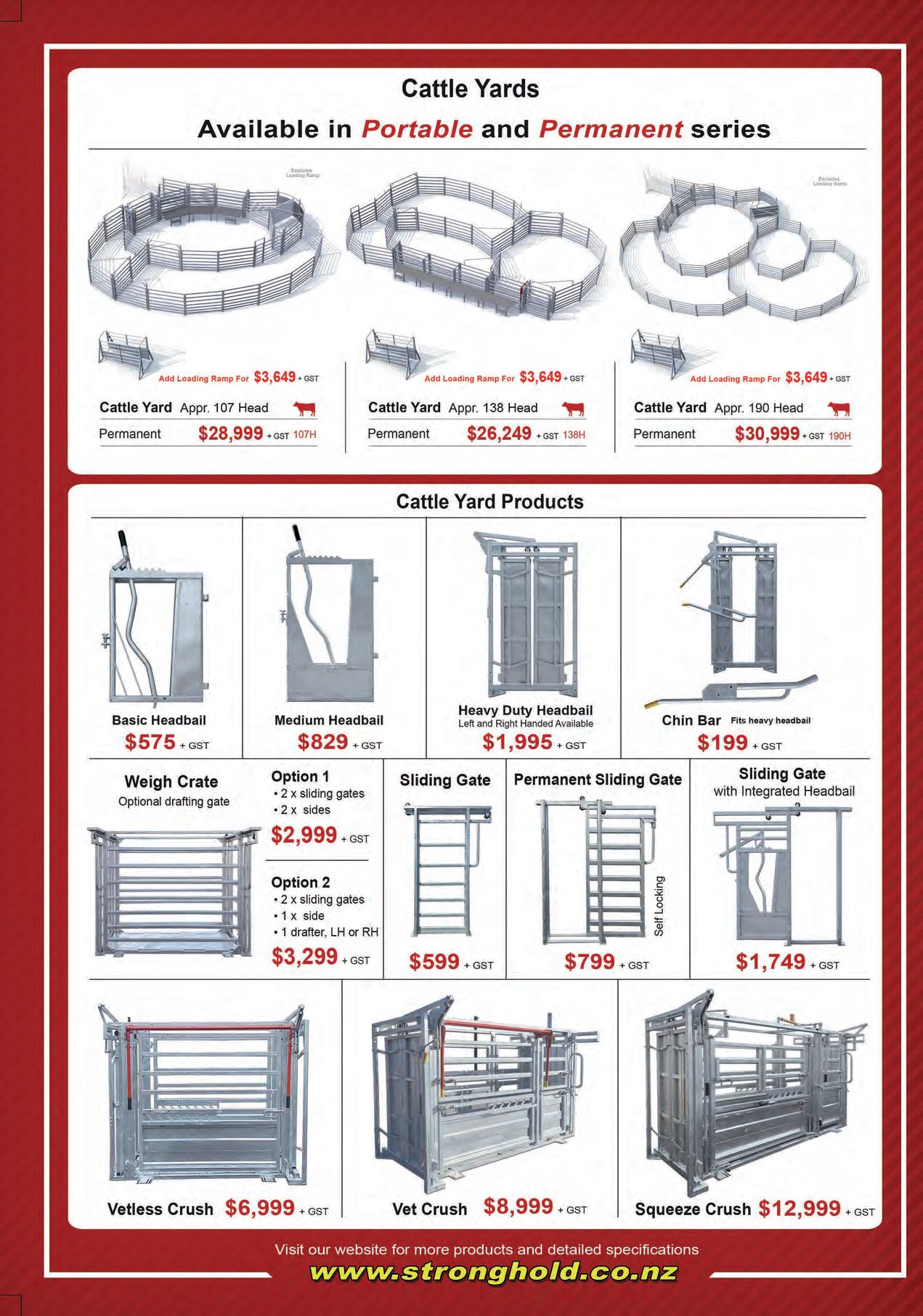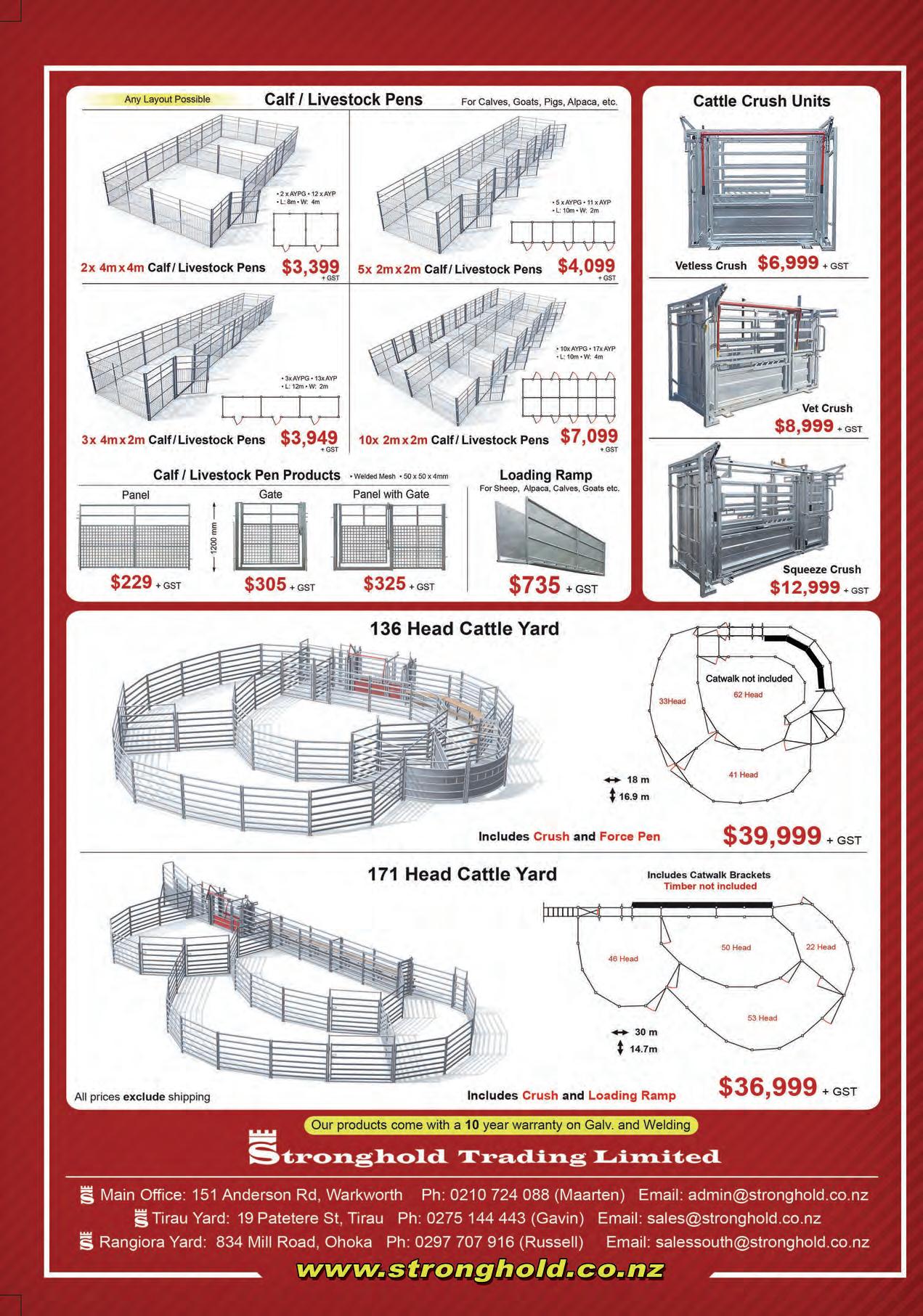Fonterra confirms a record year
Hugh Stringleman NEWS Fonterra

FONTERRA filed a strong set of results for the 2022 financial year to stay on strategy to achieve its own targets for 2030.
Dairy farmers should be delighted: the co-operative delivered a record $9.30/ kg farmgate milk price and maintained profitability on par with FY21.
It delivered earnings per share of 35c, right at the top end of a 25c to 35c guidance range.
The total dividend of 20c a share means farmers received $9.50, $1 more than ever before.

Dividend, earnings and profit were all similar to FY21, in itself a performance achievement given the very high milk input costs for value-add products in Foodservice and Consumer goods.
Early in the new season, Fonterra is forecasting a repeat performance in FY23, including a $9.25 midpoint farmgate milk price and 45 to 60c a share normalised earnings.
In what was otherwise a predictable profitable result, two surprises were the $1 billion increase in net debt and the renewed intention to keep Fonterra Australia intact and in full New Zealand ownership.
The possible balance sheet effects of both were outlined by chief executive Miles Hurrell, who said the short-term increase in working capital should unwind as large inventory increases at balance date are sold.
Late-season milk, factory constraints and shipping disruption caused delays, he said.
But without any proceeds from an Australian full or partial selldown, Fonterra’s promise of $1b capital return to shareholders by FY24 has been compromised.
“Australian plays an important role in our consumer strategy with common and complementary brands and products as a destination for NZ milksolids,” Hurrell said.
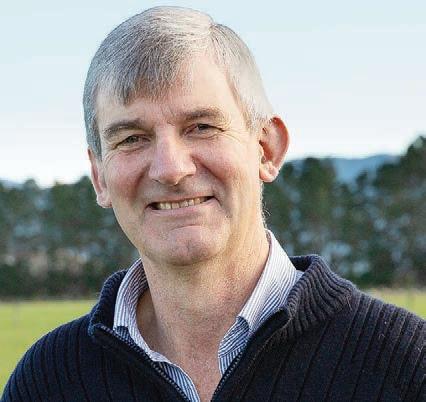

“The business is going well and it will play a key role in helping us to get to our 2030 strategic targets.”
The sale process for Soprole in Chile is progressing and the outcome, plus the debt and earnings levels, will determine the amount of any capital return, Hurrell said.

Two and a half years into his tenure as chief executive, Hurrell said it is still early days in the shift from reset to growth.
“We made good progress in implementing our strategy to increase the value of every drop of milk and deliver higher returns.”
Headwaters thrives on the fat of the land
Headwaters looks to scale up, using science, genetics and farming partnerships to bring fatter, tastier lamb to tables around the world and more value to its breeders and finishers.
Zanda award finalists found

Six young professionals from Australia and New Zealand have been named finalists for the Zanda McDonald Award. One will be chosen from each country to receive a tailored mentoring package.
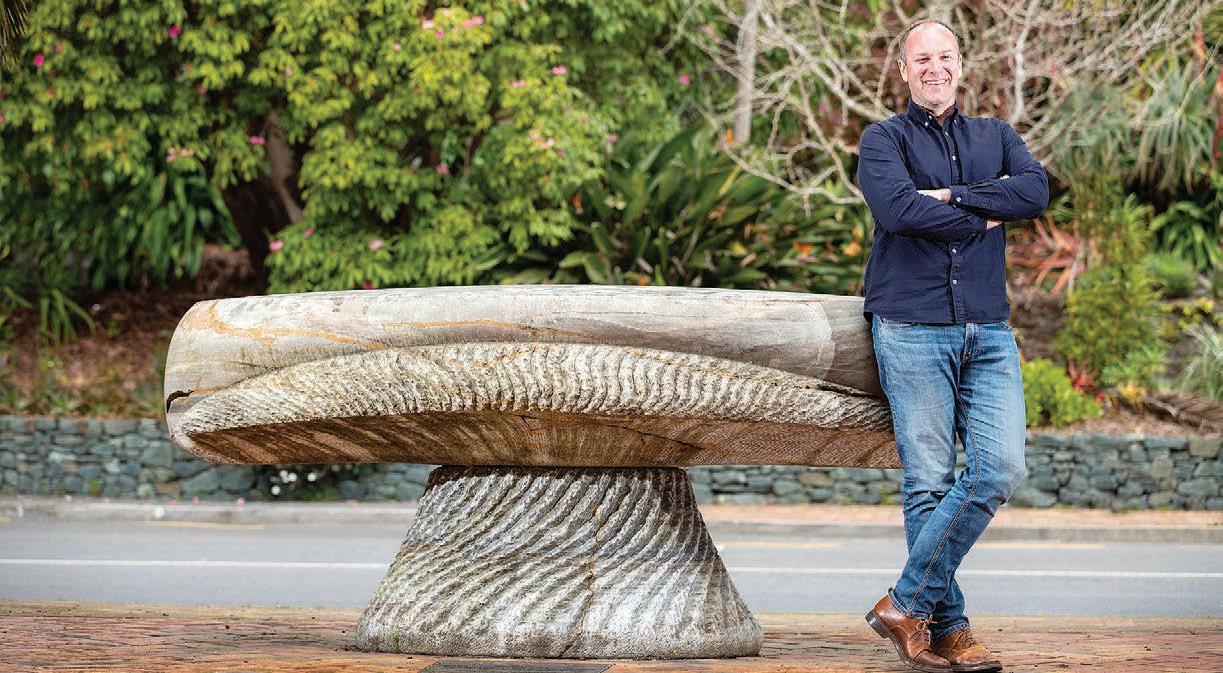
July extreme weather insurance claims hit $43.7 million, prompting calls for action on climate
Taking you back to where it all began.
Win^ a trip for two to Sweden with Väderstad and Norwood.
Simply purchase any piece of Väderstad equipment through Norwood by 31 December, 2022 and be in to WIN^.
^T’s & C’s apply 1
PEOPLE 32
PEOPLE 13 The government introduces planning controls to protect New Zealand’s most productive land and soils. POLITICS 8 Farming leaders say voters should elections.topics,infrastructure,considernotpopulistwhenvotinginlocal POLITICS 14
change impacts. NEWS 17 Vol 20 No 37, September 26, 2022 View online at farmersweekly.co.nz $4.95 Incl GST Dairy focus in questionedIndia 7
MORE: P4, 5
EDITORIAL
Bryan Gibson | 06 323 1519 Managing bryan.gibson@agrihq.co.nzEditor
Claire Robertson claire.robertson@agrihq.co.nzSub-Editor
Neal Wallace | 03 474 9240 neal.wallace@agrihq.co.nzJournalist
Gerald Piddock | 027 486 8346 gerald.piddock@agrihq.co.nzJournalist
Annette Scott | 021 908 400 annette.scott@agrihq.co.nzJournalist
Hugh Stringleman | 09 432 8594 hugh.stringleman@agrihq.co.nzJournalist
Richard Rennie | 07 552 6176 richard.rennie@agrihq.co.nzJournalist
Nigel Stirling | 021 136 5570 nigel.g.stirling@gmail.comJournalist
Lana Kieselbach | 027 739 4295 production@agrihq.co.nz
SALES CONTACTS
Andy Whitson | 027 626 2269 Sales & Marketing andy.whitson@agrihq.co.nzManager
Steve McLaren | 027 205 1456
Auckland/Northland Partnership Manager steve.mclaren@agrihq.co.nz
Jody Anderson | 027 474 6094
Waikato/Bay of Plenty Partnership Manager jody.anderson@agrihq.co.nz
Donna Hirst | 027 474 6095
Lower North Island/international Partnership donna.hirst@agrihq.co.nzManager
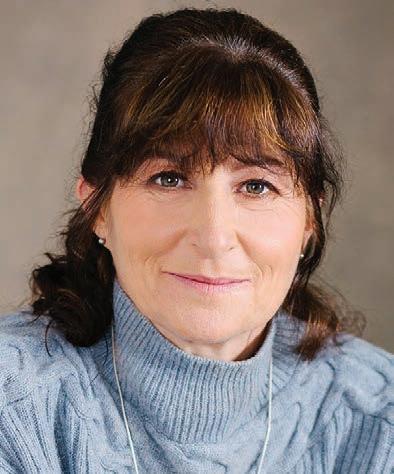
Grant Marshall | 027 887 5568 South Island Partnership grant.marshall@agrihq.co.nzManager
Debbie Brown | 06 323 0765
Marketplace Partnership Manager classifieds@agrihq.co.nz
Grant Marshall | 027 887 5568
Real Estate Partnership realestate@agrihq.co.nzManager
Andrea Mansfield | 027 602 4925
National Livestock livestock@agrihq.co.nzManager
PUBLISHERS
Dean and Cushla Williamson
Phone: 0800 85 25 cushla.williamson@agrihq.co.nzdean.williamson@agrihq.co.nz80
Farmers Weekly is Published by AgriHQ PO Box 529, Feilding 4740, New Zealand Phone: 0800 85 25 80
Website: www.farmersweekly.co.nz
ISSN 2463-6002 (Print)







ISSN 2463-6010 (Online)
News in brief
Worm
A new pesticide to combat parasitic worms in carrots, kūmara, parsnips and potatoes has been approved for use in New Zealand.Adama NZ said Nimitz will be an important tool to ensure the economic viability of the crops. The product contains the active ingredient fluensulfone – new to NZ but approved for use in Australia, Canada, Japan, the United States, India, and
Brazil.Callaghan
Innovation has appointed Stefan Korn chief executive. He has been the government innovation agency’s chief product officer since 2021 and stepped in as interim chief executive in July after Vic Crone left the job.
Holding a PhD in neural networks/ artificial intelligence and an MBA in international business, Korn was previously CEO of Creative HQ in Wellington.
Grahame Morton has been named New Zealand ambassador to China. He is a senior diplomat with the Ministry of Foreign Affairs and Trade and has served as high commissioner to India, principal adviser on the Americas and Asia, and as the divisional manager of the North Asia Division. Morton will take up his new role in December 2022.
MorenamedChinaNewapprovedpesticidebossatCallaghanambassadoreyesinthesky
The services of the Southern Positioning Augmentation Network (SouthPAN), a world-leading satellite positioning service in partnership between NZ and Australia, will available in the next few weeks.
It will make positioning services accurate to as little as 10cm without the need for a mobile phone signal or internet, helping to drive innovation on farms, among other things.
Back in 1860, exporting meat to the other side of the world seemed about as easy as nailing gravy to the ceiling. But a few determined kiwis took the bull by the horns and now our grass-fed beef and lamb is sought-after all around the globe.
At AFFCO, we see the same pioneering spirit alive and well in farmers today. We’re playing our part too – exploring every opportunity to take New Zealand’s finest farm-raised products to the world.
New Zealand’s most trusted source of agricultural news and information
WWW.AFFCO.CO.NZ 0800 233 2669 our nothing’sspiritpioneeringtellsusoutofreach WAVE200472 AFFJ200472 NZ Farmers Weekly Strip Ad FA.indd 1 24/08/22 3:22 PM 2
Contents
PRODUCTION
ADVERTISING MATERIAL Supply adcopy@agrihq.co.nzto: SUBSCRIPTIONS 0800 85 25 subs@agrihq.co.nz80 PRINTER Printed by Stuff Ltd Delivered by Reach Media Ltd AdvertiseGet in touch LOCAL HEROES: As animal health multinationals continue to exit New Zealand, limiting product choice, there will be room for local companies to step in and develop products to meet local needs, says BioTech New Zealand executive director Zahra. STORY P12 News . . . . . . . . . . . . . 1-26 Ag&Ed . . . . . . . . . . . . . 27 Opinion . . . . . . . . . 28-31 People . . . . . . . . . . . . . 32 Technology . . . . . . . . . 33 World . . . . . . . . . . . . . . 34 Real Estate . . . . . . 35-39 Marketplace . . . . . 40-41 Livestock . . . . . . . . 42-45 Markets . . . . . . . . . 46-51 Weather . . . . . . . . . . . . 52
Carr targets ‘plant and pollute’ offsets
farmland suited to livestock.
OMENTUM appears to be building for a change in the use of exotic forestry to offset carbon emissions –something Climate Change Commission chair Dr Rod Carr calls “plant and pollute”. Reforming the Emissions Trading Scheme (ETS) to reduce the ability of emitters to offset their emissions through carbon credits also had the broad support of political parties attending this week’s Climate Change & Business Conference in Auckland.
If the only way we get there [to carbon net zero] is by planting trees and the only way we stay there is by planting more trees, then we are not meeting our targets.
Rod ClimateCarrChange Commission
Carr was emphatic that unless changes are made to the ETS, the scheme will not be able to play its intended role in reducing gross emissions.“Wearenot there yet. The government has time to address this matter but needs to do so urgently in consultation with landowners, foresters and those who need to acquire units for offsetting.”Speaking at the Auckland conference, Carr told more than 500 people that the ETS as it currently operates is inconsistent with New Zealand’s long-term goal of being net carbon zero from 2050.“Ifthe only way we get there is by planting trees and the only way we stay there is by planting more trees, then we are not meeting our targets.”Inearlier advice to the government, the commission found the ETS did not distinguish between carbon removal by forestry and reduced emissions, which encouraged new plantation forestry rather than reducing gross emissions.Italsourged the government to clarify what role the ETS will
have, if any, in acknowledging offshore mitigation, saying it is essential the government allows this.Inaddition, the commission is advocating limits to the number of NZ Units available for auction through the ETS and the raising of the trigger prices at which the
government releases more units to try to contain the price of NZ Units.The use of exotic forests to generate carbon credits so companies can offset their emissions has been criticised by farming groups for inflating property values and removing
Using biological offsets is being viewed globally with scepticism but Carr said any change to the ETS must respect property rights and provide certainty and confidence.
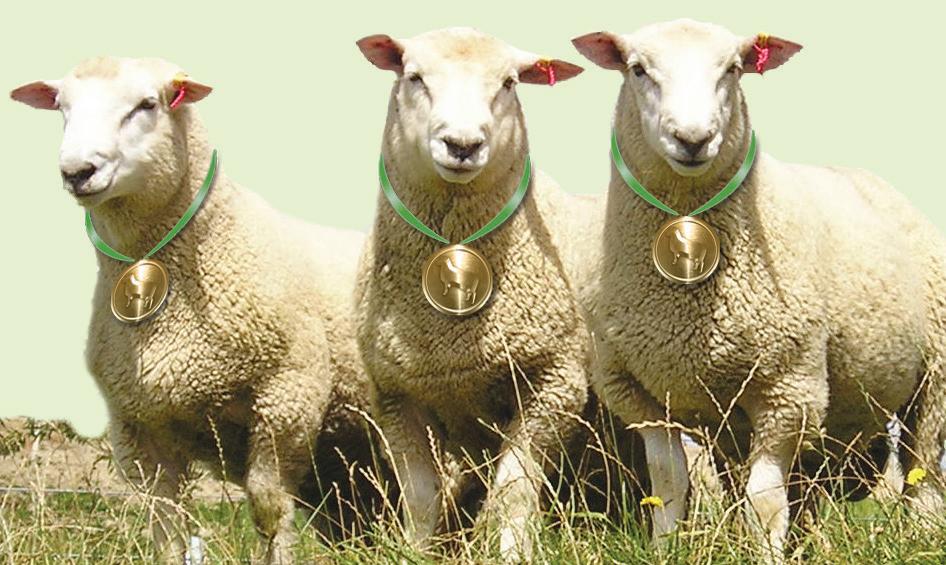
A political panel also revealed doubts about using trees to offset emissions.TheNational Party’s Climate Change spokesperson, Scott Simpson, said its forestry policy will be released in the coming weeks, but he believes there are questions about the social licence and effectiveness of allowing tree-planting for offsetting emissions.ACT’sSimon Court said NZ businesses should be allowed to offset their emissions by planting overseas, an option that would have environmental benefits in poorer countries while also preventing carbon leakage, forcing NZ production out of business only to be replaced by less efficient production overseas.
The Green Party is seeking a moratorium on carbon forestry. Spokesperson Julie Anne Genter said rules have not kept pace with planting.
Growing support for emissions trading reform
MNeal Wallace NEWS Forestry Neal Wallace NEWS Forestry
THE head of a key carbon and commercial forestry player agrees that New Zealand cannot plant its way to carbon neutrality.
Colin Jacobs, the manager of investment bank Lewis Tucker, which administers the Forest Partners forestry fund and Dryland Carbon, concurs with the Climate Change Commission that NZ must start cutting rather than offsetting emissions.Forestrywill simply buy time while emitters make changes to
their business, Jacobs said.
Buyer pressure for farmland will be reduced by changes that raise the bar that foreign forestry investors must clear to buy land, the availability of seedlings, rising establishment costs and growing uncertainty about where the carbon price will end up in the long term, Jacobs said.
A more sustainable future is partnering with farmers to plant suitable areas of farmland into forestry for both carbon and commercial harvest.
He said that while the Emissions Trading Scheme (ETS) has established a price for carbon, it
has not addressed the emissions problem and therefore needs to be changed.TheNZ carbon price has hit $84/tonne but Jacobs said that, in part, is being driven by speculation that the price will continue to climb.Asemissions reduce, he said, the need for offsetting trees will decline. It is therefore uncertain the NZ Unit price will rise to the heights some have predicted.“Whenyou look over time, and if we back ourselves to do reduce emissions, in the long run the carbon price should be lower
because total carbon emitted into the atmosphere will be less so we will not need as much forestry.”Professor Euan Mason of the University of Canterbury’s School of Forestry agrees with Climate Change Commissioner Rod Carr that changes are needed to the ETS to reduce emissions.



“If people are buying forestrybased carbon credits [NZ Units], someone has reduced carbon equivalents that they are putting into the atmosphere, so they have cleaned up your mess.
He has issues with the government issuing new NZ Units,
saying they are a licence to pollute.
“When you purchase credits at auction, they don’t represent anybody cleaning up the atmosphere. They are no better than the fraudulent credits that came from Ukraine and Russia, which were previously traded
freely.”Hesaid he wants the ETS reformed so that it drives emission reductions – though, he said, trees do give industry time to adjust to a lower emitting structure.
Mason said he accepts that a rising carbon price has significant social issues for farmers and rural communities.
Higher Faster Stronger
CHANGE: Climate Change Commission chair Dr Rod Carr is adamant that unless changes are made to the ETS – particularly when it comes to offsets through exotic forestry – the scheme will not be able to pull its weight.
www.wairererams.co.nz | 0800 924 7373
•
•
Like their Commonwealth Games counterparts, Wairere rams are supreme athletes that produce: Higher conception rates Faster growth rates Stronger constitution 3 FARMERS WEEKLY – farmersweekly.co.nz – September 26, 2022News 3
Farmers gain most of Fonterra’s record revenue
Hugh Stringleman NEWS Fonterra

FONTERRA maintained net profit in the 2022 financial year while passing back to its farmer-suppliers in the farmgate milk price 90% of the increased revenue, which was up $2.3 billion or 11% to $23.4b.

The milk price was up 23% or $1.76 from $7.54/kg in FY21 to $9.30 across 1478 million kilograms in FY22.
Milk collection was down 4% compared with the season before.Farmers’ share of the total revenue increased 18% to $13.7b, although some remains to be paid out in monthly wash-up payments.Normalised profit after tax was $591 million, up just 1%, while total group normalised earnings before interest and tax were up 4% toTherefore,$991m. normalised earnings per share were up 1c to 35c and directors decided to maintain total dividend at 20c a share.
Final cash payout for farmers is $9.50/kg, a record for Fonterra at $1 more than in 2013-14.
Higher product prices delivered an additional $2.52 for each kilogram of milksolids processed, reduced by 11c by the effect of lower milk volume, 48c thanks to foreign exchange and 17c due to inflationary pressures on cash costs.The impact of foreign exchange was the equivalent of a US2c increase to US68.8c to the NZ dollar across the board for Fonterra, after all its hedging.
Chief executive Miles Hurrell said the strong set of results came out of decisions made on product mix, market diversification, quality products and a resilient supply chain.While total group revenue rose to $23.4b due to higher product
prices, sales volume decreased due to short-term shifts in demand and ongoing shipping and supply disruptions.Groupoperating expenses were up 7% to $2.4b and $1.2b additional inventory remained at the July 31 balance date, though 88% of that inventory was contracted.Thesales had been made and the sale price agreed but the products had not been shipped at balance date.Hurrell said the reasons for the inventoryhigher-than-normalincludedstronger milk collections towards the end of the season coinciding with factory constraints, short-term impacts on demand and shipping disruptions.Thehigher inventory flowed into greater working capital and was
reflected in the net debt position at year end.
Net debt was $5.3b, up $1b, and a reversal of the trend towards lower debt since Fonterra’s horror financial year in 2018-19.
improve as our working capital returns to normal levels,” he said.“Even with the higher working capital, our return on capital has increased from 6.6% to 6.8%, as a result of the improvement in our earnings.”Non-reference products like cheese sold very well during the second half of the financial year, relative to the reference products, which are milk powders, butter and anhydrous milk fat.
Earnings from ingredients jumped a huge 150% to $916m, a larger portion of that coming in the second half.
financial officer Marc Rivers said.
Just under half of all milksolids collected went into core ingredients while sales on the Global Dairy Trade platform reduced from 25% of the total to 24%.The share for Foodservice went up 1% to 13%, active living also up 1% to 6% and Consumer products were down 1% to 8%.
The average whole milk powder price in the FY22 season was 21% higher than in FY21 at US$4019/ tonne
The debt/earnings ratio increased to 3.2x from 2.7x and the gearing ratio increased from 38.5% to 42.4% at year end.
“We expect these measures to
“We were able to use the strength of our balance sheet to make the higher-value, nonreference products, and carry higher inventories at year end rather than sell in haste,” chief
Operating expenses for Fonterra increased by 7% to $2.4b due to inflationary pressures, supply chain disruption and impairment of some Asian brands, mainly Anlene and Anmum.
Fonterra took another $80m hit in Sri Lanka because of devaluation of the rupee.
We’re online most trusted source of daily agricultural news and information is now a website.
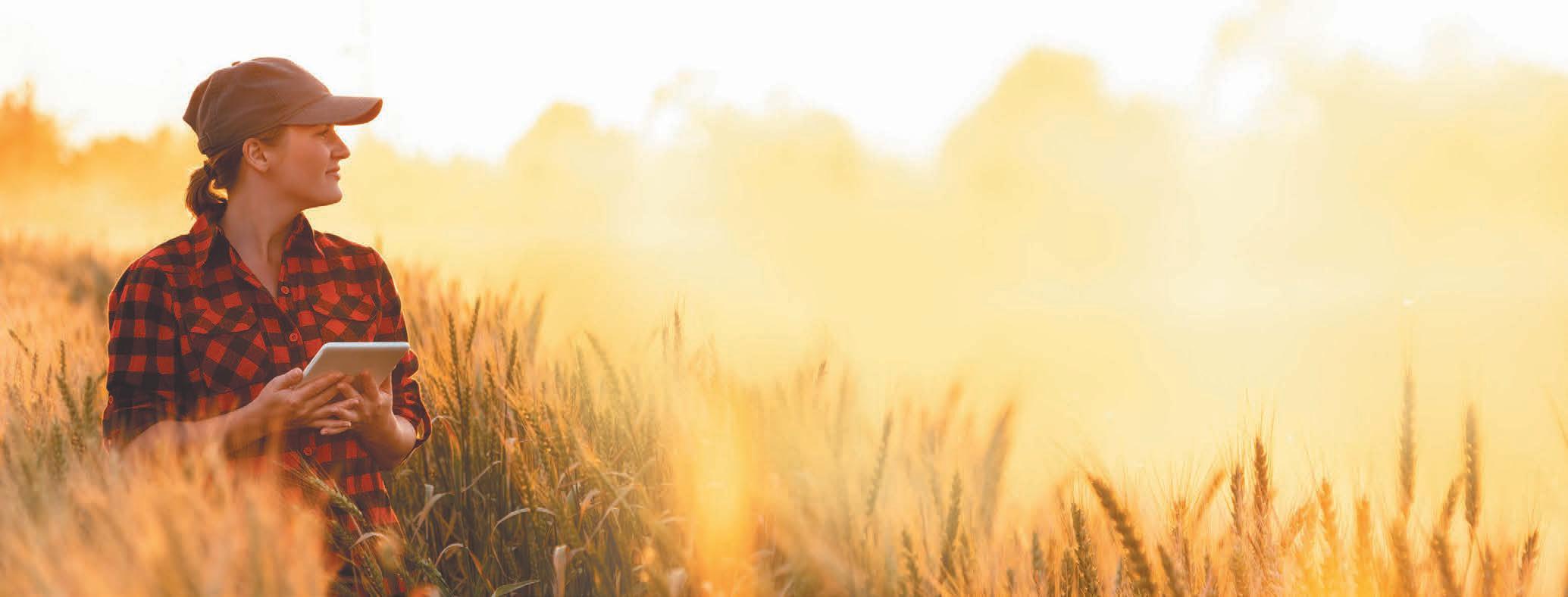
GOOD NUMBERS: Fonterra’s full-year report presentation had a happy tale to tell.
We were able to use the strength of our balance sheet to make the highervalue, inventories.productsnon-referenceandcarryhigher
Marc FonterraRivers
4 farmersweekly.co.nz/everydayfarmersweekly.co.nz
NZ’s
FARMERS WEEKLY – farmersweekly.co.nz – September 26, 2022 News4
Milk price forecast nudges double digits
Gerald Piddock NEWS Fonterra
FONTERRA has retained its milk price forecast for the 2022-2023 season, announcing a range of $8.50–$10/kg MS with a midpoint of $9.25/kg MS.
It has also forecast an earnings guidance of 45-60 cents per share in announcing its annual results for the 2021-2022 year.
Chief executive Miles Hurrell said the longer-term outlook for dairy remains positive.
The $9.25/kg MS mid-point forecast reflects constrained supply – as growth in key milkproducing regions around the globe is expected to remain low – as well as a continued strong international demand for dairy.
To respond to the ongoing expectations of customers and communities for more sustainable products, we have continued to reduce our greenhouse gas emissions, and transition away from the use of coal.
Miles FonterraHurrell
“It’s great to be starting the year with an uplift in the earnings guidance range. We are operating in relatively uncharted waters with a particularly volatile market and the wide earnings range reflects that risk,” Hurrell said.
He said it was a great set of results with a “fantastically high milk“That’sprice”.great for our farmer
owners, but at the same time they are experiencing significant inflationary pressure on farm.”
Asked how he would rate the results from one through to 10, Hurrell said they are “at the top of that range”.
In the medium-term, the co-op expects to see an easing in some geopolitical events, namely the covid-19 lockdowns in China, the Ukraine war and the economic challenges in Sri Lanka.
“We continue to monitor a number of risks. The strength of our balance sheet means we remain in a strong position to weather uncertainty and market volatility.“Ourability to refocus our product mix through our diverse and flexible operations footprint, means the co-op’s milk will continue to be delivered to wherever the most value can be obtained for our farmer owners.”Ayearon from announcing its long-term strategy, Hurrell said he is pleased with the progress Fonterra is making to drive greater customer value and meeting the increasing demand for sustainable dairy and innovative nutrition and science solutions.
“It’s early days but we are making good progress in putting in place the necessary building blocks to achieve our 2030 goals.”
Over the past 12 months Fonterra has been working through how it adapts its organisational structure to accelerate progress in its strategy, he said.
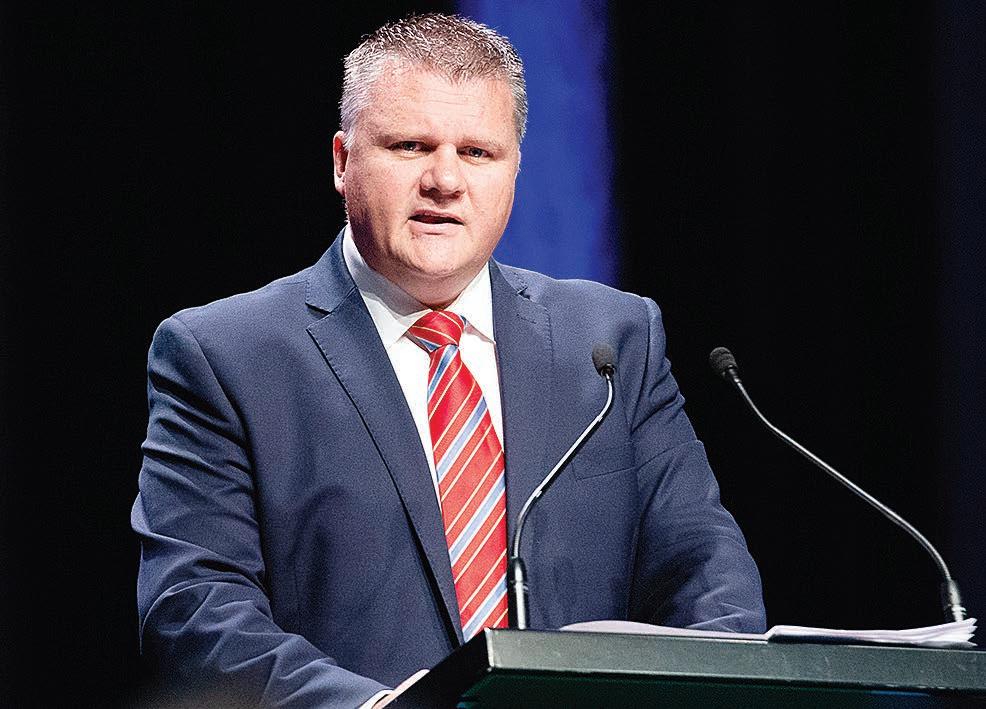
Hurrell said two new Fonterra management team roles have been established to grow the value derived from New Zealand milk.

“These two roles and the subsequent structural realignment serve to increase visibility and focus on innovation and strategic
implementation, and drive performance in these areas.”
Hurrell said he is pleased the coop has maintained its share of the NZ milk supply market in a very competitive market.
He re-iterated his view that he expects milk collections to be flat at best and likely to decline over time.“We’ve also made progress with our capital restructure and will continue to engage with government. We believe a globally competitive farmer-owned co-op is in the best interests of the dairy industry, rural communities and NewTheZealand.”SelectCommittee hearings on changes to Fonterra’s enabling legislation – affecting its capital structure – are also scheduled to begin shortly and Hurrell said the co-operative is looking forward to participating in that process.
Hurrell said Fonterra has made solid progress against some of its key sustainability targets.
Water use by manufacturing sites in water-constrained regions is 6.6% below 2018 levels and about 71% of shareholder farms have a farm environment plan.
“To respond to the ongoing expectations of customers and communities for more sustainable products, we have continued to reduce our greenhouse gas emissions, and transition away from the use of coal.
“We continue to progress the decarbonisation of our light and heavy vehicle fleets, and we have progressed the on-farm trial of asparagopsis seaweed as supplemental feed for dairy cows.”
Hurrell said Fonterra is also working with the government on an agricultural emissions partnership. “We are working through the finer details of this agreement.”
Fonterra to keep Australian business
Gerald Piddock NEWS Fonterra


FONTERRA will retain full ownership of its Australian business after deciding not to sell a stake in the company.
Speaking at the co-operative’s annual result announcement, chief executive Miles Hurrell said they had looked at a number of options for that business and decided it was in their best interests to maintain“Australiaownership.playsan important role in our consumer strategy with a number of common and complementary brands and products and as a destination for our New Zealand milk solids.
“The business is going well, and it will play a key role in helping us get to our 2030 strategic targets.”
Fonterra aims to return about $1 billion to shareholders through divestments, which had included a stake in Fonterra Australia as well as selling Chile-based Soprole.
The sale process for the South American business is well
underway, he said.
“Even though we have decided not to sell a stake in our Australian business, we are still committed to targeting a significant capital return to our shareholders and unitholders.“Theamount of any capital return will ultimately be determined on a number of factors including the successful completion of the divestment programme as well as our ongoing debt and earnings levels.”
Hurrell said the review of the Australian business was to determine what was the right ownership structure to enable the business to move into its next phase.
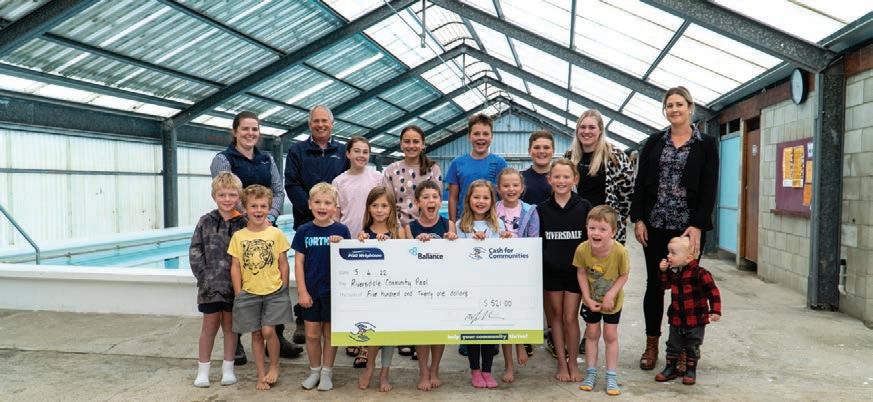
That review was finished and it determined that Fonterra could move forward into that phase as owners, he said.
“We looked strategically first and foremost and said, ‘Where does this business need to go to get the return we expect and can we achieve that?’ That’s the piece of work we did and we concluded that we will maintain ownership.”
GOOD YEAR: Fonterra chief executive Miles Hurrell says this is a great set of results with a ‘fantastically high milk price’.
Purchase fertiliser and help your community *Open to PGG Wrightson Ltd account holders only. Excludes Lime and Gypsum. See full terms and conditions at cashforcommunities.co.nz Find out more at cashforcommunities.co.nz Support your local community when purchasing your spring fertiliser. Purchase Ballance Agri-Nutrients fertiliser between 1 September and 30 November 2022 and $1 for every tonne purchased will be donated to your chosen qualifying cause.* 5 FARMERS WEEKLY – farmersweekly.co.nz – September 26, 2022News 5
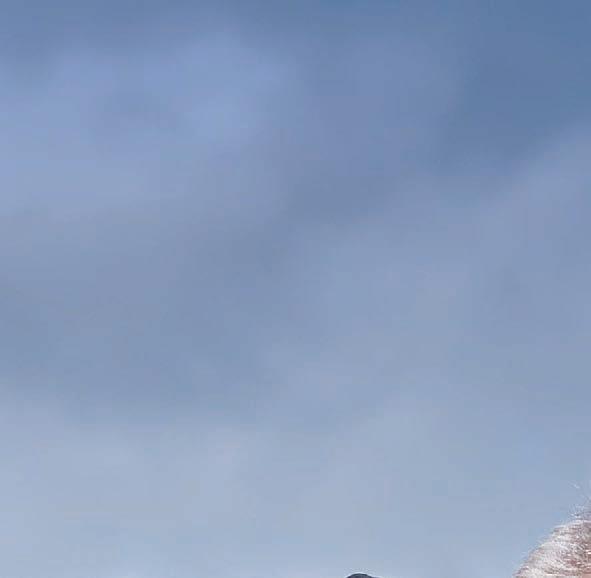




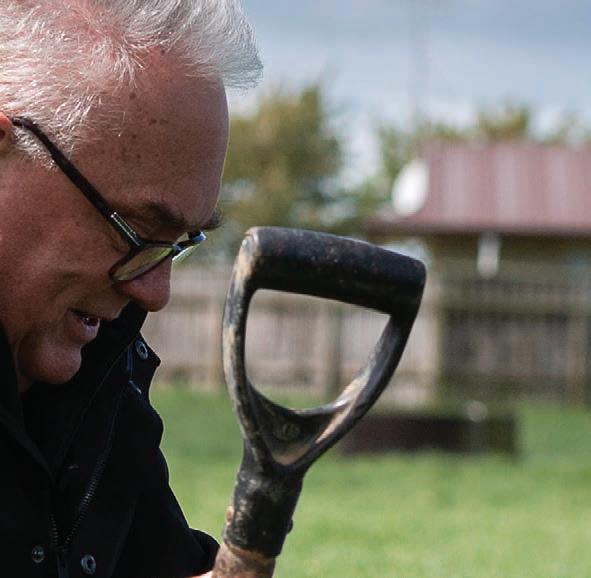
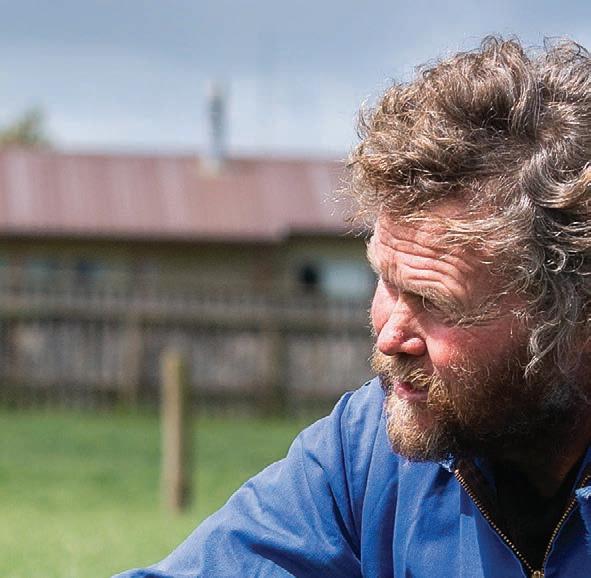




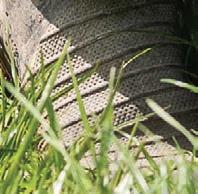



Grow advantageyour Smarter farming for a better New Zealand® You know your farm. We know our nutrients. And we’re driven to help you achieve your productivity and sustainability goals based on best practice soil science, technology, and innovation. Measure. Monitor. Manage. Here’s how we can help you gain ground for spring –rav.link/advantage 0800 100 123 ravensdown.co.nz RAV-26SEP-FW 6
AGL questions dairy focus in India talks
Nigel Stirling MARKETS
THE government is under pressure to knock dairy market access down its list of trade negotiating priorities as it tries to reinvigorate stalled trade talks withDamienIndia.O’Connor last week travelled to New Delhi in the first visit there by a New Zealand trade minister in two and a half years – and nearly seven years since officials from the two countries last sat down for formal negotiations.Meanwhile, in April this year Australia signed a free trade agreement with India despite starting negotiations a year after NZ, in 2011.
An aggressive diplomatic push along with its readiness to shelve demands for increased access for its dairy products is understood to have helped clinch the deal for Australia.
Tariffs of 30% on Australian sheep meat will be scrapped when the deal comes into force, and apples and wine exports will also benefit.Invercargill-based meat exporter Alliance Group, which has struggled for a decade to turn the star power of its joint venture with Black Caps legends-turned meat marketers Stephen Fleming, Sir Richard Hadlee and Daniel Vettori’s Quality NZ into sales in the cricket-mad Indian market, now worries it is at a competitive disadvantage to its Australian rivals because it still has to pay the high tariff.

“The Aussies have got the jump on us,” Alliance Group chair Murray Taggart said.


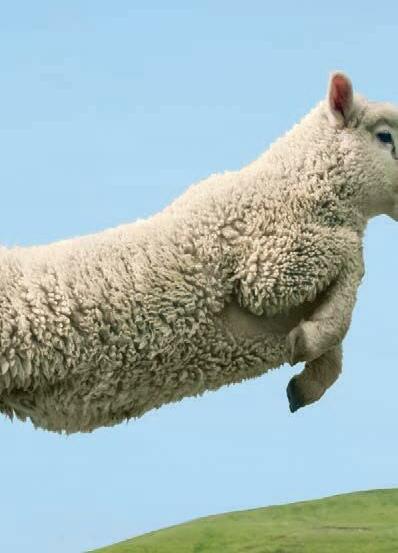

Taggart has previously criticised Prime Minister Jacinda Ardern for her unwillingness to travel to New Delhi and engage in the personal diplomacy that worked so well for theNowAustralians.heisconcerned that comments in Farmers Weekly by O’Connor ruling out following Australia’s lead and leaving dairy out of trade talks with India for now could see them continue to flounder and scupper potential gains for other export industries.
“The question we have to be asking as a country is do we negotiate a less-than-perfect free trade agreement and build confidence and relationships with Indian government and commerce and then springboard off that relationship to start having a conversation about dairy at a later time?” Taggart said.
“Because getting an agreement incorporating anything substantial in relation to dairy right now looks unlikely from our view.”
Taggart said the government set a precedent for favouring one export sector over another when it agreed to minimal gains for dairy and meat in return for better access for second-tier exports such as kiwifruit and wine in the recently concluded free trade agreement with the European Union.“Perhaps that is how we should be looking at India,” he said.
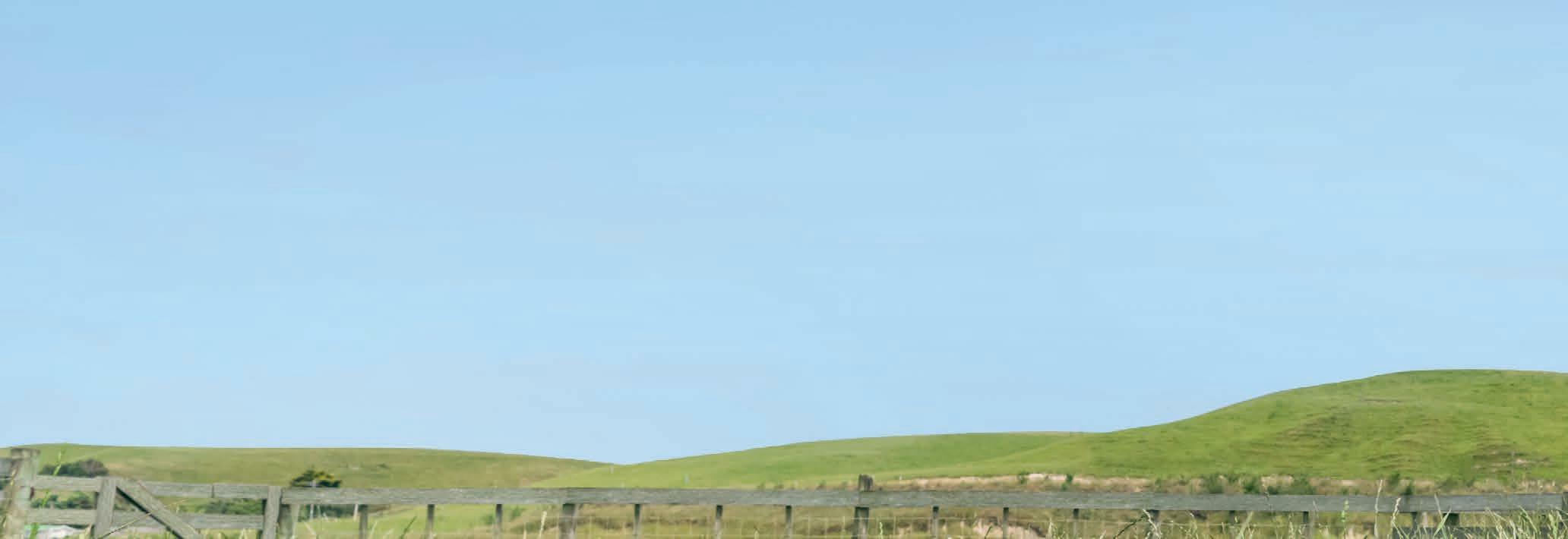
Meat Industry Association chief executive Sirma Karapeeva, who joined O’Connor with other exporters in New Delhi last week, agreed a new approach is needed to get the negotiations back on track.“The Australians do have a leg up on us in this market and so if it is possible to get back to the table and start negotiating market access for sheep meat then by all means let’s get on and do it, but
my sense is that it is not going to be easy and so maybe we need to be a bit more creative about how we do that,” she said.
Karapeeva said NZ’s longstanding approach of entering

Murray FAVOURED:AllianceTaggartGroupAlliance





into trade talks only with countries prepared to discuss access for all of NZ’s major exports may have run its
“Icourse.thinkwe may have to have a look at that strategy now that we have signed off the top-tier trade partners that we could do that sort of comprehensive, high-quality trade agreement approach with.

“It may be an opportunity to look at how we build the foundations of a free trade agreement with partners like India.
“Do we stage them or do we do something else? I don’t know.
“It is an open question but my sense is that the current approach to trade negotiations is not really going to get us much further.”

Do we negotiate a less-than-perfect free trade agreement ... and springboard off that relationship to start having a conversation about dairy at a later time?
Group chair Murray Taggart says the government set a precedent for favouring one sector over another when it negotiated the European Union free trade agreement.
NEW DIRECTION: Sirma Karapeeva says NZ’s longstanding approach of entering into trade talks only with countries prepared to discuss access for all of NZ’s major exports may have run its course.
1. Usach, I. Martinez, R. Festini, T. Peris, J. E. (2019) Subcutaneous Injection of Drugs: Literature Review of Factors Influencing Pain Sensation at the Injection Site. Adv Ther 36:2986–2996. 2. Bingham, C. M. & Hodge, A. (2022) Lamb mortality and clostridial disease. New Zealand veterinary Journal 70 (1) 49-54. Zoetis New Zealand Limited Tel: 0800 963 847, www.zoetis.co.nz. ULTRAVAC is a registered trade mark of Zoetis. ACVM No.A3585, A6926, A10191, A11606 and A11607. Ultravac clostridial vaccines are concentrated into a 1ml dose for sheep. Research shows smaller dose volumes are less painful when injected1. With fewer pack changes needed, it’s also much less of a pain for you. Ultravac vaccines protect ewes and lambs against the key clostridial diseases. New Zealand trialwork showed vaccination reduced lamb deaths from docking to pre-lamb by 23%2 Choose Ultravac. Proven in the paddock. A little Ultravac® goes a long way. Find out more at sheepsolutions.co.nz Only available from your vet. 7 FARMERS WEEKLY – farmersweekly.co.nz – September 26, 2022News 7
Trade
Policy to protect soils may have gone too Ilandownersfar,say
T HAS taken a decade of lobbying by growers, but the government has finally introduced planning controls to protect New Zealand’s most productive land and soils.
The government has released its National Policy Statement for Highly Productive Land (NPSHPL) to protect the country’s best soil – on land classes 1, 2 and 3 – from housing subdivision and development, and keep it in food production.HortNZchief executive Nadine Tunley said her organisation has long advocated for government policy that recognises the importance of the country’s best soils, and ensures the land is used for what it is best for –producing healthy vegetables and fruit.“All along we have said that with good planning New Zealand can have fresh vegetables and fruit, and houses,” she said.
The NPS-HPL will require councils to identify, map and manage highly productive land to ensure it is available for growing vegetables, fruit and other primary production, Environment Minister David Parker said.
Agriculture Minister Damien O’Connor said in the past 20 years, about 35,000ha of NZ’s most productive land has been carved up for urban or rural residential development, and a further
170,000ha has been converted to lifestyle blocks.

The NPS-HPL is complementary to the National Policy StatementUrban Design, which Parker said will reduce demand for outward urban growth on highly productive land.“This recognises that using land for primary production needs to occur within environmental limits and ensures that all land can be used and managed to best effect,” heInsaid.limited cases, councils will still be able to rezone highly productive land for urban housing if less-productive land is not available, or if certain tests can be met.“However, the NPS-HPL will introduce strong restrictions on the use of highly productive land for new rural lifestyle developments.”AucklandCouncil general manager of plans and places John Duguid said NPS-HPL gives Auckland Council three years to map highly productive land and include it in the council’s Unitary Plan.“We will use the existing New Zealand Land Resource Inventory mapping and council’s FARMLUC dataset as a base to beginTunleyfrom.”said protecting the country’s best soils is only part of the battle HortNZ is waging to ensure growers can remain in business and consumers have freshly grown fruit and vegetables.
“It’s no use protecting our best
land if growers cannot get access to inputs like freshwater, are bogged down with compliance, and can’t afford fertiliser or to transport their produce.
All along we have said that with good planning New Zealand can have fresh vegetables and fruit, and houses.
Nadine Tunley HortNZ
“At the same time, growers need to know they have a skilful and reliable workforce available to plant, pick and pack.”
Not all growers support the NPS. Levin-based Woodhaven Gardens managing director John Clarke
is concerned it will restrict the options of landowners to sell their farms for the best possible price – particularly if regulations and consenting make it difficult for farmers to farm.
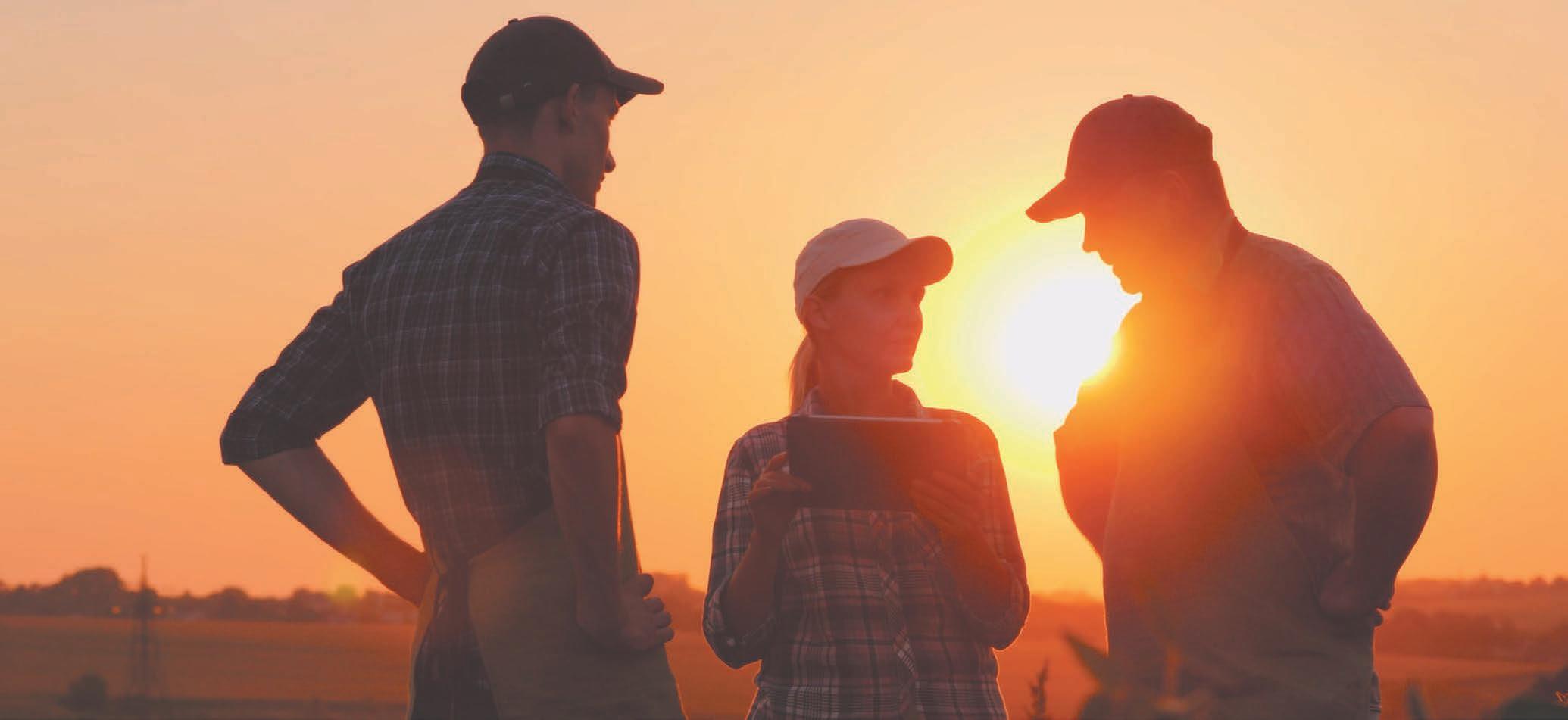
“I don’t think it’s fair. I can understand protecting the ability to grow food but we have a huge resource that can do that.”
Federated Farmers arable chair Colin Hurst said while he backs NPS-HPL’s intent, he would prefer to see the statement restricted to class 1 soils only, rather than 1,2 and“As3.it is, it will capture 14% of New Zealand, which is quite a large area.”
In comparison, NZ’s total area of class 1 and 2 land is 5.2%, according to the New Zealand Society of Soil Science.
Hurst was also concerned about
the workload it will place on regional councils.
He supported the statement’s requirements around managing reverse sensitivity. These will see local government include objectives, policies, and rules in their district plans that recognise that farming activity took place on land prior to urban development and as a result, should be allowed to“It’scontinue.giving farmers the right to carry on farming.”
The statement is trying to balance the need to house and feed people, he said. Farmers and growers want to protect their soils, but striking a balance between that and not eroding property rights is tricky – “but at a high level, we need to protect these soils because once you put houses on them, they’re lost forever”.
Meet the people behind the farm gate
Neal Wallace & Gerald Piddock NEWS Land
FENCED OFF: The new policy will require councils to map and manage highly productive land, which cannot be built on except in special circumstances.
8 FARMERS WEEKLY – farmersweekly.co.nz – September 26, 2022 News8 Subscribe on YouTube
On Farm Story is a celebration of farmers and farming - told in under five minutes.
Surge in ETS forestry registrations
THE amount of forestry land being registered under the Emissions Trading Scheme has grown massively and rapidly in the past year, according to data from the Ministry for Primary Industries.Toearncarbon credits under the scheme, forestry must be registered.Registration data shows from the beginning of 2018 until the second quarter of 2021 about 4,000ha of forestry were registered a quarter. Since then the number of hectares has increased rapidly to more than 80,000ha each quarter.
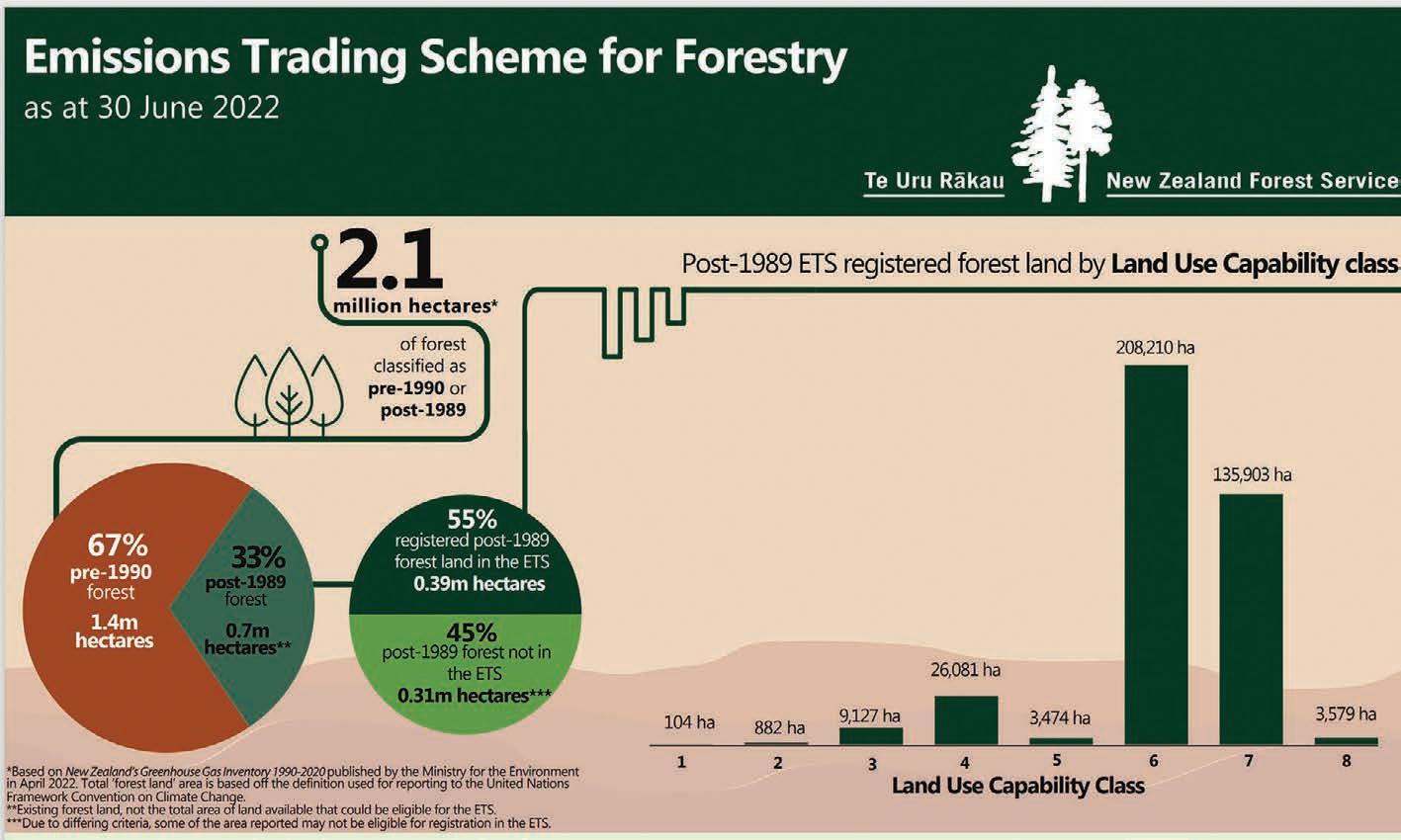
Some farming groups have raised concerns that the high cost of carbon is driving the conversion of good farming land into pine plantations, some intended to be permanent and cropped rotationally.NewZealand carbon units (NZUs) are currently trading at $83.20 on the secondary market after falling back from a high of about $88 before the last auction.Public data available from the ministry on what type of land is being planted covers up to June this year, so it doesn’t cover the most recent registrations.
It shows that unproductive land not suitable for arable farming makes up the vast majority of the land being planted and registered under the ETS.
Land types are classed from one to eight. Classes one to four are considered suitable for arable or pastoral farming; classes five to seven have serious limitations for arable farmers, but can be suitable for pasture or forestry. Class eight is generally unsuitable for any land use other than being left aside for conservation.
Of the forestry land registered under the ETS, 36,194ha is on one- to four-class land. Of this, just 104ha is class one and 882ha is class two.
Class seven is where most planting has taken place, with more than 200,000ha, followed by 135,000ha on class-eight land.The regional breakdown shows the vast majority of forestry land registered under the ETS is exotic, mostly radiata pine, but also Douglas fir and other exotic softwoods and hardwoods.
Most planting is on the East Cape and central North Island.
Over the years there have been wide swings in land-use types, from forestry to dairy pasture and then in some areas back to
forestry.Muchof this has been driven by commodity prices, with dairy conversions dwindling in the past decade.
There has been much speculation that carbon prices have become a major driver for decisions about the conversion of land into forestry.
At one point, the government was considering banning permanent pine plantations from the ETS. This was partly a result of concerns that areas of land may just be planted up to gain carbon credits and lost to any productive use.Ministers have backed down from any immediate decisions on this after pushback from landowners – including iwi businesses – over being told what to do with their land.
Currently, the government is also consulting on changes to the ETS settings after Climate Change Commission advice to tighten up the supply of NZUs through auctions and to increase the price ofTherecarbon.are complex dynamics at
play with the ETS, carbon prices and forestry.

A higher carbon price drives up the incentives to plant more forest. But more forestry also could increase the supply of carbon credits and potentially push down theTheprice.commission is also
concerned that while planting trees sequesters more carbon, it also wants actual emissions to be reduced. It fears if the emphasis moves to forestry those emissions will be harder to cut.
One analysis by secondary market trader Carbon Match estimated at the end of June the area of ETS post-1989 registered forest land stood at 386,999ha. As of the end of August, this increased to 414,002ha.
The government’s recent consultation document on ETS settings and the emissions price could have a material impact on land-use change, such as the
POOR LAND: Class seven is where hardwoods.softwoodsotherDouglaspine,mostlytheregisteredofTheclass-eight135,000hafollowed200,000ha,withtakenplantingmosthasplace,morethanbyonland.vastmajorityforestrylandunderETSisexotic,radiatabutalsofirandexoticand
conversion of farmland to forestry. It said planting commercial forestry could achieve a significant level of sequestration, with the most likely changes in the short to medium term the conversion of sheep and beef farming land to forestry.Thepaper noted the scale of such conversions and associated unit supply into the ETS over time is potentially significant in comparison with New Zealand’s gross emissions. As such, the price at which conversion to forestry becomes cost-effective could set the emissions price in NZ for many years.The commission has repeatedly urged the government to develop a credible response to the gross/ net imbalance in emissions reductions.Decisions on permanent exotic forestry in the New Zealand ETS will influence this response, officials said.
9 FARMERS WEEKLY – farmersweekly.co.nz – September 26, 2022News 9
FORESTRY REPORTS Subscribe from only $100* per agrihq.co.nz/our-industry-reportsmonth See thewoodthefortrees Be across domestic & international markets by subscribing to NZ’s most authoritative forestry analysis. * Prices are GST exclusive BusinessDesk NEWS Forestry
Hugh Stringleman MARKETS Dairy
milk powder and was close to being right.Afurther 5% across the forward curve would see physical prices at US$4000/tonne by the end of the year, where they were in December 2021.The WMP average is now $3733, up 9% since mid-August.
As the biggest-selling dairy commodity for New Zealand, WMP is underpinning the $9-plus forecasts for this season’s farmgate milk price.

Demand in key markets is firm

If NZ milk supply doesn’t hit the expected marks the market will likely keep shifting higher.
Stu NZXDavisonDairyDerivatives




but Davison is not yet convinced it is “Leaningsolid. on supply and demand fundamentals again, as our dairy season rolls on, if NZ milk supply doesn’t hit the marks expected of it at the current price points, then the market will likely keep shifting higher.”Echoing that sentiment, Westpac senior agri economist Nathan Penny said the latest GDT result is in line with expectations of a 4% lift in WMP prices.
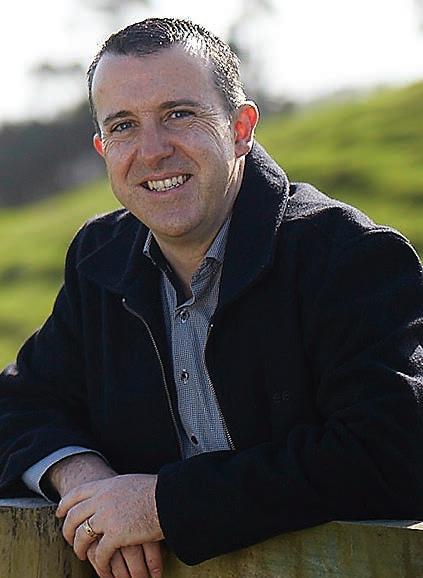


Milk supplies globally are weak right now and July, August and September in NZ are reportedly tracking about 5% down, Penny said.While NZ supply is expected to regain the 4% it lost last season, there are now clear downside risks to that forecast.
Reflecting that supply picture, along with support given by the NZ dollar, Penny said there is upside risk to his $9.25/kg milk price forecast.
Angus, Hereford push yearling prices higher
Hugh Stringleman MARKETS Bulls
ANGUS yearling bulls set a new high price mark during week three of the spring bull sales, when Stokman Stud at Rotorua made $23,000 for Stokman Resilient S265.
He was bought by Hawke’s Bay commercial farmer Peter West, a longtime buyer from Stokman.


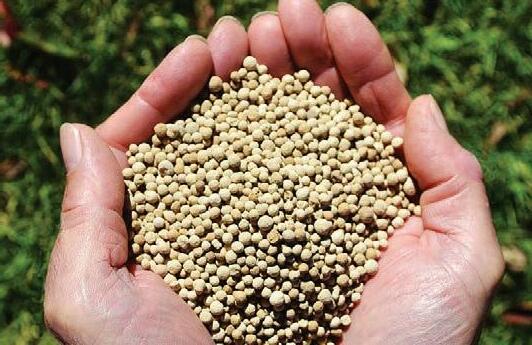
In the transfers Lot 3 was bought by Angus Peters, Brakenfield Angus, Blenheim, for $16,500, lot 11 by Stern Angus, South Canterbury, for $16,000 and lot 8 by Marie Timperley, Canterbury, forMark$15,000.andSherrie Stokman sold 94 bulls of the 97 offered for an average of $5737, compared with last year’s results of 87 sold averaging $5361.
They also sold Australian semen rights on Stokman Resilient S329 to Mandayen Angus, South Australia for $55,000 and retained
full ownership of the bull.
Lot 40, Stokman Stellar S263 was sold to Awarua Grazing for $6700 and the proceeds donated by the Stokmans to Groundswell NZ.
Earlier in the week two sales had top prices of $14,000, one an Angus stud and the other a HerefordMahutaone.Herefords at Glen Murray in northern Waikato sold Mahuta Routeburn 1059 for a top price of $14,000 to Craigmore Herefords, located near Ōhaupō, Hamilton.Mahutaprincipal John Allen said after a dry summer, autumn and early winter, his 55 bulls in the offering were 40kg lighter than where they needed to be.
“However, with good grass growth since, the bulls picked up and went into the sale in good condition.“Wehad good numbers of purchasers at the sale and highspirited bidding took place, which was a pleasure to experience.”
All 55 sold and the sale average was $4540.
On the East Coast north of Gisborne the historic Turihaua Angus stud of the Williams family also sold Turihaua S63 for $14,000 to Ratanui Angus, up at Tologa Bay.Stud manager Paul Williams said he was very pleased with the spring sale when eight two-yearolds averaged $6562, with a top price of $8000 made twice, and 26 yearlings averaged $6142.
S63 is a home-bred yearling bull with extremely good data for calving but still maintaining depth andMtwidth.Mable Angus of the Friel family at Woodville sold 20 of 25 offered with an average of $3300 and a top price of $8400 paid for Mt Mable 2104, out of Cricklewood Pandemic.Kairaumati Polled Hereford at Thames sold 26 out of 26 20-month bulls for an average of $3569.They also sold 22 of 24 yearling bulls, averaging $2940 and a top price of $4700 paid by Horizon Herefords, Taranaki.
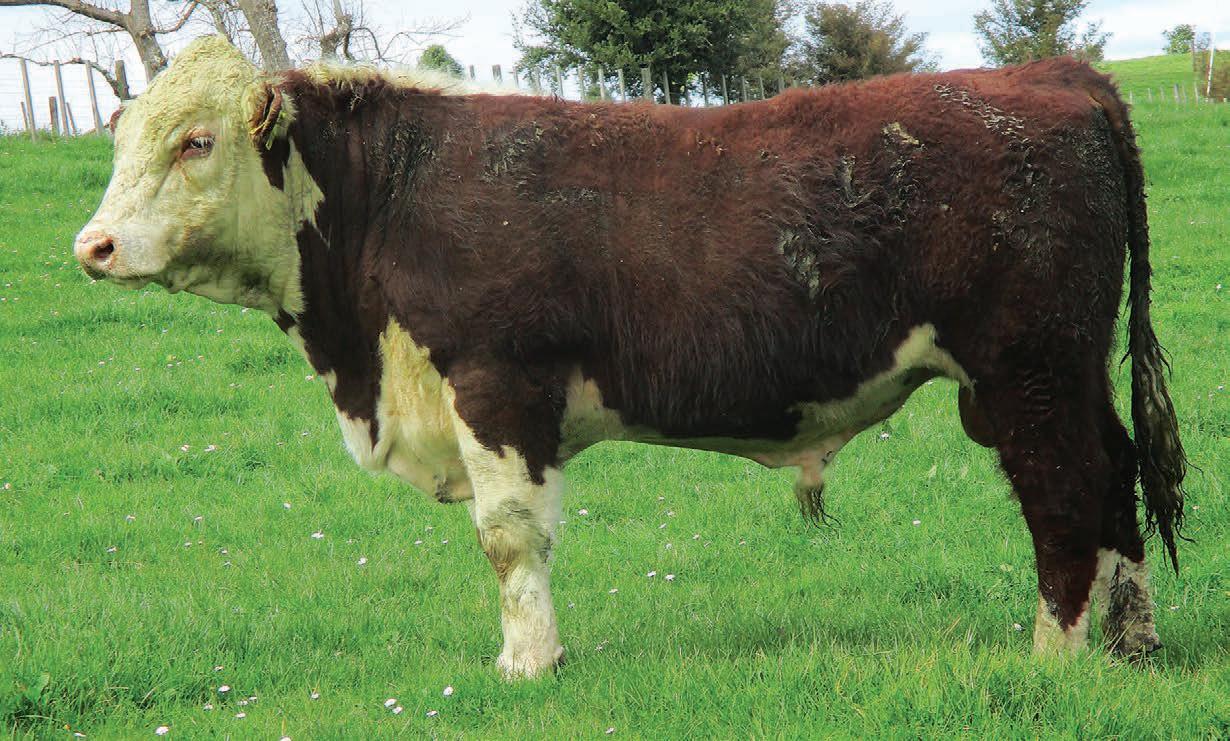 EXPECTATIONS MET: Westpac senior agri economist Nathan Penny says the GDT result is in line with expectations of a 4% lift in whole milk powder prices.
CLOSE TO HOME: Mahuta Routeburn will move down SH 1 from Glen Murray to Ōhaupō in Waikato after the Mahuta Herefords spring bull sale.
EXPECTATIONS MET: Westpac senior agri economist Nathan Penny says the GDT result is in line with expectations of a 4% lift in whole milk powder prices.
CLOSE TO HOME: Mahuta Routeburn will move down SH 1 from Glen Murray to Ōhaupō in Waikato after the Mahuta Herefords spring bull sale.
Ian Campbell 021 271 ian.campbell@omya.com5963Nevan Ofsoski 021 935 nevan.ofsoski@omya.com379 Calciprill leaves all other limes for dust! A 2-6mm lime granule made in Waikato from finely ground high purity limestone. • Cost effective • Low in dust, easy to spread • Breaks down rapidly in moisture • Can be applied using your own equipment • 95% < 75 microns www.omya.com/nz-en Application rate guide (kg/ha)* Soil type 0.5TopdressedpHincrease Direct drilled or air seeded Sand/loamy sand 300 75 Sandy/silt loam 500 125 Clay/loamy clay 625 150 10-15% organic matter 750 175 +25% organic matter 1000 200 *Omya recommends you soil test recularly and seek advice from independent agricultural professionals Look for Calciprill on LK0112858© 10 FARMERS WEEKLY – farmersweekly.co.nz – September 26, 2022 News10 GDT Tfamiliarrecoveryspringlooksto2021 HE mood of hadskimslightfollowedandinauction,roseNewmid-Augustbottomingitpathmarketsaidauctionofcommodityinmarketinternationalthedairyhaschangedapositivewayforsellers,astheresultsthelatestGlobalDairyTradeshow.NZXdairyanalystStuDavisonthemoodshiftindicatesthemightfollowthesameasthistimelastyear,whenstartedtorisesteadilyafteroutinmid-August.TheGDTindexrose16%fromuntiltheChristmas-Yearbreak.ThisyeartheGDTpriceindex2%inthesecondSeptemberafterthe4.9%riseearlierthemonth.Anhydrousmilkfatwasup4%wholemilkpowderup3.7%,bycheddarat2.1%andfallsinpriceforbutterandmilkpowder.Davisonsaidthefuturesmarketanticipateda4%riseforwhole
trainingWork-basedthatfitsyourbusiness
Our training will be relevant to the needs of business and industry. Te Pūkenga is working towards a modern, future-fit workforce for Aotearoa. Find out more at tepūkenga.ac.nz

11
Animal health product choices shrinking
 Neal Wallace TECHNOLOGY Animal health
Neal Wallace TECHNOLOGY Animal health
THE gradual exit of global animal health companies from the New Zealand market is likely to accelerate, reducing the availability of products tailored to the country’s livestock farming conditions.MasseyUniversity professor of production animal health and welfare Richard Laven said NZ will become less of a priority for animal health companies and while farmers will still have access to animal health products, they will be designed for other markets and conditions, not specifically designed for NZ.
The presence of animal health companies in NZ has diminished through mergers and acquisitions, and he expects that to accelerate as they chase more profitable markets.BioTech New Zealand executive director Zahra Champion last week raised concerns about the future of animal health products for NZ cattle and sheep conditions, warning that the three

largest veterinary pharmaceutical companies operating here are shifting their focus.
She said Elanco, Boehringer Ingelheim and Zoetis are increasingly focused on developing products for poultry, pigs and companion animals.
Laven agreed, saying these are more profitable and, in the case of companion animals, not bound by the same registration regulations.

the financial backing.
That reflects the NZ focus on sheep and cattle, creating a market that is unlike any other in the world, with small volumes of products consumed at specific times of the year.
“NZ is a big agricultural sector, but on a world scale we are small and at the end of the distribution network.”Themarket for companion animals is much more profitable, less price sensitive and easier to release products into.
Richard Laven Massey University
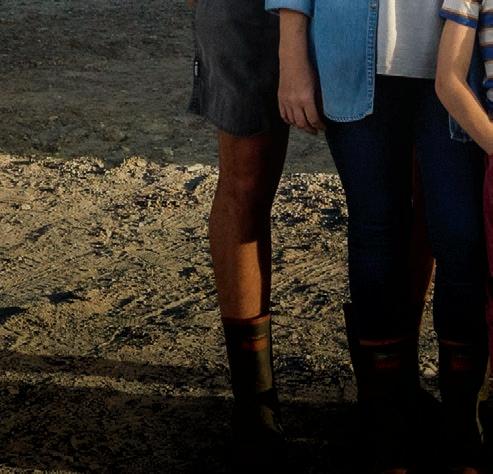
He also expects businesses will increasingly be run from offices in Australia, the United States or Asia.This will affect product development for NZ conditions and could mean commercialisationthatof research discoveries from AgResearch or universities may struggle to get

In contrast, Laven said, pig and chicken farming uses large volumes of animal health products.Champion said with NZ farming systems centered on sheep and cattle, this raises concerns about how this industry will be supported in the years to come.


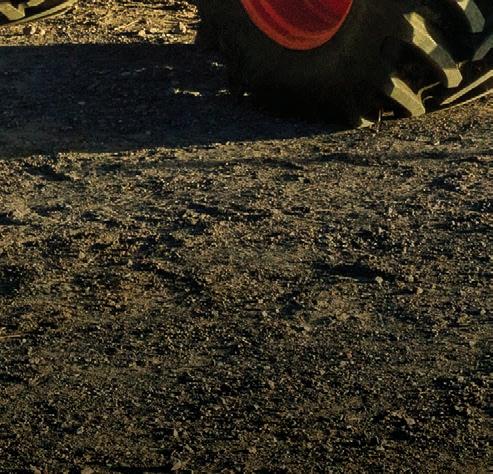
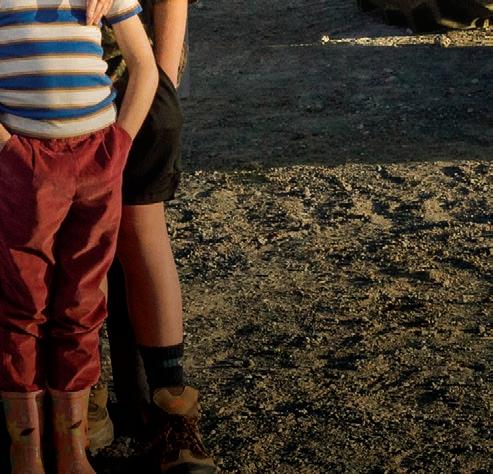
She said there is room for NZ biotech companies to grow and develop products to target local issues, and she expects the level of investment in product development in NZ to increase.
“Alleva Animal Health, a local New Zealand player in the animal health industry, is gearing up to meet this potential demand.”

The animal health industry is looking with caution at the rise of animal welfare organisations lobbying against specific farming practices and at the challenge of plant-based and alternative protein industries.
In September last year Boehringer Ingelheim announced it would cease the manufacture of locally produced livestock ruminant products from its Auckland production site by the end of this year.
“From December 2022, Boehringer Ingelheim will deliver a more targeted range of cattle and sheep products, many of which
will be produced locally by trusted contract manufacturing partners in NZ,” the company’s head of Animal Health New Zealand, Paul Fitzpatrick,Fitzpatricksaid.said Boehringer Ingelheim has been working closely with NZ veterinarians, farmers and stakeholders and will continue to significantly invest in the research and development of breakthrough therapies for the health and wellbeing of animals.
“We are committed to building on those strong partnerships and provide innovative animal health solutions into the future,” he said.
SOURCED LOCALLY: BioTech New Zealand executive director Zahra Champion says there is room for NZ companies to grow and develop products to meet local needs.
NZ is a big agricultural sector, but on a world scale we are small and at the end of the distribution network.
Something’s wrong with this picture… 12 FARMERS WEEKLY – farmersweekly.co.nz – September 26, 2022 News12
Zanda McDonald award finalists found
 Staff reporter Awards
Staff reporter Awards
SIX young professionals from Australia and New Zealand have been named finalists for the Zanda McDonald Award.
Now in its ninth year, the award recognises future leaders working in agriculture and provides an impressive prize package centred on tailored mentoring and education.
The six talented finalists – three from Australia and three from New Zealand – have been selected for their passion for the industry, strong leadership skills, and the contribution they’re making to the primary sector.
One winner will be chosen from each country.

The New Zealand finalists are Harriet Bremner, 33, author and health, safety and wellbeing advocate for Rural New Zealand, and farmer at Jericho Station, Southland; Jacques Reinhardt, 34, station manager at Castlepoint Station Wairarapa; and Monica Schwass, 31, future farming manager at The NZ Merino Company, based in Christchurch.



The Australian finalists are Charles Vaughan, 29, Queensland operations co-ordinator/group
veterinarian for Australian Cattle Enterprises and director of Charles Vaughan Veterinary Services; Mitch Highett, 33, founder and managing director of farm management company Bullseye Agriculture, from Orange NSW;



and Sarah Groat, 34, development officer for government Agtech programme Farms of the Future for the Department of Primary Industries, who lives on the family farm near Rankin’s Springs, New South Wales.
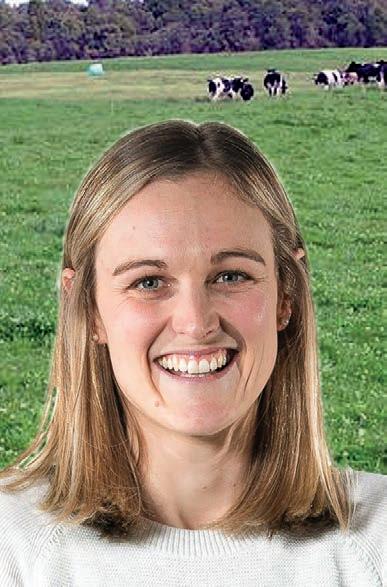
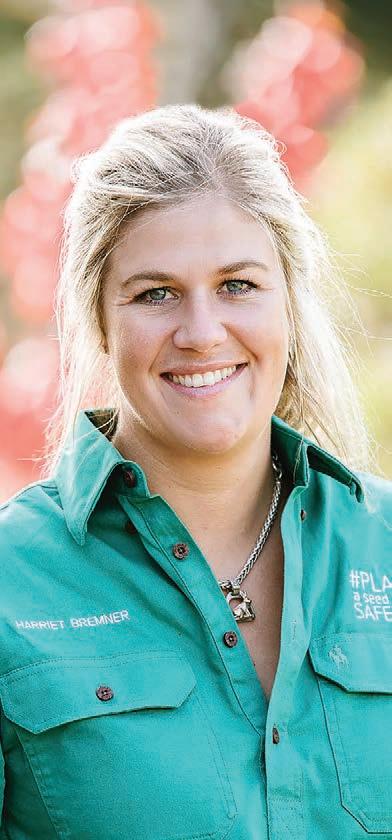

Award chair Richard Rains said the judges were thrilled with the variety and calibre of applicants for this year’s award, from across the broader agricultural spectrum.
“It’s been a tough job narrowing this year’s applicants down to just

 Richard Rains Zanda McDonald Award
Richard Rains Zanda McDonald Award
six individuals, but we’re delighted with the capabilities of those we’ve selected. They’re dynamic, and full of drive and ambition.”
The Australian and the New Zealand winner will each pick up an impressive personal development package, including a fully personalised mentoring trip in both countries, $10,000 worth of tailored education or training, media coaching, and other mentoring and industry opportunities.Face-to-face interviews will take place towards the end of the year, and the winners will be announced at the Zanda McDonald Award Impact Summit, alongside industry leaders and award partners, in Brisbane in March 2023.
There’s no doubt it’s a wise move to insure the key assets on your farm. But have you insured your most important assets - yourself and your family? At FMG we’ve been providing affordable access to Life & Health insurance for more than half a century, giving farmers the assurance that their families and their business can be looked after should the worst happen. To find out more, go to fmg.co.nz/somethings-wrong-with-this-picture, or call us on 0800 366 466.
We’re here for the good of the country.
the tractor’s insured for more than they are.
Harriet Bremner.
Jacques Reinhardt. Monica Schwass.
It’s been a tough job narrowing this year’s applicants down to just six individuals, but we’re delighted with the capabilities of those we’ve selected. They’re dynamic, and full of drive and ambition.
13 FARMERS WEEKLY – farmersweekly.co.nz – September 26, 2022News 13
NEWS
Look at delivery, not dog-whistle issues
challenges facing their council.
FARMING leaders are urging voters to consider issues other than populist topics when deciding who to vote for in this year’s local body elections.Votinghas begun and two rural leaders said the important issues for rural councils are how elected officials handle the deluge of new government rules and regulations while also delivering, and how they will support community wellbeingFederatedinitiatives.Farmers’ board member Sandra Faulkner said voters should look at how individual councils continue to perform their fundamental role of managing services and infrastructure while also handling the volume of new rules and regulations.Shesaidthat requires voters to consider elected members with the ability to learn quickly, work closely with council managers and understand finances and the key
Given the increasing demands on local government, Faulkner said it is also important that elected officials stay focused and that they are not diverted by what she calls “local dramas”.
A Gisborne farmer, Faulkner said democracy is alive and well in her district, with 41 people chasing eight seats on the Gisborne District Council, which is a unitary authority.RuralWomen NZ (RWNZ)







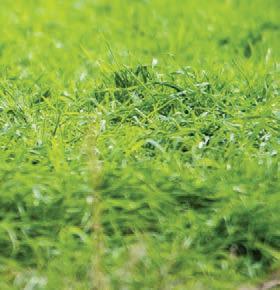
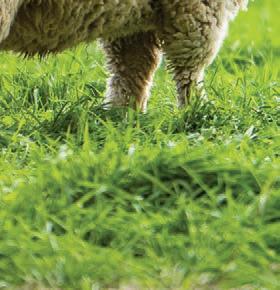


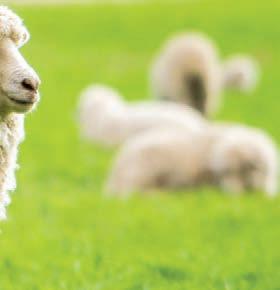

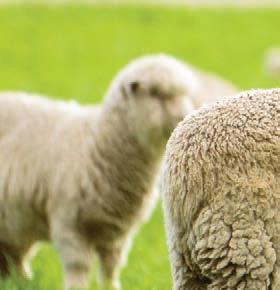


President Gill Naylor said her organisation has two priorities: how councils deliver and support wellbeing initiatives and how they advocate for expanding digital connectivity.Maintaining infrastructure and council services must also be a priority, but by its very nature, RWNZ focuses on community wellbeing, which Naylor said is important for rural areas.
That includes initiatives such as youth groups and access to council venues for community groups at reduced rates.
She also sees a role for councils advocating for expanded digital
connectivity and government services such as health and education in rural communities.
Naylor does not see councils as having a role expanding digital connectivity but says they can
advocate and support increasing the digital footprint in rural communities.
Three candidates given assessment tick for Fonterra board
Hugh Stringleman NEWS Fonterra

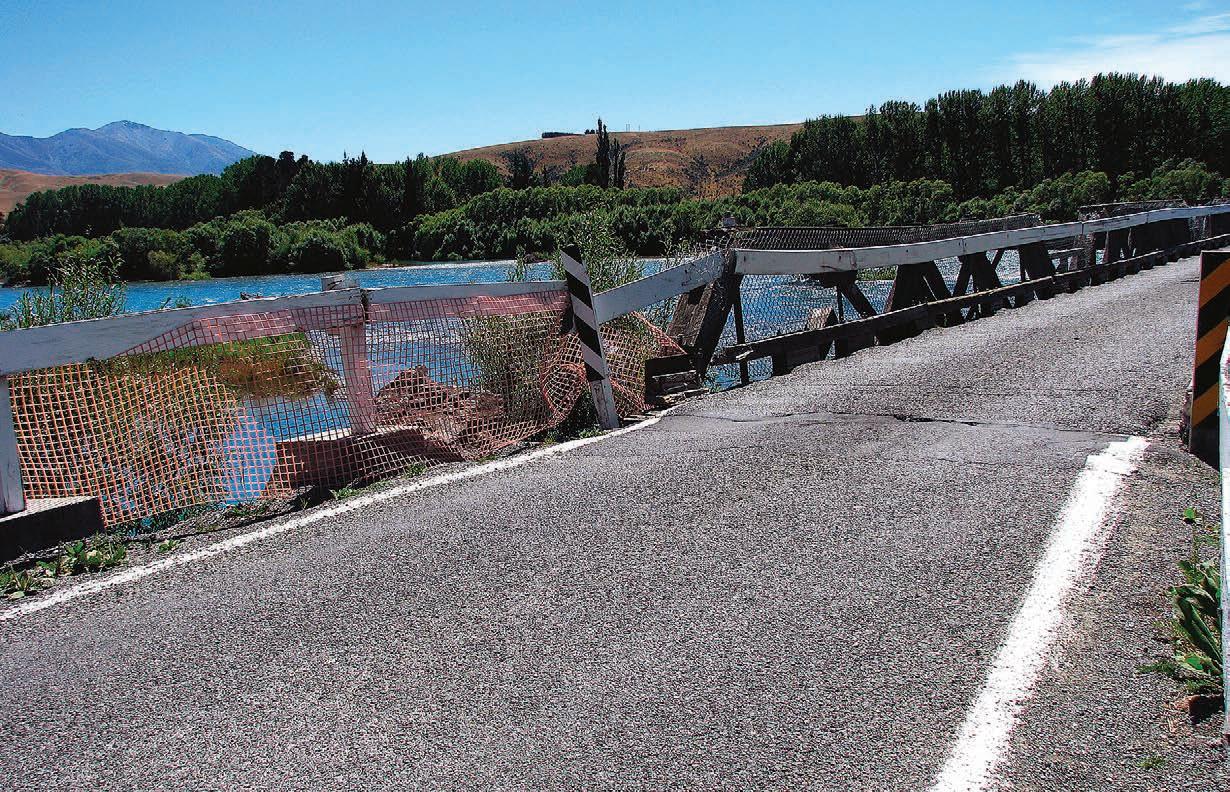







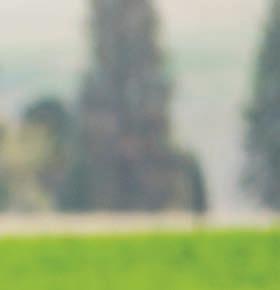

SITTING director Andy Macfarlane and two new candidates for election to the board of Fonterra have been recommended by the independent assessment panel.


They are Alison Watters of Wairarapa and Mike Fleming of Hawke’s Bay.
The three candidates will contest two vacancies this year –Macfarlane’s position by rotation and the seat occupied by Donna Smit, who has retired after two three-yearMid-Canterburyterms. farmer and farm consultant Macfarlane was first elected in November 2017.
He opted to go through the independent assessment process and as a sitting director restanding he automatically goes through to the ballot sheet.
The panel’s assessment of him and the other two candidates who have been recommended will be made available to voters when the election period begins on October 18.
Shareholders can vote online or by mail, using the “first past the post” voting system. Voting closes at 10.30am on Tuesday, November 8 with the results being announced later that day.
Nominations for non-assessed candidates, in terms of which farmers can stand for the board with the support of 35 different shareholders, are now open. Nominations close at 12 noon on

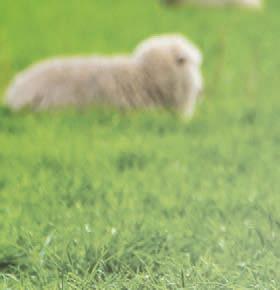
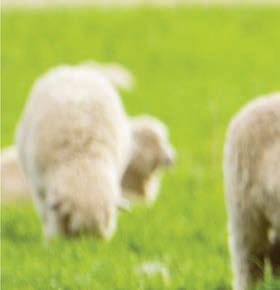

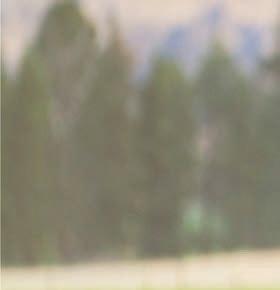
Thursday, September 29.

Watters is in a 500-cow farming partnership with her husband Andrew. The couple were Sharemilkers of the Year in 2003.Asa board chair and director, she has more than 20 years’ experience governing a range of entities including non-profit organisations, small and medium enterprises, and large global commercial companies.
Currently, she is the chair of AsureQuality, a director of LIC and ofFlemingMetService.ischair of Fortuna Group, which has grown to 19 dairy farms in Southland, and is a director of Better Eggs, New Zealand’s second-largest egg producer.Hegrew up farming in Hawke’s Bay, gaining a Bachelor of Agricultural Commerce from Lincoln University in 1993.
 THE BASICS: Federated Farmers’ board member Sandra Faulkner says the main issue facing voters is how individual councils perform their fundamental role of managing infrastructure and services.
POLL: The election to fill two seats on the Fonterra board begins on October 18 and closes on November 8.
Neal Wallace POLITICS Elections
THE BASICS: Federated Farmers’ board member Sandra Faulkner says the main issue facing voters is how individual councils perform their fundamental role of managing infrastructure and services.
POLL: The election to fill two seats on the Fonterra board begins on October 18 and closes on November 8.
Neal Wallace POLITICS Elections
IT’S BACK! One of New Zealand’s most trusted brands in flystrike protection has returned. Ask for Vetrazin from your preferred rural Veterinary clinic. Vetrazin® Spray-On Registered Pursuant to the ACVM Act 1997, No. A005717 Vetrazin® Liquid Registered Pursuant to the ACVM Act 1997, No. A005835 14 FARMERS WEEKLY – farmersweekly.co.nz – September 26, 2022 News14
Third La Niña on the way


 Staff reporter NEWS Weather
Staff reporter NEWS Weather







AFTER months of WeatherWatchspeculation, has confirmed that a historic “Triple Dip” La Niña is set to return this summer.
Many of the building blocks for this latest La Niña have been in place since the last one faded out in autumn. Weather patterns over winter meant conditions were always close for La Niña to return.
Put simply, there may be more gaps in the defensive high-pressure zones to allow the odd La Niña-fuelled rainmaker to score a try here in NZ and bring rain this spring – but overall, this La Niña is not looking especially powerful.
Philip WeatherWatchDuncan
Based on various modelling, this third La Niña looks similar to the previous two La Niña events in both duration and strength, WeatherWatch meteorologist Philip Duncan said.
New Zealand is not directly affected by La Niña conditions all the time because of its location relative to the equator – where La Niña is measured from.
“With NZ so far from the equator, La Niña needs to be strong to really engulf our weather pattern more – and this one is not a strong event based on the data.”The key difference with this La Niña compared to the previous two for NZ is that for the first time in five years there has been a big break in the country’s weather pattern, he said.
In the past six months, the fiveyear rainfall deficit in the upper North Island finally broke and now high-pressure zones are being spaced more widely apart, allowing for rainmakers between them.

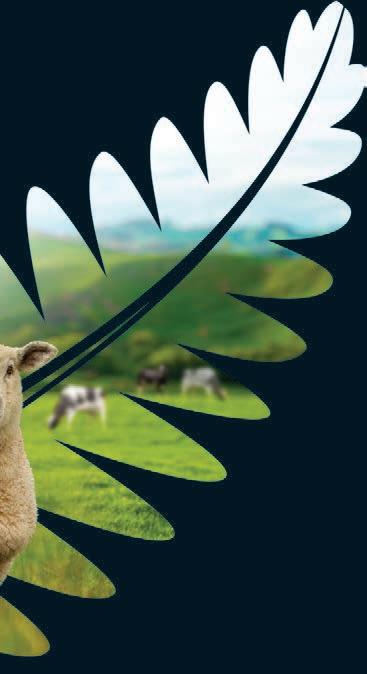
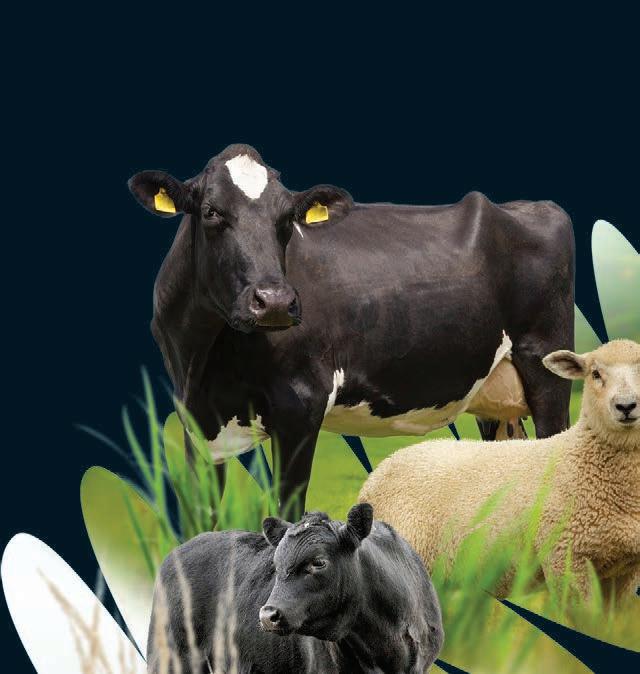
In NZ – as Nelson, Marlborough and Tasman experienced in August – these highs can then slow down big rainmakers over some parts,



bringing serious rainfall totals and widespread slips and flooding, he said.

“Put simply, there may be more gaps in the defensive highpressure zones to allow the odd La Niña-fuelled rainmaker to score a try here in NZ and bring rain this spring – but overall, this La Niña is not looking especially powerful.”



It will see a slightly increased chance of rainmakers and easterlies this spring – but with still-powerful high-pressure zones
keeping some areas drier than usual.

International modelling suggests this new La Niña is mostly a spring event, fading out this summer. It is likely to peak in November, fading back to “neutral” by early 2023.
“The extra warmth in the atmosphere and sea surface conditions in our part of the world can boost rainmakers to our north – which can sometimes directly impact NZ, but this is not locked in,” Duncan said.

A negative Indian Ocean Dipole (the Indian Ocean’s version of “La Niña”) is driving rain events into southern and eastern Australia and then on to western NZ.
The addition of La Niña means Australia has extra rainmakers likely this spring from both the west and the east – and NZ is on the edge of this set-up, with the Southern Ocean weather systems likely to dominate our weather pattern at times with the westerly flow.
SHORTLIVED: International modelling suggests this new La Niña will be mostly a spring event, fading out in summer.
COMMITTED TO NEWCOMMITTEDZEALAND.TOYOU. futureproducers.co.nz We’re here for NZ farmers for the long haul. We’re Boehringer Ingelheim, the name behind the brands trusted by farmers. Season after season, brands like ECLIPSE®, E PRINEX®, MATRIX® and BIONIC ® have been trusted on farm to deliver exceptional health and production outcomes for farmers. Boehringer Ingelheim is the name behind these brands that continues to invest in NZ agriculture by developing and manufacturing these products right here in NZ, ensuring kiwi farmers maximise production - not just this season, but for many, many more to come. PROUDLY AVAILABLE FROM YOUR LOCAL PARTICIPATING VETERINARY CLINIC. Boehringer Ingelheim Animal Health New Zealand Limited. Level 3, 2 Osterley Way, Manukau, Auckland, New Zealand. MARKS-MIN , EPRINEX , ECLIPSE , MATRIX , and BIONIC are registered trade marks of Boehringer Ingelheim Vetmedica GmbH, used under license. Registered pursuant to the ACVM Act 1997, No. A011687, A007191, A009270, A011151, A009390, A011825. See product label for full claim details and directions for use. © Copyright 2022 Boehringer Ingelheim Animal Health New Zealand Limited. All rights reserved. NZ-BOV-0009-2022. NZ here many 15 FARMERS WEEKLY – farmersweekly.co.nz – September 26, 2022News 15
Waikato solar farm gets the green light
HARMONY Energy has been granted a resource consent to build a solar farm at Te Aroha West in the Hauraki Plains.
The project will establish and operate a 182ha solar farm, housing about 330,000 monocrystalline solar panels that will supply electricity to the national grid, powering 30,000 homes.
The total farmland area for the project is 260ha and includes about 30ha of wetland and riparian restoration, and boundary planting.Thatrestoration includes a 6.9ha wetland area, incorporating boardwalks for scheduled educational visits from school students and community groups to learn about solar energy and biodiversity.
It will also include retention of roosting trees for native bats (pekapeka-touroa), extensive riparian planting and a network of indigenous species planted as biodiversity corridors for migration of local fauna species, including birds, skinks, geckos and insects, through the site. Planting will also screen solar panels from view.The remaining area will be pasture for sheep farming.
The consent was granted under the Covid-19 Recovery (Fast-track Consenting) Act of 2020.


The panels are expected to produce up to 147MW of power at peak times. All the electricity will flow directly into the national grid for use by homes and businesses.Thelandwill remain in the ownership of Tauhei Farms Limited, with livestock grazing continuing with sheep, rather than the current dairy herd.


Harmony director Pete Grogan said they are thrilled the project can now proceed. “Renewable energy is critical to mitigate the negative impact of climate change and help support New Zealand’s net-zero ambitions.“Oneofthe great advantages of solar power is that it accommodates dual use of land, allowing for energy generation alongside continued farming production, as will happen at Tauhei.
“This proposal also creates opportunities for local businesses and employment and creates significant biodiversity gains. We will deliver an exceptional project that the Waikato and Aotearoa can be proud of.
“We are particularly pleased the Expert Consenting Panel appointed by the EPA stated that its members have seldom







































observed a project that delivers such significant benefits with such comparatively few adverse effects,” Grogan said.











Construction will get underway in 2024, with the solar farm operational in 2025.
Grogan said Harmony has been speaking with iwi throughout the entire process to make sure its proposed ecological restoration is consistent with their aspirations.“Wehaveplaced cultural heritage at the heart of the design. That includes visual integration into the landscape, as well as improving water quality, biodiversity and ecology,” he said.
The solar panels and other equipment will be set well back from surrounding roads. Solar panels are designed to absorb light and not to reflect it, so pose little risk of glint or glare. The panel array separation and height above ground will allow for continued pasture growth, with the benefit of shade and shelter for the sheep.

Grogan said New Zealand’s transition to net-zero is vitally important, and well thought-through solar farms can offer so much more than just clean energy.

“All project proposals should therefore be closely scrutinised on the basis of location, cultural heritage and ecological enhancement. Tauhei intentionally sets a high bar for consenting and I hope all project developers will rise to the challenge.”
 GO-AHEAD: A resource consent for establishing a 182ha solar farm in Waikato has been granted with construction to begin in 2024.
WORTHWHILE: Harmony director Pete Grogan says the solar farm will create opportunities for local businesses and employment and brings significant biodiversity gains.
GO-AHEAD: A resource consent for establishing a 182ha solar farm in Waikato has been granted with construction to begin in 2024.
WORTHWHILE: Harmony director Pete Grogan says the solar farm will create opportunities for local businesses and employment and brings significant biodiversity gains.
RAV26SEP-FW-B 0800 73 73 withStartwww.hawkeye.farm73orderingHawkEye HawkEye by Ravensdown With increasing national regulations and compliance, knowing where and when your nutrients have been applied on-farm is vital. From ordering to recording to reporting, we have you covered. Ensure you have the data you need when you need it. Order your fertiliser nutrients through HawkEyeOrdertoday.yourfertiliserRavensdownnutrientsRecordplacementproofyourofandactivitiesReporting made simple andnutrientfortrackingcompliance 16 News16
July storms bring $44m in claims
Annette Scott NEWS change
JULY extreme weather insurance claims have hit $43.7 million, prompting calls for action to increase resilience and lessen the impact of climate change.
New claims data released by the Insurance Council of New Zealand Te Kāhui Inihua o Aotearoa (ICNZ) reveal that weeks of extreme weather throughout July resulted in more than 6000 general insurance claims with a provisional value of close to $44m.
resilience “and so lessen the impact of climate change on our way of “Thislife”.isnot just about those things typically covered by general insurance such as our homes, vehicles and businesses; we also need to protect our infrastructure, environment and general way of life, which is all too easily disrupted by climate-driven extreme weather events,” Grafton said.Three extreme weather events were declared by the general insurance sector in July with claims totalling 6266. These included claims from the NZ-wide event of July 11-13 at 2570 claims to the value of $15.4m; the South Island July 17-21 event resulting in 1694 claims valued at $16.1m; and the second NZ-wide event of July 24-27 recording 2002 claims totalling $12.2m.
ICNZ chief executive Tim Grafton said extreme weather continues to hit communities hard right across the country.
He called for action to increase
The May 20 Levin tornado was finalised at 930 claims amounting toPreliminary$11m. claims data for August’s extreme weather-related claims are expected at the end of this month, but July’s events take the running total for such claims so far in 2022 to about $245m,
compared to $324m for all of 2021 – which set a new record.
Grafton said the rising cost of climate change is plain for all to see, both within NZ and overseas.

“This comes at a time when we are facing rising general inflation, outsized building cost inflation and ongoing supply chain issues.
“These are tough times for customers and insurers alike,” Grafton said.
Leading rural insurer FMG said while farmers and growers are personally proactive towards mitigating risk around extreme weather events, they do need community wraparound to adapt to their increased frequency and impact.FMGsupported the call for action to increase resilience given the growing frequency and impact of weather events.
In the past financial year rural communities were severely impacted by the Canterbury floods, the Canterbury windstorm, July’s NZ-wide storms and Cyclone Dovi.

Each of these events cost FMG more than $5 million per event.
“From an insurance perspective, it’s important to reiterate that insurance transfers risk, it doesn’t reduce it,” FMG chief people officer Peter Frizzell said.
Agricademy signs first licensee
 Staff reporter NEWS Dairy
Staff reporter NEWS Dairy
AGRICULTURAL training organisation Agricademy has signed its first licensee to deliver its Get Milking training courses in Waipā and the Waikato.
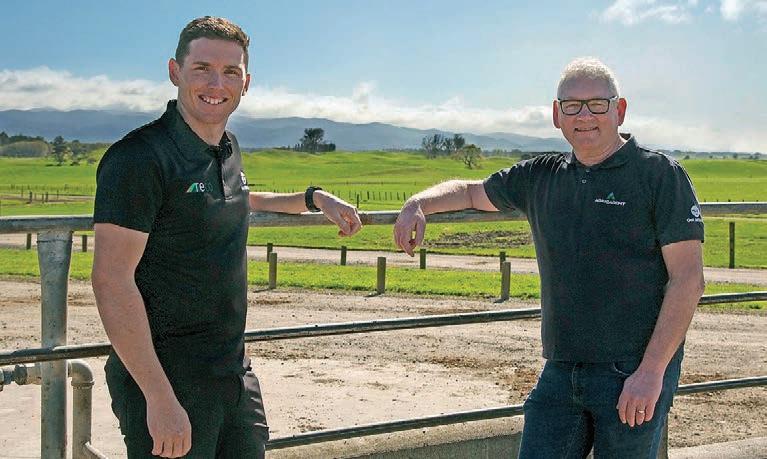
Regan McCorquindale, who grew up on a dairy farm and is immersed in the industry through his farm advisory business RECO, said the industry is in need of training, which will build skills quickly and increase productivity when the right people are recruited, trained, and placed with local farms throughout the area.

“There are a lot of good people who have probably been lost to the industry or not come into it due to a number of factors, and so some farmers have missed out on scaling their businesses because you


can’t milk 500 cows on your own – you have to have the right people involved,” he said.McCorquindale identified Agricademy as the goto organisation because it is changing the way to train and learn on the job, combining online and on-farm courses for the generation that live and connect online but also need practical training on a farm.
The courses build trainees’ skills quickly so they can be successful in their first months at work.
He said being an Agricademy licensee is an opportunity to change the way people enter into, and upskill, in the industry by making sure they have the right training in place, with Relief Milker and Dairy Assistant courses on offer.
“I’m taking this as an opportunity to be more direct with training, making
sure that it is right, and that trainees are matched with the right farms so together everyone can grow bigger, better businesses that are more efficient, more productive, more profitable, and more sustainable because they ultimately have the right people on the ground,” he said.
Agricademy’s managing director, Alister Shennan, said McCorquindale will be an excellent “Deliveringlicensee.high-quality dairy training on farm in your local community is the goal of Agricademy’s licensing strategy,” he said.
“Regan is an exceptional first licensee who is well connected and highly respected in Waipā. Adding Agricademy’s Get Milking training and recruitment services extends his offering to customers, providing an additional platform for growth.”

What are you looking for in a maize provider?seed
“They know what I want to achieve and they’re helping me get there.”
ANDREW
EXTREMES: Insurance Council of NZ chief executive Tim Grafton says times are tough for customers and insurers alike.
Recently awarded 2022 Waikato Dairy Manager of the Year, Andrew ’theonceadayfarmer’ Macky has built up quite a following. With just under 14,000 subscribers and collectively over 2 million views on YouTube and Instagram worldwide, to garner a following like Andrew’s, passion is key. The passion for dairying he shares with his audience is the same passion he has for growing maize with Corson Maize. To watch the video of Andrew’s story visit corsonmaize.co.nz
Come on over and grow with us. Contact your rural retailer or a Corson Maize Agronomist on 0800 4 MAIZE (62493) or visit corsonmaize.co.nz2240PWS
@theonceadayfarmerMACKY 17 FARMERS WEEKLY – farmersweekly.co.nz – September 26, 2022News 17
Climate
We also need to protect our wayenvironmentinfrastructure,andgeneraloflife. Tim business.peoplechangecoursessaysAlistermanagingAgricademyleft,McCorquindale,COURSE:InsuranceGraftoncouncilReganwithdirectorShennan,thedairycanthewayenterthe
Funding felled for wildings
Joanna Grigg NEWS Biosecurity
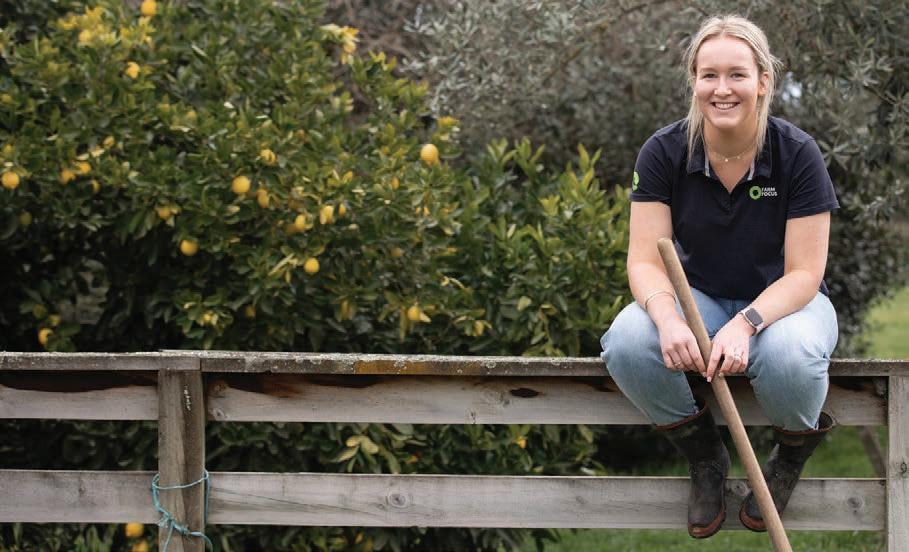
ADDRESSING delegates at the Wilding Pines Conference in Blenheim last week, Agriculture Minister Damien O’Connor said the $140 million spent since 2016 on the Wilding Programme has made a difference. It funded work in 69% of infestations across 1.4 million hectares of the South and North Islands.

“We have covered a huge percentage of what we needed to cover, but not everything was covered.”Thisisdrying up, however, with the job half done, with government funds to the National Wilding Conifer Control Programme for 2022/23 looking to be slashed to $10m from $25m the previous year. O’Connor said there is unlikely to be funding at levels seen in recent years.
Jo Ritchie, from the advocacy and co-ordination group Wilding Pine Network, said the National Programme has made major progress in stopping wilding spread. If this is reduced to $10m as proposed for the 2023/24 financial year, it’s equivalent to falling off a cliff, she said.

She said that $25m a year for 10 years is the minimum required.
“This is a critical investment in terms of biodiversity, primary production, hydro generation and cultural heritage values.”
The progress gained, and the investment made so far, will be put at risk, she said. It will result in laying off skilled and experienced wilding control contractors.
O’Connor said hydroelectric generators and farmers are key beneficiaries of the work and there needs to be a discussion about how these people can contribute more. Meridian Energy was asked to stump up $100m by the government, he said, but there was no money forthcoming.
“We have to have that conversation again,” O’Connor said. “The hydro electricity industry needs to think about their social licence.”
He acknowledged that individual hill and high-country landowners
spend a lot on checking the spread of wilding conifers – about $9m from partners over recent years. This was a significant amount, he said. Wilding conifers can remove up to 40% of water from a catchment.Hetolddelegates he will campaign for more funding from the government but it will take a collective effort to control these weeds.“You really want the minister of finance here today, not me,” he told the Richardconference.Bowman,chair of the Wilding Pine Network, questioned O’Connor on the possibility of cofunding with commercial forestry.
O’Connor said it was a fair question but that it wouldn’t go as far as regulation to create a levy.
There are no regulations compelling forestry owners to undertake wilding work on neighbouring adjacent areas, even if the forest is a proven source of wildings, Bowman said.
Queried about the possibility of sourcing money via a levy on the carbon forest market, O’Connor said maybe a slice of their income should come to biosecurity. “I’m happy to have that discussion,” he said.Genetically engineered (GE) sterile forestry trees could be a mitigating option. O’Connor said
that the jury is still out on the effect of using GE on the image of NZ’s food industry.
“Yes, we do need a sensible discussion, especially in the rush to plant trees for carbon. We need niche high value customers to buy our food and do they want genetic engineering associations?”
O’Connor said the 2018 Sapere Report on the cost/benefit of wilding control adds to the case for more funding. The status quo of $10m-base funding gave a 20:1 economic return, he said. Bowman
said that funding to the ultimate level, however, gives an even better return – up to 38:1.

“This shows it is worthwhile doing the job properly and get rid of seed sources before they seed, creating a bigger problem, with maintenance every two years.”
He said that Contorta, for instance, will cone at four years.
Colin Maunder of Timberlands spoke at the conference about wilding management done by the Rotorua-based forestry company over 208,000ha. Its new strategy involves wilding Contorta and Douglas Fir work “for our social licence”, he said. Timberlands is in the top 10 most profitable companies in New Zealand, he said.
At $650,000 a year, this equates to about $3 per hectare. In comparison, the spend on wilding pines on the sheep and beef hill country property in the Wilding Pines Conference field trip was also“We$3/ha.used to do what the councils just tell us to control, but now we go beyond,” Maunder said. This includes supporting the Tawaera Trust for work on iwi land.
Maunder said whether or not there should be a forestry levy for wilding control was the same question as whether the government should levy farmers for nitrate leaching.
Steve Satterthwaite of Muller Station, Marlborough, questioned
We have to have that conversation again. The hydro electricity industry needs to think about their social licence.
Damien BiosecurityO’ConnorMinister
this comparison. He said farmers have changed behaviour to reduce their flow-on environmental effects, at their cost, and also compelled by regulation. Wouldn’t that, he asked, be similar to “regulation for containing wilding pine“Also,spread”?there is clear evidence that wildings escape from forestry blocks, so it seems fair that a levy on commercial logging would be totally justified to contribute to wilding pine control.”

His calculations showed that a $1.50 levy on 33 million cubic meters of logs exported would generate $50m.
“If matched by government we could start big projects like the Branch-Leatham.”Timberlandshad approached the Department of Conservation to offer to control wildings in the public-owned area adjacent to its forests.“Their issue is they are needing to bed in their co-governance structure first,” Maunder said.
“You don’t need to use two software programs Focus stands alone!”
SOCIAL LICENCE: Damien O’Connor, Minister for Biosecurity, invited hydro electricity generators to step up and contribute to programmes to control wilding conifers, and said Meridian had declined a previous invitation to contribute.
IT’S NOT CANADA: The branch valley overrun with wilding pines.
Photo: Lauren Prebble
FARM FOCUS, SIMPLE AS THAT!
– Farm
Grace, Customer Support Team0800 888 080 18 FARMERS WEEKLY – farmersweekly.co.nz – September 26, 2022 News18














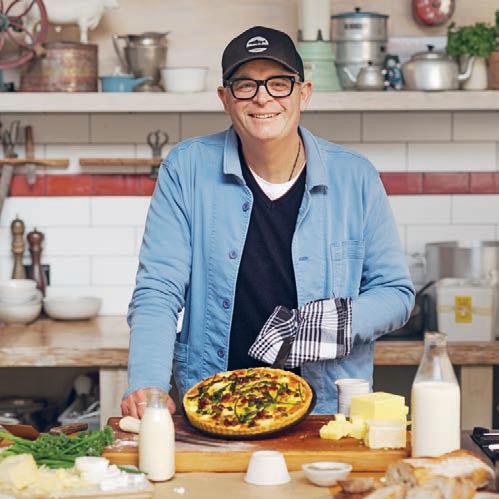
“ We entered the awards to get a gauge on where we were at and receive some feedback, with a view to entering again further down the track.“
AL
CHRIS AND DESIREE GILES DAIRY FARMERS, WAIMUMU 2020 SOUTHLAND AWARD WINNERS
BROWN, CHEF BAL13643_BFEA_Muster_Campaign_FW_FP_Press_Ad_262x380mm_Giles_FA.indd 1 12/09/22 5:21 PM 19
Not all grass is the same

For more information 0800 171 825 germinal.co.nz
Choose Germinal for innovative pasture varieties that can make a real difference to your farm’s sustainability and profitability. G_NZ_220826_Spring Advert Campaign_Farmers Weekly_(380Hx262Wmm).indd 1 26/08/2022 10:33 20
Simple pleasures in a complex business
PEOPLE Wellbeing
How did you get into farming?
Farming’s all I’ve ever done and all I’ve ever wanted to do. I grew up on the family farm in Feilding in the Manawatū. It was a 1,100 ha sheep and cropping farm. I went to uni at Lincoln, worked in the South Island high country for a while then moved to the Hawke’s Bay and worked on a lamb-finishing property for four years before I got this job.
Where are you farming now?
I’m a farm manager in Totara Hills Station, Tikokino. We’re finishing 15,000 lambs and we’ve also got 2,000 ewes, 500 cattle and 150ha of cash crop. It’s a large, complex business so I work with a team of two-and-a-half full-time equivalents.



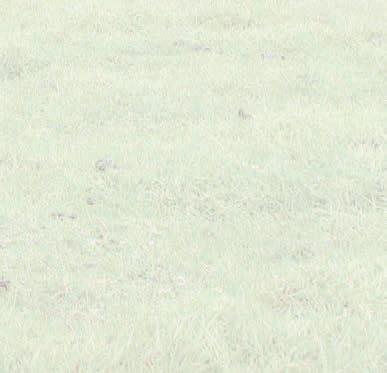


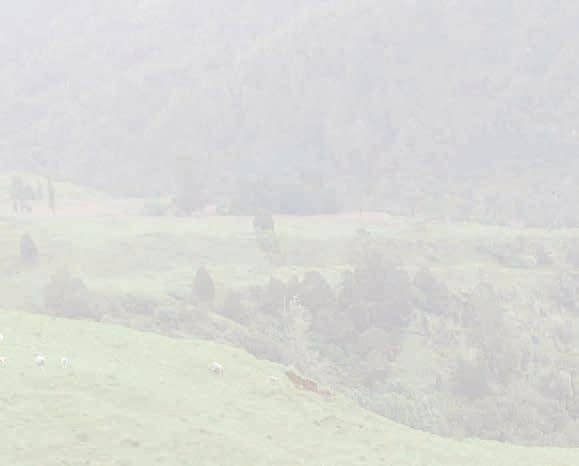

haven’t grown as much as you’d like. But even during those times, there’ll always be something that you are doing well. It’s about celebrating that and giving yourself a pat yourself on the back.
Some people might find maintaining such a positive outlook difficult?
Yes, they might, but if you’re just constantly chasing perfection in farming, you’ll always be down on yourself and you’ll drive yourself into the ground. I can say that because I am a bit of a perfectionist myself [laughs]. I’m often my own harshest critic, but I’ve learnt to manage that.
So how would you describe your mindset?
I think my philosophy nowadays is ‘shoot for the stars and if you land somewhere pretty close that’s still not a bad spot’.
What about workload? You sound very busy. How do you manage that?
What do you enjoy about the job?
It’s not really a job to me. It’s more of a passion. It’s a 24/7 lifestyle and you’re often in over your head, but there’s lots to enjoy about it too.
It’s been very dry in recent years where you’re farming. That must have been challenging.
Yes, we’ve had a couple of rough years and now we’re going through the complete opposite – it won’t stop raining. That kind of sums up where things are at. It’s a very variable climate.
It takes a certain mindset to cope with that. The judges of the award you won noted your resilience.
I guess you’ve just got to focus on the positives because there are so many things out of your control in farming, like the weather. If you don’t do that, things can eat away at you and get you down. But when the grass is growing and the stock are doing well it’s a pretty enjoyable place to be. My philosophy is, for every day when the grass isn’t growing, there’s always a day when it is.
What other pressures do you face?
The main one is the pressure to perform and be profitable, which every farmer faces. If I didn’t generate a profit by doing what I do, I wouldn’t have a job. That’s a pretty significant weight. But that’s just the reality of farming –there’s always lots of balls in the air. It’s about managing them and yourself.
What’s your approach?
The biggest thing is managing the expectations I place on myself. There are times in farming when things don’t quite go right. For example, maybe your lambs
We’ve worked hard at getting a good balance here. We don’t make ourselves busy when we don’t have to be. We’re either going flat-out to get things done or we’re not. If things need doing we’ll put in a big shift, but we also realise not every task is urgent.
We can have the odd day where we do a bit less and only do seven hours and do other things or do different jobs we enjoy on farm. As a manager if we are having a quiet day, I make sure I don’t put false pressure on people. It’s okay to have a longer smoko and catch up as a team for a natter. That stuff’s important too.
What are your go-tos personally to manage pressure?
Socialising is a big one for me, especially if I’m having a rough week. It’s a great pressure release because you can share your issues. I’ve got a close group of friends who are all farmers like me. Every Friday night we’ll catch up and see how everyone’s week’s gone and compare notes. If you think you’re having a rough week, chances are someone else is having one too. That gives you perspective.
What about longer breaks?
[laughs] I must admit farming’s a bit of an addiction for me.
Wherever I go I’m either talking about it or visiting something to do with it. But my partner and I do try and go away for a week a couple of times during the year to get fully off farm. I’m very lucky I’ve got staff I can delegate tasks to. If we’ve got the farm covered as a team I might pop away occasionally mid-week and do something else.

There’s a lot of discussion about wellbeing at the moment. What’s your take on it?
I think younger farmers like me,
in their 20s and 30s, have these ideas front of mind anyway. My farmer friends are pretty open and honest about their workload and whether it’s sustainable or not.
We have those discussions. You can have big weeks and work hard, but you’ve got to know when you’re pushing the limit. As an industry we’ve got to work out how to manage that better.
What needs to happen?
Well, I think the workload is only going to increase, especially with staff shortages and the level of atcomingeverythingandcomplicatedarewe’resystemstypeindustry.comingcomplexityintotheTheoffarmingthatrunningalreadyifyouthrowelseatusthemoment
on top of that, it can overwhelming.feel So it’s not just about alsoworkload,physicalit’saboutthe
mental load. I think people will need andthesenavigatinghelppressureschanges
because it could be a bumpy few years.
What do you suggest? As an
industry, I guess we’ve got to develop systems that are still going to be labour-efficient, but also look after people. For me as a farm manager, looking after my team is my number one priority. Without them, I’m buggered.
The reality of running a scaled agribusiness is that it’s a team effort. You can’t take people for granted.
 Award-winning Hawke’s Bay farmer Hugh Abbiss says a focus on people has driven the farm’s growth and success during some challenging times in recent years.
farmstrong.co.nz
is the official media partner of Farmstrong
LOOKING BACK: Hugh Abbiss, who manages Totara Hills Station in Tikokino, says one of the pressures he has faced is managing the expectations he places on himself.
Award-winning Hawke’s Bay farmer Hugh Abbiss says a focus on people has driven the farm’s growth and success during some challenging times in recent years.
farmstrong.co.nz
is the official media partner of Farmstrong
LOOKING BACK: Hugh Abbiss, who manages Totara Hills Station in Tikokino, says one of the pressures he has faced is managing the expectations he places on himself.
QUINFERT ALLOPHOS ™ (patent applied for) QUINFERT ALGERIAN RPR V2 as both dry and ‘CM’ controlled-moisture, blended with S90 • Allophos Standard: 0.5% N, 7.9% P, 7% S, 23% Ca. Potash etc blends available • Allophos Hi-P Dairy: 3% N, 12% P, 3% S, 21% Ca. Potash etc blends available • Both contain high-analysis nutrients incubated with deep allophanic subsoil • The allophanic subsoil binds the water-soluble soluble P in plantavailable form, minimising phosphate leaching and run-off • It also stabilises soil organic matter, sequestering carbon and reducing CO2 greenhouse gas emissions • Maintenance lime requirements are reduced • Both “Standard” and “Hi-P Dairy” contain N-vig™ root stimulator Also available: Only Quinfert can supply High Court approved Quinfert Algerian RPR V2 New fert sequesters soil carbon AND minimises P loss! Dr Bert Quin Call Bert Quin direct on 021 427 572 for a free review of your soil tests and a discussion on maintaining top production while minimising nutrient losses to the environment Email: bert.quin@quinfert.co.nz See website www.quinfert.co.nz for September 9 price list. QuinBertrD 1.Fact leaching,andrun-oPofcauselargestthefarbyisfertiliserPsolubleofoveruseThe 2.Fact (ASC),retentionPtheofthirdathanmorearethatlevelsPOlsenhaveyouOnceenvironment.3.Fact simplyway,environmentally-protectiveaninPsoilyourupbuildtowantyouIfplants.forfashionsustainedain4.Fact evenarefertilisersRPR-basedgain.toeverythingandlosetonothingisTheresuper.insulphateexcessthethancientemorefaris90)(sulphur5.Fact beshouldThisleaching.andrun-oPreducegreatlywillabove1-4Followingmoney!ofamountshuge6.Fact riparianmitigationsexpensiveinstalltopressuretoingivetononsensicalisItestablishedhaveyoubeforeandcosts,maintenanceandectivenesselong-termtheirofidea7.Fact essentiallyarestripsripariangrasswide3-metrefenced-osimplecaseanyinecialbenelong-termcantsignianyhavewillNeitherlosses.sedimentandbacterialcycling.NandPimprovetoout,fedbetosummerinharvestedbecanstrips8.Fact RPR/Boucraaan(notRPRgenuineanylevelsPofmaintenancefornutshell,aInP.solublehigh-analysisandRPRofblendauserainfall,loworsituations9.Fact priorimmediatelysprayedurea,prilleduseurea,granularthanratherN,Forsavings.bigwithhalfincut10.Fact ifproblems,metaboliccausetolikelylessmustandcient,emoreisPotashanionsofLeachingurea.prilledyourwithmixtoEasynow.usingareyouamountannual021phoneorbert.quin@quinfert.co.nz,onQuinBertemailinfo,moreFor AdoptandKnowMustYouFactsFertiliserBasicTenLK0113246© 21 FARMERS WEEKLY – farmersweekly.co.nz – September 26, 2022News 21
Nailing down true cost of herbage seed crops

FEDERATED Farmers has designed a tool to help arable farmers find the true costs of production to ensure the financial viability of their herbage seed businesses.
Soaring production costs have pushed New Zealand’s herbage seed industry into a cost-of-living crisis, Federated Farmers herbage seed chair and Methven farmer John McCaw said. Herbage seed production – which is crucial to all New Zealand pastoral farming operations – has become marginally profitable for cropping farmers and without a reset will not be sustainable in the future, heConcernssaid. about the sector prompted an industry-wide look at costs and ways to ensure sustainable production, and the development of a cost-ofproduction spreadsheet that offers growers a unique tool with which to analyse all relevant costs associated with growing ryegrass and white clover seed crops and running the farm.
It even allows for a return on investment.
Its release coincides with a recent Foundation for Arable Research (FAR) gross margin analysis for ryegrass seed production.
That analysis showed a breakeven result on seed production –but a profit from associated lamb trading.“Herbage seed production is a risky business and farmers deserve better than break-even,” McCaw said.The

Feds spreadsheet includes lamb-grazing income, but McCaw acknowledged not all arable farmers are willing or able to trade lambs.
“Grazing lambs requires capital, labour, and infrastructure quite separate to that of seed production.
“Having ryegrass in the system facilitates lamb grazing but this should not be used to justify a lower seed price to growers.”
Gross margins have their place,

but McCaw is concerned they are not the right tool in this instance.
“It’s all about the cost of production; gross margin analysis is simplistic and useful only for considering one crop option against another.

was a lightbulb moment for McCaw.
“I’ve been doing gross margins on our farm for 20 years, thinking I understood our cost of production.
“I wish I’d had this tool earlier. I think we would be farming very differently now if we had.”
McCaw suggested it could be that the plant breeders’ focus on herbage production has come at the cost of seed yield.
Later harvesting varieties often yield less seed and require additional water and fungicides.

Yield gains have plateaued while grower prices have languished.
“The question is how to achieve that without pricing ourselves out of the international market.



“Rather than demanding a certain price per kilogram, Feds is looking to raise awareness of the true cost of seed production,” McCaw said.
If dairy prices perform as expected this should also help to support pricing and confidence in the grain market.
“Each crop must carry its fair share of the unseen cost of running a farm including wages of management, rates, insurance, and administration.”
Being able to allocate a share of all those additional costs, at about $1300 per hectare, to an otherwise simple gross-margin assessment
“It’s been happening over many years but now production costs have risen steeply, and we have a cost-of-living crisis in the herbage seed industry.”
The extent to which prices must increase to return growers to profit is of concern to both growers and merchants.“Weneed a reset, not just an inflation adjustment.
The spreadsheet at Arable-toolkit-gross-margin-1 aims to ensure both sides have the information they need to make an informed decision.Meanwhile, as growers do their calculations on what prices they need to get to stay viable, the increased costs will impact related industry such as dairy pasture renewal.Onenumber cruncher has come up with at least $3.50/kg for perennial ryegrass seed, $8/kg for white clover, $3.50/kg for forage brassica and $6-$7 for cocksfoot to be sustainable.
Meanwhile there is confidence in domestic grain prices as milk price futures push upwards.
On the other hand, it will impact heavily on dairy farmers’ feed budgets.Grainand feed prices are well above their historic averages, but higher milk prices should help dairy farmers feel more confident in purchasing feed.
The latest regional feed prices have local feed wheat trading in Canterbury at $675 a tonne, up from $426/t this time last year, while Southland is $650, up from $417 and Manawatū $700, up from $463.
Feed barley in Manawatū is trading at $720/t, up from $453 this time last year, Southland $650/t, up from $413 and Canterbury $660/t, up from $425.
Maize grain in Manawatū is at $720/t up from $442 this time last year and Waikato also $720/t, but up from $414.
Dan
Alton
Geoff
Annette Scott
SEED CAPITAL: Rather than demanding a certain price per kilogram, Feds is looking to raise awareness of the true cost of seed production.
Herbage seed production is a risky business and farmers deserve better than breakeven.
John McCaw Feds
YOUR LOCAL POLARIS EXPERT WILL STEER YOU RIGHT Across New Zealand the Polaris Dealer Network is made up of over 30 Independent local businesses. Most are privately owned and many have been in operation for generations. Your Polaris dealer is your Local expert on all things Off Road vehicles helping you with the right advice to choose the correct vehicle for your needs and ensuring you have the best possible service and support. Their commitment and Investment to provide their customers with the very highest quality Customer Service is a big reason why POLARIS IS THE #1 SELLING SxS BRAND IN NEW ZEALAND SEE YOUR LOCAL POLARIS DEALER TODAY!
Benjamin Jacks Machinery
Rodgers Action Equipment Hamilton
Gray Temuka Motorcycles 22 FARMERS WEEKLY – farmersweekly.co.nz – September 26, 2022 News22
INPUT COSTS Arable
You still have time to organise maize for silage WINDOWPLANTINGFORMAIZEISWIDEOPEN







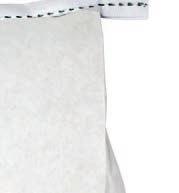


















With Pioneer’s expanding range of earlier maturing hybrids, you can now plant later and still achieve the kind of yield maize is renowned for. If conditions are dry, the large seed and deep roots naturally help the plant establish and grow strongly. As a high energy feed, the silage will keep your animals producing at a high level












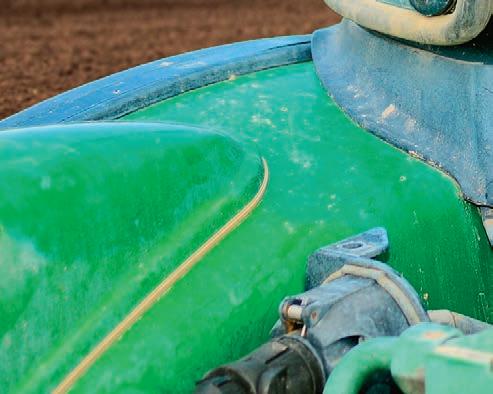
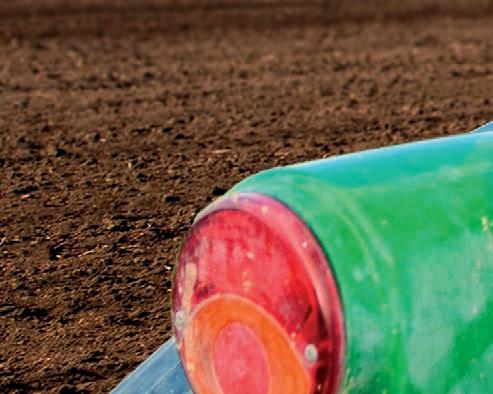
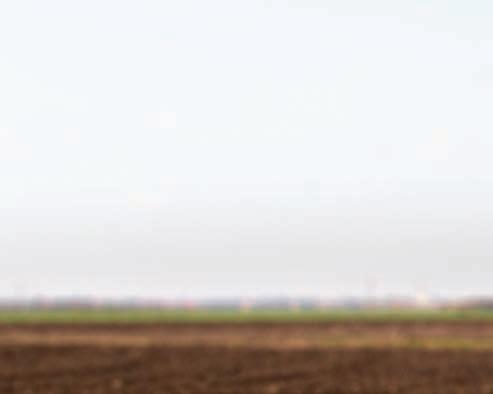



when pasture levels drop (and keep for years if they don’t). In emergencies you can also green feed your crop. Late spring is not too late to plant Pioneer maize hybrids, but don’t leave it too much longer to organise. Talk to your seed merchant or Pioneer Area Manager, visit pioneer.nz or call us on 0800 746 633.






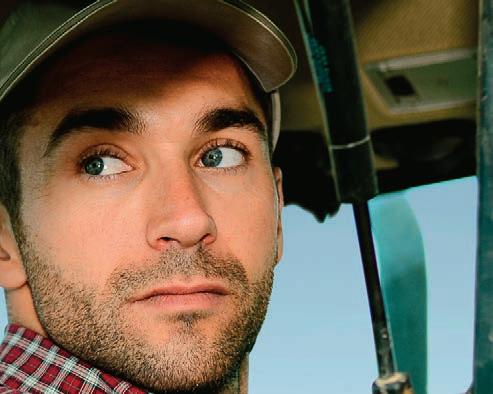

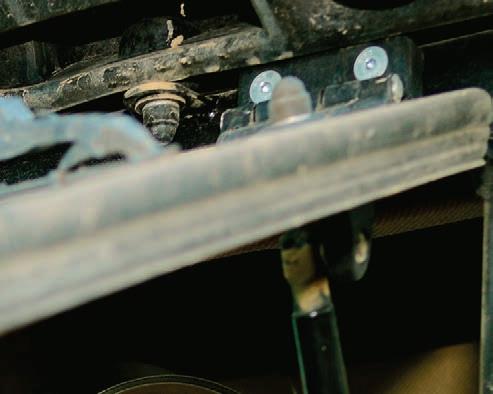
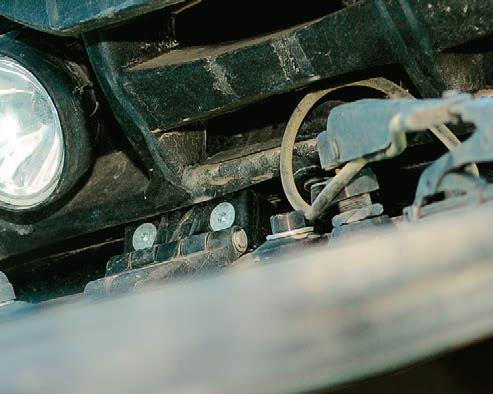
THE
23
Datamars takeover ‘means wider range’
 Staff reporter TECHNOLOGY Livestock
Staff reporter TECHNOLOGY Livestock
DATAMARS has acquired New Zealand-based livestock handling equipment company, Prattley Industries, as part of its Datamars Livestock business to offer producers end-to-end animal management equipment and technology packages.
Established in 1966, Prattley Industries has built a globally trusted reputation with livestock producers through the manufacturing and sale of mobile yards, drafting units and conveyor belts, primarily for the sheep sector in NZ, Australia, the United Kingdom and France.




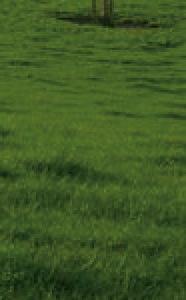


Datamars general manager Australasia Matt Cashmore said the acquisition combines Datamars Livestock’s traceability and productivity solutions with Prattley’s handling equipment to meet growing demand for greater traceability to underscore food security and improved animal health practices.
“Globally, consumers are demanding a sustainable approach to the production of food and fibre, while biosecurity and animal health continues to be a pressing concern for many economies,” Cashmore said.

“Prattley is a very successful business with great people. We want that to continue, and to help the business grow further and reach more livestock producers around the Cashmoreworld.”saidPrattley’s range of handling solutions provide a safe and versatile system to help farmers physically
manage animals efficiently without compromising stock safety and welfare, and work with Datamars Livestock’s Tru-Test weigh scale indicator, load bars and Z Tags visual and EID tag solutions.
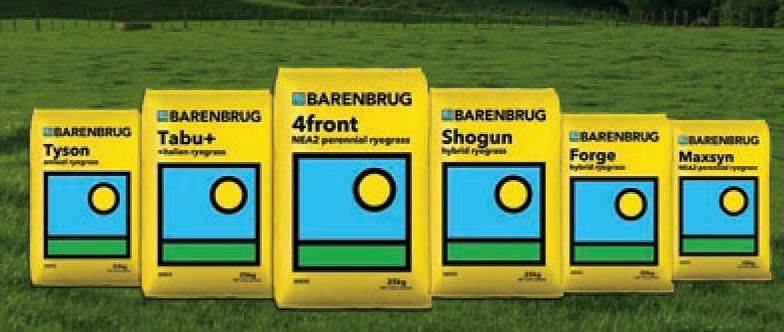
“Animal traceability and management underpins the sheep sector’s ability to meet these challenges, and this acquisition allows us to offer Prattley’s handling solution combined with our existing EID tag and reader solutions to provide producers with the ultimate toolkit to ensure bestpractice food production, animal welfare and sustainability,” he said.
“Through this combined, complete solution, livestock producers are better equipped to track, weigh, treat and manage livestock movements in line with precision decisions around, for example, feed management, health treatment, and culling.”Prattley manager Graeme Ward said he is delighted with the sale of Prattley Industries to Datamars.

“The joining of the two companies will provide farmers and producers a wider range of animal management and health delivery solutions through one great company,” Ward said.
“We look forward to Prattley’s continued growth thanks to Datamars global sales and marketing capabilities, and their manufacturing and supply chain systems.”
Datamars will become the primary global reseller for Prattley, while the Prattley company continue to operate from its Temuka-base in South Canterbury, New Zealand. All 26 Prattley employees will join the Datamars team.





Record price for high country station
Staff reporter NEWS Real estate


HALFWAY Bay Station on Lake Wakatipu has been sold to New Zealand investors under the name Medeor Ltd, a subsidiary of New Zealand Regeneration Investment Group.Managing director Austin Mortimer said the 18,000ha property will continue to be grazed and regenerative farming practices will be introduced.
A local station manager and shepherd will beAfteremployed.alengthy tender process, Halfway Bay was sold by New Zealand businessman Chris Ellison and Australian Tim Roberts for an undisclosed price that is believed to be a NZ record over $30 million.

Along with Hawke’s Bay resident Mortimer, who was a former chief executive of Rockit Apple, Auckland-based Zhengzhong Liang is listed as a director of NZ Regeneration Investment.
Halfway Bay station is accessible only by boat or air and runs on its own hydro generation.Itispredominantly Crown leasehold with 180ha of freehold alongside the Lochy river, reputed to be one of the best fly-fishing waters in the world.
The property includes a homestead, farm manager’s house, staff accommodation, a woolshed, various implement sheds, a marina and jetty, workshop and remote shepherd huts.
The station adjoins the better-known Wakatipu high country properties Walter Peak and Cecil Peak.


 The takeover combines the complementary offerings of the two companies to meet the growing demand for greater traceability.
The takeover combines the complementary offerings of the two companies to meet the growing demand for greater traceability.
24 News24GATED:
IRD fixes its own farmhouse fiasco
Neal Wallace NEWS Tax
FOR the third time since 1996 the Inland Revenue Department has changed the way it treats GST on farmFindexdwellings.Invercargill Tax Advisory partner Craig Macalister describes the prolonged issue as “a disappointing saga all of the IRD’s own making” – though he said its proposed updates to the GST Act could be the “ladder out of a hole”.
Historically, farmhouses and farmlands were viewed by the IRD as part of the whole farm, but a landmark Court of Appeal ruling in the 1990s meant farmhouses and farmland had to be treated separately for GST purposes.
“This prompted a change to the GST Act separating the farmhouse from the farmland, notwithstanding the fundamental interconnectedness of these two items,” Macalister said.
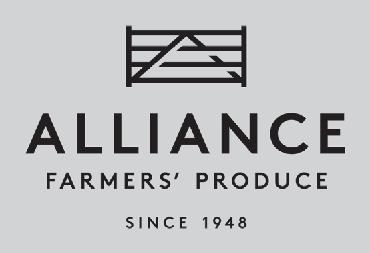
From 1996 to 2020, the GST component on the sale and purchase of farms and the farmhouse were treated separately, but then, Macalister said, the IRD muddied the farmquite“Farmhouseswaters.areunsurprisinglyoftenusedforconductingbusiness.
“In such cases, the IRD decided that the homestead once again becomes fully subject to GST –despite no change in the prevailing law.”Supporting this revised position, the IRD issued an interpretation statement stating that should a homestead be used for farming purposes, the homestead once again forms a component of the GST calculations on a sale.
years ago, the farmer would be at a disadvantage because the GST they might be able to claim could amount to nothing.”
The GST treatment of the farmhouse has now gone a full circle.“We went from having the farmhouse in the GST rules, to having it outside the GST rules in 1996, to now having it back in again.”Macalister said a “legislative patch” passed in March this year increased the adjustment for private use on sale of a farmhouse, which Macalister said is an attempt to lower the GST cost.
Craig FindexMacalisterInvercargill Tax Advisory


“This was somewhat offset by the IRD advising farmers required to pay GST on their farmhouse that they could claim a tax credit for the cost of the house and the immediate land on which it rests.”
This was not without its problems.
“For example, if the farmhouse was passed down through the generations or purchased many

An official issues paper released in May suggests farm homesteads will now become GST exempt and that this will apply to all goods that were not acquired for the principal purpose of making taxable supplies, making it wider than just farmhouses.Itwillbebackdated to April 1
2011.Macalister was scathing about the IRD’s role, saying the problem was of the department’s own making.
“While the change in the most recent Tax Bill may alleviate the issue when enacted, this should not have happened at all. More than that, it should not have taken two years to get a proper fix into a Tax Bill.”
J o i n o u r d i r e c t o r s a n d m a n a g e m e n t f o r a n u p d a t e o n t h e c o o p e r a t i v e ’ s p e r f o r m a n c e , p r o g r e s s o n o u r s t r a t e g y , e x c i t i n g p l a n s f o r t h e f u t u r e a n d t h e o u t l o o k f o r t h e y e a r a h e a d
W e ' r e t h r i l l e d w e c a n m e e t f a c e t o f a c e a g a i n t h i s y e a r a n d l o o k f o r w a r d t o s e e i n g y o u a n d a n s w e r i n g a n y q u e s t i o n s y o u h a v e I f y o u k n o w a n y o n e e l s e w h o i s i n t e r e s t e d i n t h e c o o p e r a t i v e , p l e a s e e n c o u r a g e t h e m t o a t t e n d
For further roadshow details
Feilding
Masterton
Dannevirke
Napier
Omihi Akaroa
Darfield Blenheim Nelson Fairlie
Oamaru
Ranfurly
Cromwell
Balclutha Gore
Heriot
Tuatapere
Winton
Fortrose
Mossburn
Tuesday 27 September
Wednesday 28 September
Wednesday 28 September
Thursday 29 September Monday 3 October
Tuesday 4 October
Tuesday 4 October Wednesday 5 October Wednesday 5 October
Monday 10 October
Monday 10 October
Tuesday 11 October
Tuesday 11 October
Wednesday 12 October
Wednesday 12 October
Thursday 13 October
Monday 17 October
Monday 17 October
Tuesday 18 October
Tuesday 18 October
7pm 1pm 7pm 1pm 7pm 1pm 7pm 1pm 7pm 1pm 7pm 1pm 7pm 1pm 1pm 1pm 7pm 1pm 7pm
Manfeild Park
Copthorne Solway Park
Dannevirke Golf Club
Napier War Memorial Centre
Omihi Community Hall
Akaroa Golf Club
Darfield Recreation & Community Centre Scenic Hotel
Beachside Nelson Fairlie Golf Club
Brydone Hotel
Ranfurly Bowling Club
Heritage Collection Lake Resort
South Otago Town & Country Club
Heartland Hotel Croydon
Heriot Rugby Club
Waiau Town & Country Club
Midlands Rugby Club
Tokanui Golf Club
Mossburn Community Centre
J o i n u s a t a n A l l i a n c e G r o u p R o a d s h o w i n a t o w n n e a r y o u !
P r o u d l y N e w Z e a l a n d ’ s o n l y 1 0 0 % f a r m e ro w n e d r e d m e a t c o o p e r a t i v e .
D I S T R I C T D AT E T I M E V E N U E
While the change in the most recent Tax Bill may alleviate the issue when enacted, this should not have happened at all. More than that, it should not have taken two years to get a proper fix into a Tax Bill.
TAXING: Findex Invercargill partner Craig Macalister says the latest tax move could ‘be a ladder out of a hole’ on the farmhouse GST issue.
7pm
and to register visit: events alliance co nz
25 FARMERS WEEKLY – farmersweekly.co.nz – September 26, 2022News 25
We’re rattled by pots and pans
AKIWI accountant who has launched a series of best-selling recipe books says modern cooks lack confidence and in one generation have lost the essential culinary art of “trial and error”.
Linda Duncan said the lack of culinary skills among Kiwis is contributing to food wastage with meal kits and cooking shows failing to teach the benefits of “a flop” in the kitchen
Duncan, who has sold more than 60,000 copies of her book of simple-to-cook recipes worldwide, said many Kiwis are unable to creatively use individual items that are left in the pantry or fridge.

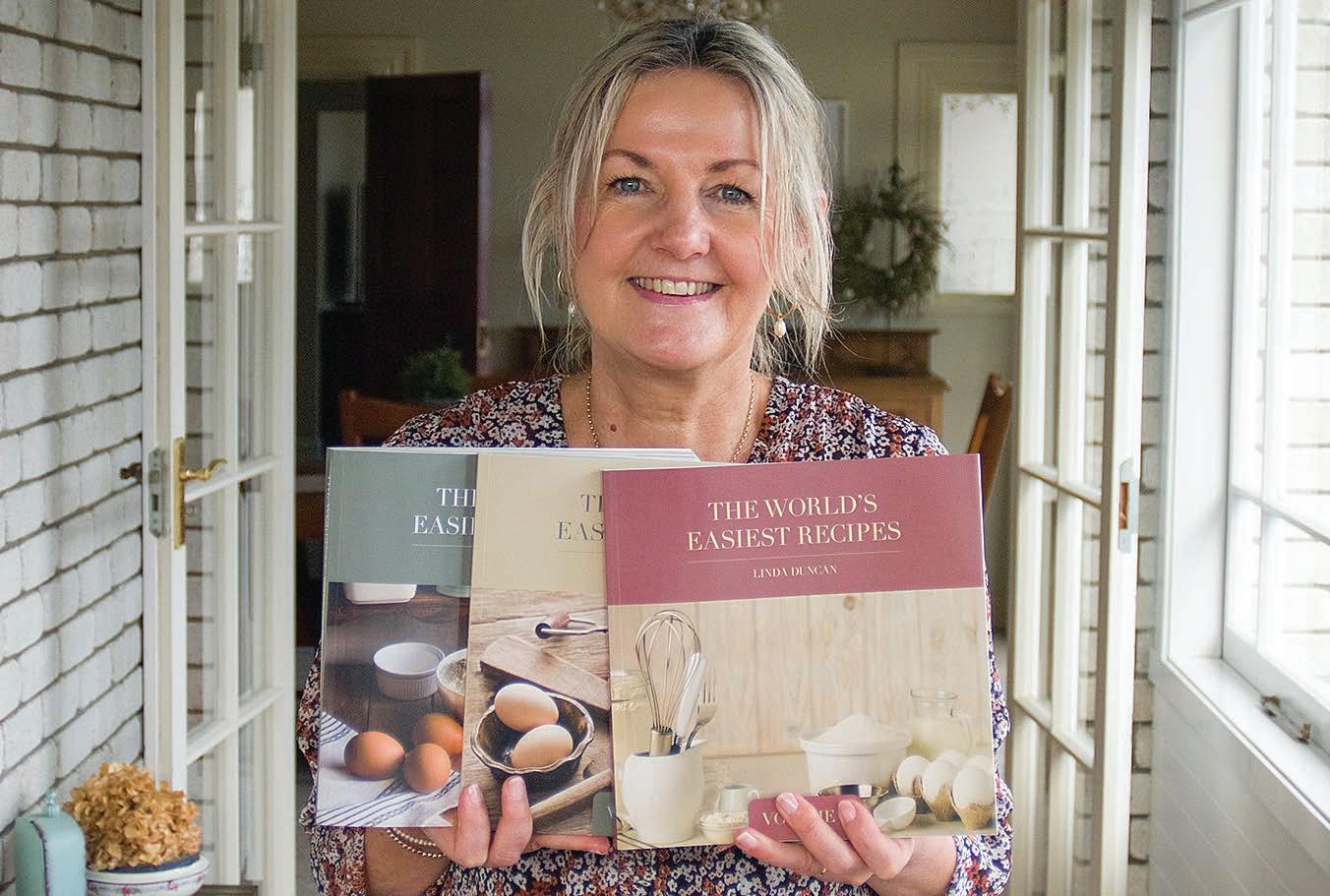
This has been made worse by baby boomers failing to pass on their cooking nous and thrift, she said.Baby boomers and their parents often grew their own fruit and vegetables, made sauces from scratch, baked their own treats and preserved spoiling fruit by making it into jams or chutneys.
“Kiwis’ lack of confidence in the kitchen means they scared to make something from scratch without a detailed recipe, which results in wastage.
“The rise of non-traditional meal source methods including takeaways and meal kits and
competitive reality TV cooking shows has led to a generation who are incapable of cooking a meal from memory or creating something of their own with whatever they have at hand in the fridge or cupboard,” Duncan said.
“A reliance on detailed recipes leaves little room for flair or experimentation and it is this trial and error with culinary successes and failures that helps develop a cook’s confidence.
“I think many people have become apprehensive of cooking without a detailed recipe and often there will be ingredients at hand that could be used to create something delicious, but they simply don’t have the confidence toDuncan’stry.” new book, designed to use modest items already found in most pantries, with tips on how to stop food wastage, launched this month and sold 2000 copies in two days.Duncan said families are busy so often one person is delegated to do the cooking and as a result often there are meal kits, takeaways or pre-packaged foods used and little time to teach kids how to make a meal from scratch using basic cooking skills.
“Just one generation ago our parents could look in the fridge and pull a meal together with a few leftovers or a couple of products pulled from the pantry.
“I am aware that there are many
people out there who are incapable of doing this.
“This more frugal approach to cooking came from baby boomers whose parents had lived through wartime food shortages and taught them to waste nothing.”
As an accountant Duncan is often alarmed at the sheer amount of food wasted and said using simpler recipes, which are often handed down through families, and cooking with what you can find at home can go a long way to saving money.
She said her books, The World’s Easiest Recipes volumes one, two and now three, are designed to take the stress out of cooking and are ideal for beginner cooks or those who are “over” cooking.
“I want people, regardless of experience, to produce a meal that is easily achievable, economical, tasty, and above all stress free.
“Each recipe takes 15 minutes
or less hands-on prep time with just a couple of simple steps, and all of the ingredients are standard pantry or fridge staples.”
“The decisions we make on a daily basis impact us financially for the rest of our lives. Food can be one of our biggest expenses so it’s important to keep a constant eye on this.
“I know we’ve all heard it time and time again, but meal planning is key when trying to cut your grocery bill.
“Plan your meals, stock staple ingredients, always buy fruit and veges that are in season and check what’s on special before you go shopping,” Duncan said.
Farms have been saying hello to fresh food for decades
Annette Scott PEOPLE Cooking Annette Scott PEOPLE Cooking
THE ease of a ready meal is enticing, but doorto-door delivery is not so prevalent in rural regions.Therefore, out of necessity, throwing together a delicious combination of what is in the pantry and garden is a way of life in rural communities, New Zealand Federation of Women’s Institutes (WI) National President Jude Vaughan said.
“There are no leftovers, the previous night’s dinner is remade into the next day’s lunch or tweaked to produce a different dinner dish,” Vaughn said.
“Pantries and freezers are well stocked; meat grown on the farm, chooks providing eggs and most families have a productive vegetable garden with a few fruit trees.”Shesaid WI members are known for their ability to cook wholesome and tasty food, be it morning and afternoon teas or pot-luck dinners.
The encouragement to share meals at meetings gives members the opportunity to share recipes as“WIwell.members’ families will always reminisce about the ‘tins
being filled’ with trial batch baking in preparation for WI competition entries each month.
“These competitions are still part of the WI meetings today, upholding and emphasising the


traditional skills in providing wholesome food, using simple, everyday store cupboard items.”
WI members throughout the country are one section of society encouraging younger family members to give it a go.
“Younger members are the busiest but will often come up with the out-there dish from what is in the house, whipped up to share withBudgetingothers.”and meal planning mean pantry and fridge items are not“Ourwasted.foremothers didn’t have the luxury of popping to town every day to shop. The larder was stocked with commodities that were used to prepare food to feed families with nutritious and healthy meals.
“It still holds true today. Together with effective time management and good ingredients, it does not take that much to put together a delicious meal for a family to enjoy.”
Vaughan said children learn simple meals as soon as they can stand on a chair at the kitchen bench beside Mum, Dad or Grandma.“Beinggiven the chance to practise using kitchen utensils encourages confidence in their ability to experiment, whilst reading opens the world of tried
and tested recipe books.
“Working in a kitchen has been a place of learning, comfort and experimentation. Some say it is the heart of a home.”
The WI believes all is not lost as far as experimental cooking goes.
“The rise in the number of ethnic supermarkets throughout the country selling their traditional staple foods reflects
Our foremothers didn’t have the luxury of popping to town every day to shop.
Jude Women’sVaughanInstitutes
our multi-cultural population and encourages diversity in food preparation.“Today,the WI member embraces the opportunity to incorporate these ingredients into her meal preparation to run alongside the traditional staple diet of meat and two veg.
“So, with time management, preparation skills and a vivid imagination, families can be fed a meal worthy of a Michelin star from the in-house supermarket ingredients found in the larder, freezer and garden,” Vaughan said.
WHIP SOMETHING UP: New Zealand accountant and author Linda Duncan said the rise of non-traditional meal sources has led to a generation incapable of creating a meal from what they have in the fridge or cupboard.
Kiwis’ lack of confidence in the kitchen means they are scared to make something from scratch.
Linda AuthorDuncan
COOKING: Women’s Institutes national president Jude Vaughan says with time management and a vivid imagination, families can be fed a meal worthy of a Michelin star from the larder, freezer and garden.
26 FARMERS WEEKLY – farmersweekly.co.nz – September 26, 2022 News26
Weeds are an ongoing issue for farmers and things have been compounded by recent discontinuation of certain herbicides and supply issues with others.



Interestingly from as far back as the 1890’s agronomists have been theorising that electricity could be used to shock weeds and halt growth. Original inventions were unwieldy, large and dangerous.However, a Massey University PHD student and professor has proven that small doses of electricity can provide good control of a variety of weeds across New Zealand pastures and crops.
NEW TECHNOLOGY TO FIGHT VARROA MITES
Varroa mites are a large concern to beekeepers and can cause widespread devastation to hives. In the USA they have developed RNA technology to target the varroa mite to find out more follow this link com/watch?v=2YdM54bRZGwhttps://www.youtube.


1 What are varroa mites?

2 How do they affect bees?
STRETCH YOURSELF:
1 Do some research, in NZ are varroa mites a large issue?
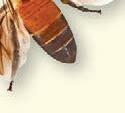
2 In NZ what is currently used to combat varroa mites?







3 What is RNA?







4 How does using RNA technology give us the ability to target just bees and not affect other insects?
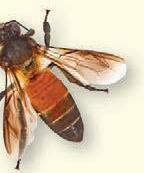
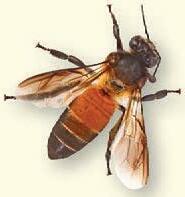
5 How long have they been testing this technology? How effective is it?
6 When is this technology expected to be internationally available?

We know that wines are savoured for their variations of sweetness, acidity, tannin, alcohol and body and these are influenced by environmental factors where the grapes are grown. It is hoped that soon there will be a similarly descriptive taste vocabulary for New Zealand honey.Manuka honey is well known and is a high value export product. It is hoped that the “Flower to flavour” project will give other varieties the same opportunity.
Head to research-to-put-honeys-taste-on-tongues/https://www.farmersweekly.co.nz/ and then answer the following questions:
1 What makes manuka honey different from other varieties?
2 What are researchers aiming to find out?
3 What will they be collecting? What are they extracting? What are they measuring from this?
4 What is the issue with labelling honey based on taste? Why is it problematic?
5 What will they use to analyse the chemical profile of the nectar’s? How do these work?

6 How many flowers are they hoping to collect samples from? Why would they need this many?
1 Why are weeds a problem in crops and pastures?
2 There was a surge in interest in “weed zapping” in the 1970’s and 1980’s, what happened to make interest subside?

STRETCH YOURSELF:
1 Glyphosates have been a mainstay of many productive land users. Do some research, how does glyphosate work?
2 Why has there been some movement away from the use of glyphosate?
3 AgResearch’s lead scientist Trevor James says that weed resistance is increasing at rates that exceed expectations. What is weed resistance?
4 How is Bloomers method different from previous electric weed control?
5 Why may weeds in pasture be harder to target compared to crops?
6 Why does James believe that Bloomers machine has potential?
7 What are some of the other options being studied under AgResearch’s resistance programme?


From the ground up - Rebecca Greaves from Young Country takes a closer look at those who have dared to think big, push the limits and give it a go in business. Asking them what the catalyst was to take out how they got to what

In this edition Rebecca talks to Delwyn Tuanui from the Chatham Island Food Co and how he chased his dreams the ground From running of of Chatham Island blue Melbourne?


6 freshly caught in the Chathams plate Melbourne?

7







Are you a parent or teacher and want to receive AginED every week directly to your email inbox? Send us an email to sign up at agined@agrihq.co.nz Volume 124 I September 26th, 2022 I email:agined@agrihq.co.nz I www.farmersweekly.co.nz/agined
To read more head to: WEEDSWEEDS,WEEDS,69938dd0cf-82897495medium=email&utm_term=0_4f497899e6-CAMPAIGN_2022_09_12_03_50&utm_campaign=69938dd0cf-EMAIL_weeds-the-zap/?utm_source=AgriHQ&utm_co.nz/electric-shocks-could-give-pesky-https://www.farmersweekly.
the plunge and make a change. Finding
where they are now,
they’ve learned along the way, and what their advice is to other aspiring agri-innovators.
from
up.
around Melbourne with a chilly bin
blue cod, knocking on the doors
the city’s best chefs, he knew that he had a top class Toproduct.listen follow this link: 1xUOI33I-MWlP5qqBV4H13JJszU&nd=15&fbclid=IwAR1a3ICwqeCmEZX35RS3kVtpNGxrlCMvnode/01ScnDBO5W2YcSLJhDf8y2?si=4f872598e33742bhttps://open.spotify.com/epis What does Chatham Island Food Co produce? 2 What are some of the unique challenges of living and working in the Chathams? 3 What was the catalyst that started Chatham Island Food Co and saw Delwyn return to study? 4 What course did Delwyn undertake in Melbourne? 5 How did he manage to get the
cod in front of the best chefs in
What was the turnaround time from
to on
in
What award did they win? 2 3 4 5 6 7 8 9 10 11 12 13 14 15 16 17 18 19 20 21 22 23 24 25 26 ALL ABOUTBEES
Across 6BEEKEEPER 8HONEYSUPER 13COMB 15LAYINGWORKER Down 1BROODNEST 2COLONY 3POLLEN 4VEIL 5DRONE 7QUEENXCLUDER 9METAMORPHIC 10CARBOHYDRATES 11FORAGE 12SWARM 14THORAX 16HIVETOOL 19PUPA 20INSECT 21SMOKER 22BEESUIT 25STING 17HIVE 18APIARY 23APISMELLIFERA 24HONEYCOMB 26NECTAR 6 Person who takes care of bees 8 Box used in hive to hold honey 13 Wax that is made into storage cells 15 Female bee, not the queen, who lays eggs 17 Where bees live 18 Place where bees are raised 23 Scientific name for bees 24 Wax cells where honey is stored 26 Made into honey ACROSS DOWN 1 Where bees raise young 2 Group of 20,000-60,000 bees 3 Bee protein source 4 Covers your head and face 5 Male bee 7 Keeps Queen out of the honeycomb 9 Type of a bee’s life cycle 10 Honey to a bee 11 Finding food 12 Colony splits to form new colony 14 Midsection of a bee’s body 16 Used to pry hive parts apart for hive inspections 19 Third stage of bee life cycle 20 Bee 21 Keeps bees sedated when opening hive 22 Keeps bees from stinging you when you are working with the hive 25 Small apparatus that injects poison into an enemy from the bee’s body U.S. beekeepers lose approximately 40% of their honey bee colonies each year. The varroa mite is a leading cause of honey bee mortality. 27 AginED
From the

savethinkingIntegratedwilloursoil
Bryan Gibson Managing editor
THE long-awaited National Policy Statement for Highly Productive Land has been released, promising protection for New Zealand’s most precious soils.

It’s something the horticulture industry has been seeking for years. We’ve watched as cities like Auckland spread south, onto land that’s traditionally kept the supermarket shelves stocked with fresh vegetables.
There’s a finite amount of this precious soil.According to the recently published The Soils of Aotearoa New Zealand, NZ’s most valuable, productive soils comprise only 5% of the total available.
Of that, a mere 0.7% of NZ’s land is classified as falling into the highest-quality Land Use Category (LUC) 1, and 4.5% into LUC 2.
Despite this, over 10% of these most highly productive soils have already been lost to lifestyle blocks and housing, with a shocking one third of the best land in Auckland and Waikato lost for good to urban expansion under an accelerating process.
The case for protecting these soils from further losses to housing and roading is raised as a compelling one by the authors.
At a time when food security is top of mind and the price of food is skyrocketing, protecting our nation’s vege garden has never been more critical.
Houses can be built on almost any soil, or even on top of other houses. Food, on the other hand, needs the best we’ve got.
But while this all sounds like common sense, getting the settings right is tricky.
The policy hasn’t gone down well with some of the people who, right now, rely on those precious soils for their livelihoods.
They say it restricts their ability to achieve the highest returns should they choose to sell up in future.
The government is well aware of this issue. Property rights need to be respected to a certain extent within any regulation.
It’s a story we’ve seen play out with other land classes in recent years.
Some in the farming community want restrictions put on what land can be purchased for forestry so that good sheep and beef country is preserved.
That again would affect the ability of landowners to cash out at the market price.
Recent figures from the Ministry for
Primary Industries show that plantings registered with the Emissions Trading Scheme have shot up recently, but most of it has been on marginal land.
There have been a number of iconic stations sold to foresters, which sparked concern and even outrage, but the data doesn’t support wholesale land-use change – yet.What is evident is that New Zealand needs to grow its housing stock drastically to meet the future needs of the population.
In the cities there is powerful opposition to intensification and councils are baulking at implementing government directives.
But those same councils have also baulked at putting in the infrastructure to support the urban Christchurch,sprawl.for example, doesn’t have the public transport network you’d expect of a modern city.
And a nice house in the suburbs becomes a lot more expensive if the cost of filling the supermarket trolley each week is rising sharply.Itdoesn’t make sense for NZ to try to grow enough bananas to sate local appetites.
But for broccoli and lettuce? That equation is easy to solve – and the solution is local.What’s also evident is that every decision we make is linked. Delivering the life New Zealanders want at a price they can afford calls for integrated thinking that allows us to build thriving communities with access to quality housing, infrastructure and food.
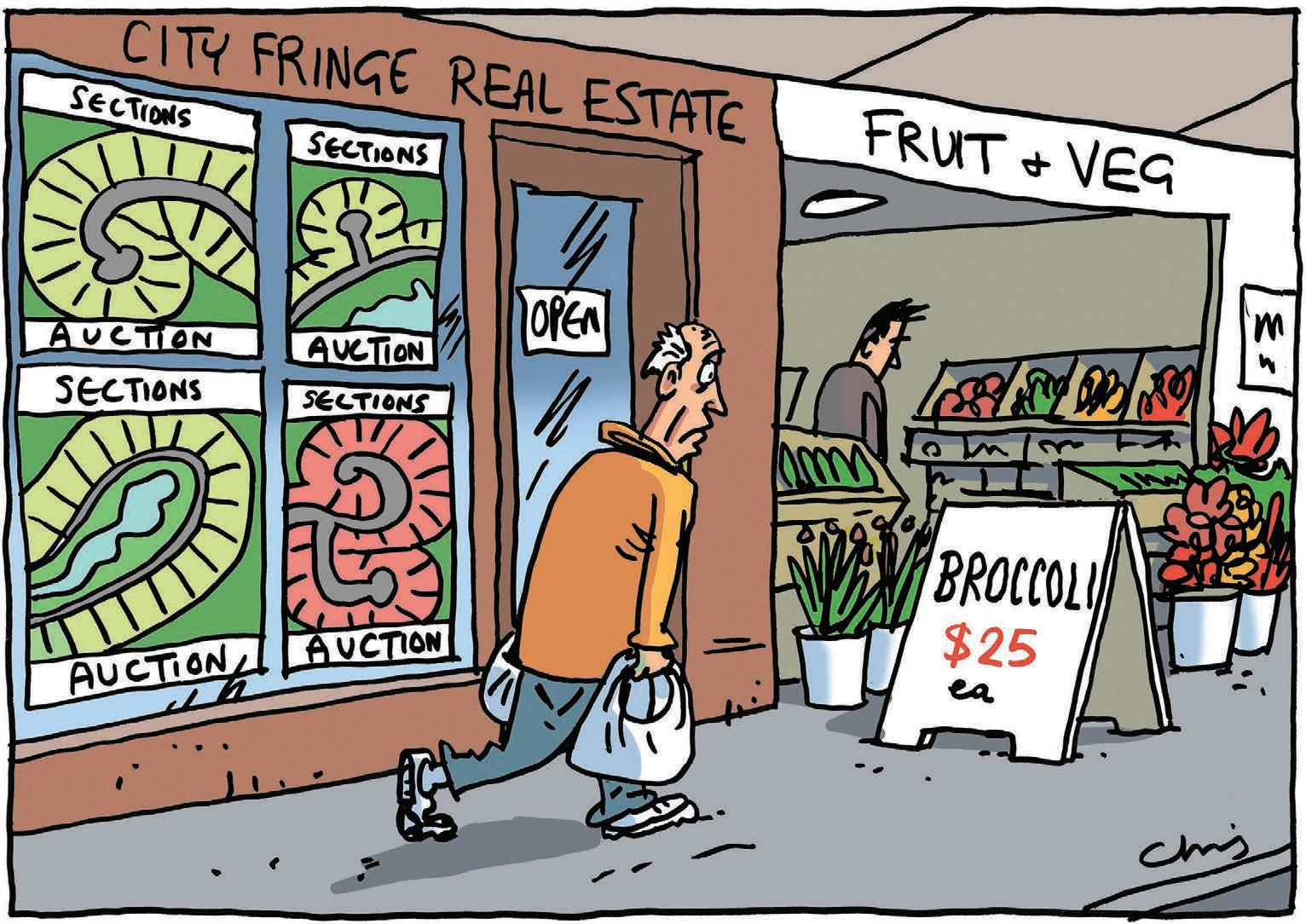
Letters of the week
Sea AndrewourneededchangeinthinkingLuddington Christchurch
IMAKE no apology for ruffling a few feathers in an opinion piece, “New regs? Bring them on” (August 8). Just now Dr Victoria Hatton has called us laggards with siloed thinking. Harsh perhaps, but there is more than enough justification to do so.


Rob Chrystall blames the British for the United Kingdom’s recent record temperature of 41.7% because the Brits “haven’t done enough”. Well, they have done a lot more than we have. I wonder if Rob would go on to blame Pakistan, with one third of the country flooded, for not doing enough.

Rob also needs enlightening on how the British have changed. There are no subsidies in the UK to produce food anymore. They are for environmental and social improvements only.Inthe Farmers Weekly of September 19 I read “No one saw the icebergs” from the authors of the Waka Adrift open letter. The imagery of the Titanic stands squarely on its head.The Titanic did not sink because her controllers were trying to limit the emissions from her four colossal smoke stacks. This very Titanic, the human race as it is today, is inevitably going to sink because we are in a Ponzi scheme with the planet and talking ourselves out of doing anything about it.
We cherry-pick science, and watch other parts of the world flood or burn, and feel secure (until the next flood or bushfire that immediately affects us) on lifeboat New Zealand.Let’sacknowledge that we are part of the problem and stick our hands in the air, not our heads in the sand, and simply ask: what can we do? The next thing to do is stop blaming everyone else, and start getting on with fixing it from within the farm boundary. From a tiny change to a sea change in thinking is required. P.0.
Breeding earlier maturing sheep

Each new generation of lambs haver clearer heads, legs and crutches. They have bigger rib cages, wider loins and thickset deep hindquarters. Come and have a look.
Check us out at: romney-rams-brookfield.co.nz
Please contact Ross 0274 999 230 ■ Damien 021 678 744 ■ Email: rfh@inspire.net.nzMy boss, Ross, has 500 ram hoggets similar to me.
LK0113100© 28 Editorial
Editor
Best letter WINS a hikingqualityknife Send your letter to the Editor at Farmers Weekly
Box 529, Feilding or email us at farmers.weekly@agrihq.co.nz FARMERS WEEKLY – farmersweekly.co.nz – September 26, 2022 Opinion28
David Wyllie Mid Canterbury sheep farmer

AFTER seeing a television andpromotingitemsyntheticplant-based meats and reading an article by Federated Farmers past president Katie Milne, I make this appeal collectively to the sheep industry in New MilneZealand.saidfarmers of the world are asking governments to take food production seriously. So here is my contribution.
I am a passionate member of the sheep industry, having served on many industry associations, including a term on the Alliance Suppliers’ Committee, where I learnt a lot from former chairs and chiefThroughput,executives.rebates, dividends, marketing, bonus shares, workforce standards and so on were all necessary components of the processing, but they could be at the expense of attention to the quality of the raw materials.
Perhaps during the 1970s, ’80s and early ’90s it wasn’t really an issue, apart from placing Omega grades

However,overseas.wehave reached a stage in the industry’s evolution where quality is paramount and almost a necessity, I believe – and the quality of lamb has deteriorated alarmingly in recent times.Wehave successfully addressed the quantity aspects of the industry with high lambing percentages, higher weights per lamb and, in a nutshell, just as much tonnage from far fewer sheep. I applaud this outcome.
But the standard of meat we purchase for the household and eat at restaurants is very
inconsistent and falling in eating standards and palatability.
This is endorsed by many people we associate with, from a broad spectrum of society.
Likewise, the indicators are prevalent at ewe fairs and lamb sales, where breeds of sheep have become less important and new breeds and crossbreeds have come to Thesedominate.newcomers are part of a quest for hardy sheep to do well in the harsher environments now occurring.Thistrend is acceptable – up to the point where it affects the quality of the raw materials, meat andHerewool.are some examples.
At the 2022 Temuka Adult Ewe Fair, 65%-70% of the offering weren’t prime enough to kill in a very mixed poor-quality offering after they had grazed locally in one of the best feed-production seasons in recent times.
deserving of the low price we are all experiencing as producers.
Yet the associated production figures of this offering were the highest of its breed that I am aware of because that attracted us to the sale, as advertised through theThemedia.industry has obviously got into a very fashionable, even a gimmicky, situation where fads and whims rule, at the expense of fact and reality.
I have observed that a lot of breeds are becoming too shoulderdominated, probably at the expense of the hind quarter.
and encouraging, apart from the fact that I feel the poorer producers are being subsidised by the good legitimate provider?
Given that pricing structure, I would like to see producers rewarded accordingly.
This can be achieved to my knowledge by using your threedimensional scanning (Via), which carcases pass through.


At a dispersal sale of 700 ewes in the North Island in February 2020, of 700 odd ewes none were good enough to buy let alone kill, and there were at least 16 dry ewes and another 82 ewes that had missed one or more lambings. The wool was disgusting and

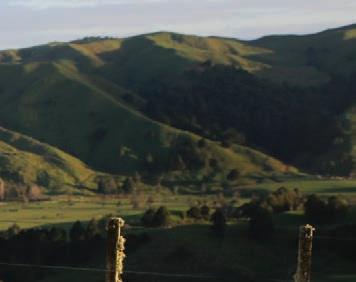
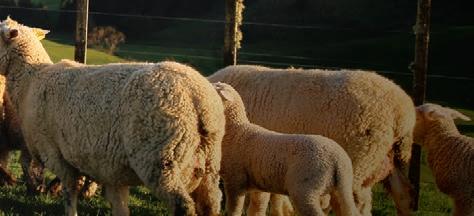

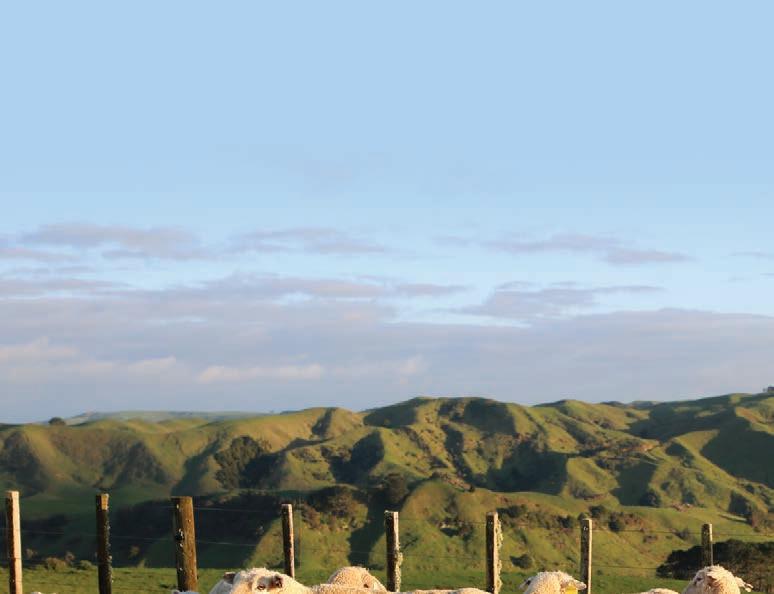
Low HighInputProduction
Waimai rams


When buying lamb, I notice that shoulder meat pricing is between $9-$12/kg. Hind quarter at the same time $16-$20/kg, loins at $24/kg and racks at $40-$50/kg.Pricesdovary with time and season, but that same ratio between the cuts seems to exist.
Therefore, the message is the more affluent consumer dictates the pricing structure and isn’t that what we as producers and processors should be supporting
I stand to be corrected but can I be presumptuous enough to ask what purpose Via scanning serves at Inpresent?mybreeding policies, since inception I have used CT and ultrasound scanning to determine the meat-fat-bone ratios and percentages.Ihavelearnt a lot from the exercise, to the point it has changed my focus on carcase structure and provided me with facts.Iam now thinking why, apart from personal satisfaction, don’t I just eliminate those associated costs and join the rank and file?
Actually, my nature and philosophy don’t allow me to do
that, hence this letter of inquiry andAtconcern.myageof 81, I should just ignore the whole scene, retire and go to seed, but I trust this expression of concern conveys my passion for the industry and the satisfaction gained as a consequence.Plus,Ifeelfor the younger generations, who will hopefully succeed in carrying our sheep industry into a profitable and rewarding future.
OPEN DAY
See our stock on-site at 841 Waimai Valley Rd Thursday 13 October, 10am–4pm

ELITE RAM SALE
On-site 841 Waimai Valley Rd. Thursday 3 November, 1pm. We will also be auction platform bidr.co.nz enquiries from 4 November. rams
In my view ...
Meat quality falls as fads and fashions rule
Got a view on some aspect of farming you would like to get across? We offer readers the chance to have their say. Contact us and have yours.
PREMIUM: Mid-Canterbury sheep breeder David Wyllie says we have reached a stage in the industry’s evolution where quality is paramount and almost a necessity.
We have successfully addressed the quantity aspects of the industry ... but the standard of meat we purchase for the household and eat at restaurants is very inconsistent and falling in eating standards and palatability.
ALASTAIR REEVES 07 825 4925 or 027 457 waimairomney.co.nzwaimairomney@gmail.com3615
using online
Private treaty rams
Waimai CharaBlack terminal
available.
are bred to give you a low input flock, with selection for facial eczema tolerance, worm resistance, low methane, low dags and large breech. At the same time, their production traits make you money: strong growth, high fertility and good survival. Join us on our journey toward creating a more profitable low input sheep. 29 In My View
Phoneinmyview@agrihq.co.nz063231519
FARMERS WEEKLY – farmersweekly.co.nz – September 26, 2022Opinion 29
Cow concerns land wide of the bull’s eye
viewAlternative
and these need to be properly understood before any amendment proceeds.Uptongoes on to say he wants a Climate Impact Policy Statement and that the public need to be publicly informed about the changes.Therealso needs to be proper scrutiny of the environmental consequences that may flow from the proposed DIRA changes.
All that tells me that the PCE appears to know little about our dairy industry and even less about DIRA and its ramifications.
WHO would be a dairy farmer? It’s capital intensive, you work long hours in all conditions, you keep the New Zealand economy going, you get inundated with rules and regulations, many pointless, and everyone criticises you whether they know what they’re talking about or not.
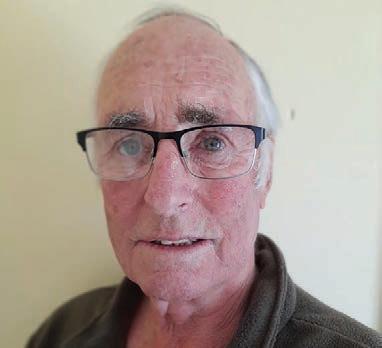
A couple of weeks ago the Parliamentary Commissioner for the Environment (PCE), Simon Upton, wrote to the Minister of Primary Industries, Damien O’Connor, to caution about the proposed Dairy Industry Restructuring Act (DIRA).
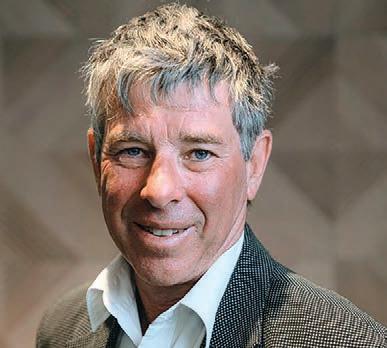

In a letter copied to Environment Minister David Parker and Climate Change Minister James Shaw, we read that the PCE is concerned that the DIRA changes hold the potential for negative environmental consequences
Mind you, a media statement from the Greens made the PCE’s utterances appear vaguely rational byItcomparison.saidO’Connor could be about to give one of New Zealand’s biggest polluters a free pass to pollute even more.
The Green’s agricultural spokesperson, Teanau Tuiono, who I’d previously not heard of, told me that it’s pretty simple, really: more cows mean more emissions.
One could politely ask how the proposed DIRA will mean more cows?Asyou will know, I’ve been critical of Fonterra over the years, resulting in some fairly solid scraps. While I didn’t have a lot of time for the old crew, I have some considerable respect for the current organisation. They don’t have the egos I’d previously struck and they have much greater focus.
I also support the proposed DIRA. Fonterra shareholders have voted for the capital restructure and the government has obliged.
For the life of me I can’t see how DIRA will mean more cows and more pollution.
In addition, Fonterra is moving faster than anyone to convert its coal-fired boilers. The PCE should be congratulating Fonterra, as should the Greens.
For a start, at the heart of Fonterra’s current strategy is sustainability. In reality the new capital structure frees up farmers to make discretionary choice around investment to meet environmental outcomes that are critical for our future.
Upton is free to write to whoever he wants but did he do any modelling about the possibility of extra cows? Did he consider what the industry has done and is doing?Didhe read Fonterra’s 2021 Environmental Report? It should be compulsory reading for all MPs. The report – as well as pointing out that NZ dairy farmers have a carbon footprint a third of the global average – spells out three main aims and achievements.
They are to improve the health and biodiversity of our land and water, to lead the transition to a low-carbon future and to help meet growing nutritional demand through improvements in productivity and minimising food waste.Inaddition, Fonterra is moving faster than anyone to convert its coal-fired boilers.
The PCE should be congratulating Fonterra, as should theWhatGreens.both are also ignoring is that the global milk price is determined by auction and not the whims of Fonterra.
Finally, I believe Upton was confused. You can’t draw a line between industry structure and farm profitability.
The issue I have is that the restructure as outlined in the DIRA proposals is about Fonterra’s future in what will be an era of declining milk supply.
For the uninitiated in Wellington, a declining milk supply means fewer cows.
Fortunately for the good of dairy farming, the broader industry and the country, O’Connor is ploughing ahead with DIRA. He is
to be congratulated for that. He issued a statement back in April telling the country how the dairy industry was responsible for $19.1 billion a year in exports while employing 50,000 people.
“The success of our dairy industry and the broader primary industries will underpin our economic recovery from covid-19,” O’ConnorSomeonesaid.should point that out to the PCE and the Greens.
Further to the minister’s credit, he has rejected the current calls for stalling DIRA.
What I find frustrating is that I can see no reason for the grandstanding by the PCE and the Greens. Dairy cow numbers are declining and will continue to do so. There is absolutely nothing in DIRA that will see cow numbers increase. The Fonterra capital restructure is there to handle decreasing milk supply. You don’t need to be a rocket scientist to figure that out.
Finally, we’ve had some amazing scientists who have filled the PCE role. Scientists with a solid reputation both here and overseas. It would be good to go back to having the job filled by scientists.
Now that’s what I call a right royal send-off
From the ridge
the service in Westminster Abbey and then totter off to bed around 11pm but became so immersed in the occasion that it wasn’t until 1am when that happened. I was even tempted to plough on, but a working day ahead meant I had to beItsensible.turnedout to be an extraordinary event and I found it compelling viewing.
It reinforced that the British do this sort of thing better than anyone. If you were able to stand back and view the whole thing with a critical eye, you’d say it was absolutely bonkers.
Apparently the most-watched TV event ever was the opening ceremony of the 1996 Atlanta Olympics when maybe 3.6 billion tuned in, and guesses are that a billion or three tuned in to this one.So those of us who got captured by this spectacle were in good company along with perhaps a third of Initiallyhumanity.Iwasinterested in watching the funeral because I’m fascinated with Westminster Abbey and the history that goes with it.
HAVING written about the Queen’s death last week, I hadn’t considered I’d follow up with the state funeral, but here we are.
I thought I’d just tune in for
The pomp, the archaic history, the elaborate uniforms including swords, millions of people, huge cost and disruption and a funeral service that spanned seven or eight hours for just one human being appears completely out of all proportion.
It’s been the scene of funerals, burials, coronations and weddings for nearly 1000 years.
I spent two or three very happy days in Westminster Abbey when I worked in London in the early 1980s.
 COUNTING COWS: Dairy cow numbers are declining and there is absolutely nothing in DIRA that will see their numbers increase, Alan Emerson says.
Alan Emerson Semi-retired Wairarapa farmer and dath.emerson@gmail.combusinessman:
LAST RITES: Westminster Abbey hosted dignitaries from around the world for the funeral service of Queen Elizabeth II.
Steve Wyn-Harris Central Hawke’s Bay sheep and beef farmer: swyn@xtra.co.nz
COUNTING COWS: Dairy cow numbers are declining and there is absolutely nothing in DIRA that will see their numbers increase, Alan Emerson says.
Alan Emerson Semi-retired Wairarapa farmer and dath.emerson@gmail.combusinessman:
LAST RITES: Westminster Abbey hosted dignitaries from around the world for the funeral service of Queen Elizabeth II.
Steve Wyn-Harris Central Hawke’s Bay sheep and beef farmer: swyn@xtra.co.nz
30 Opinion FARMERS WEEKLY – farmersweekly.co.nz – September 19, 2022 Opinion30
Continued next page
MIA annual report a tribute to whole sector
Meaty matters
vibrant sheep and beef sector by focusing on three key priorities: to grow profitability and value add, improve sustainability and environmental standards, and work closely together to deliver on behalf of the sector and communities it serves. Since then covid has presented many challenges – shipping, logistics, workforce and processing constraints – and the pace of regulatory and policy change has quickened, while there has also been a change of consumer attitudes and priorities.
THE Meat JunereportAssociation’sIndustryannualfortheyearended30emphasisesthe
superb performance of the red meat sector as a whole in a year of significant challenge.
The highlight was clearly the strength of overseas markets, resulting in consistently high prices for beef, sheep meat and co-products, now referred to as the fifth quarter.
Exports totalled $11 billion for the first time, a 20% increase on 2021, made up of $4.6b for beef, $4.3b for sheep meat and $2.1b for the fifth quarter, which includes meat and bone meal, tallow, offal, hides, pelts and high-value ingredients for pharmaceuticals, among other products.
The average FoB price of beef was $9.49 per kilo, up by more than $2 on the previous year, and sheep meat averaged $11.82, reflected in unprecedented payments for livestock, which helped to compensate for higher on-farm costs.
These export values were reflected in domestic meat prices that have also risen by double digit percentages over the past year. On the one hand, New Zealand’s trade gap, which has reached a massive $27b, would have been even worse without the success of the red meat sector, while on the other domestic inflation is at a level unheard of since the 1980s.
The report highlights the seriously disruptive nature of the past two years since the sector strategy was released with the stated vision of creating a
The forced restrictions on processing capacity, coupled with chilled distribution and overseas port access problems, prevented meat companies processing the whole carcase to the maximum profitability.
At times this resulted in a loss of up to $200 per head of cattle, estimated at loss to the industry of $600 million for the year. The high prices received for frozen product partially offset the inability to export as much of the traditionally higher value chilled lamb cuts to key markets like the United Kingdom and European Union.
Despite all these challenges, the industry succeeded in exporting a record value of meat and co-products to 108 global market destinations. Almost three-quarters of our red meat trade will be covered by free trade agreements, following the signing of FTAs with the UK and EU, although beef access to the EU under the agreement concluded in the FTA negotiations will remain disappointingly low.
Further opportunities to achieve FTAs are very limited with a low probability of concluding deals with the United States or India on acceptable terms in the immediate future, unless either country can be encouraged to sign up to the Comprehensive and Progressive Agreement for Trans-Pacific Partnership.
Australia has signed an FTA with India, but dairy remains a sticking point for New Zealand. Agriculture and Trade Minister Damien O’Connor is not optimistic about the prospect of negotiating an acceptable agreement.Thatsaid, the India New Zealand Business Council
delegation in India at the moment with representation from the primary sector hopes to re-ignite business relations between the two countries after the covidinduced lull.
Despite all these challenges, the industry succeeded in exporting a record value of meat and co-products to 108 global market destinations.
China remained the largest export market, taking 37% of the total, which was down from 40% the previous year because of its zero covid policy and strict requirements for exporters of cold chain products.
China’s imports of halalcertified production was especially notable, taking two-thirds of New Zealand’s halal volume for the year to satisfy demand from Muslim communities there. Beef value and volume to China grew to record levels, by 46% and 12% respectively for 2021/22,
but a fall in China’s sheep meat consumption led to a drop in total exports. This decline was offset by major gains in shipments to Europe and the US, which imported 62% higher product value to an all-time record level.
Unfortunately the historically high market prices are already in decline because of the economic impact of high energy costs, inflation and continued lockdowns leading to unemployment and lower consumer spending in our major markets.
Despite the unprecedented export value, the actual volumes continued to decline year on year, entirely due to a 10% fall in sheep meat, only partly cushioned by a 1% rise in beef volume.
The trend to lower quantities of lamb and mutton is certain to continue in future because of land conversions to forestry, the recent impacts of which have yet to show up in the statistics.
Unless current government policy is modified, the priority of incentivising carbon offsets at the expense of food production will irrevocably lead to the death of NZ’s iconic sheep-farming sector.
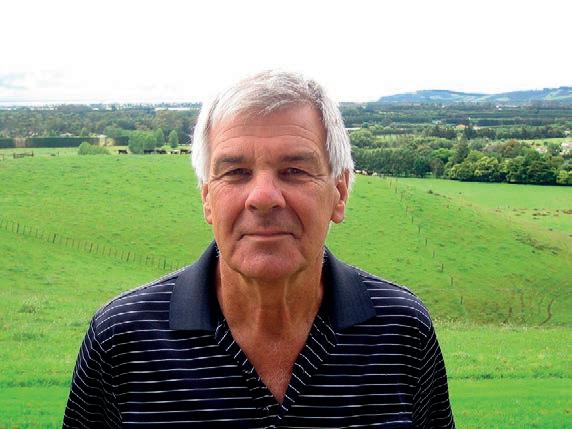
The annual report does not specifically refer to this particular threat to the industry, but it emphasises the work Beef + Lamb NZ and the Meat Industry Association (MIA) are doing to tackle climate change, both through He Waka Eke Noa and work on a climate change strategy and action plan.
This will focus on the sector’s impact on land-use change, promoting the value of red meat as an environmentally sustainable product, and the actions being taken to support emissions reduction. This work will develop outcomes that will target policymakers, sector stakeholders and the public, while ensuring the sector addresses climate change in a scientifically credible way and at the same time ensures its

resilience.Let’skeep our fingers crossed that the government of the day and the Climate Change Commission are receptive to these recommendations. The MIA annual report serves as further evidence proving the enormous importance of the whole red meat sector to NZ’s economic future.
I poked around reading the inscriptions on the stones, looking for interesting characters from history.There are 30 kings and queens of England buried there, starting with Edward the Confessor who died in 1066 and Elizabeth I to name just two.
However, there are over 3000 others buried there.
Newton, our own Ernest Rutherford, poets, writers, politicians such as Churchill and allOliversorts.Cromwell, who executed a king, was buried there for three
years but was dug up, his body hung before being disposed of.
The Abbey provided the backdrop but the solemnity and dignity of the service for the dead queen immediately became the attraction for me, as it should have.
The readings, beautiful choral singing which resonated throughout that vast space, the lone bagpiper, trumpets and all the other happenings were genuinely moving.
Then they carried her out to the gun carriage, which was pulled by 142 young Royal Naval ratings with linked hands. This tradition began after Victoria’s 1901 funeral
procession when the horses got spooked and nearly spilled her coffin onto the road.
I was mesmerised watching these solemn young men and women walking perfectly in step
Our middle son Hugh, who is a surveyor in London and had been working on London Bridge (because it’s falling down), was redirected into other work for the preparations.funeral
and indeed the whole 2kmlong procession compromising of thousands of military personnel all appeared in perfect synchronisation. Good thing I wasn’t in the parade as I’ve been practising that walk since and I’m not particularly good and couldn’t keep it up for 10 minutes let alone two hours without stuffing up. Once they had transferred her from the carriage to the hearse for the slow journey to Windsor, I was able to tear myself away and go to bed.Our middle son Hugh, who is a surveyor in London and had been working on London Bridge (because it’s falling down), was
redirected into other work for the funeral preparations. He did an all-nighter leading in to the funeral, assisting with removing scores of traffic lights from the route, snatched a few hours of sleep, watched a bit of the funeral and the next night put them all back in place. Just so everything looked perfect for the procession.Sotakenwith this whole occasion was I that I suggested to Jane that I wouldn’t mind a sendoff like this myself, including a gun carriage and 142 people pulling it, trumpets blaring, bells tolling and artillery firing, and she has said she will give it consideration.
ON THE HOOF: The average FoB price of beef was $9.49 per kilo, up by more than $2 on the previous year.
Alan Barber industry
31 FARMERS WEEKLY – farmersweekly.co.nz – September 19, 2022Opinion 31
Continued from previous page
Meat
allan@barberstrategic.co.nz,commentator: http:// allanbarber.wordpress.com
Fresh impetus for Headwaters
HEADWATERS, built on the collaboration of farmers breeding lambs with high fat levels for consumption in the world’s finest restaurants, has a new majority shareholder in Lone Star Farms and a new general manager in Tim Saunders.Thenumber of lambs that meet its breeding specifications – and can therefore be marketed under the Lumina brand – has doubled from 50,000 in 2020-21 to 100,000 last year. Headwaters is looking to add 100,000 lambs a year and to ultimately hit one million.
Headwaters was formed in 2006 to breed ewes with high levels of desirable fat that is passed on to lambs. The resulting fat and texture enhances the dining experience.Througha Primary Growth Partnership, the Omega Lamb Project, as it was initially called, had established links between long-chain Omega-3 fatty acids, desirable polyunsaturated fats and low pH that enhance taste, succulence and cooking consistency.Theproject found that these fat attributes are highly heritable and also aid ewe resilience.

Saunders says Headwaters links farmers to that science and genetics to sustainably breed lamb that is desired by consumers.
“Our farmers are not one part of the value chain, they deserve to be part of all of it,” Saunders says.“We see them as integral all the way through, with skin in the game, and a decent profit share.”
Headwaters is a grouping of about 50 farmers, mainly in the South Island, who predominantly run breeding and finishing operations.Thefarms involved in the project source their rams from centralised breedingThroughgroups.ajoint venture with the Alliance Group, the Lumina lamb offspring are marketed to leading restaurants in New Zealand, London, Italy, Las Vegas, Vancouver, China, a famous Hollywood hangout in Palm Springs, Melvyn’s, and the Burj Khalifa in SaundersDubai.saysthe fact that Lone Star Farms has come on board as cornerstone shareholder, the appointment of Richard Green as chair and the appointment of new staff all signal an intent to grow theHebusiness.describes Headwaters as a community of like-minded sheep farmers who share data and information for the wider good, for which they receive a premium over the schedule price.
This has increased by a third in recent years.
To qualify, farmers must meet supply requirements, such as breeding programmes and being accredited to the Farm Assurance Programme-Plus.Saundersseesthis model of tailoring product to specific markets as the future for NZ meat exports, effectively allowing farmers to earn more off less.
“Our farmers need to be earning more money off less, so we have to be supplying premium markets but that needs to be at scale.”
Small niche markets are not going to generate the income and value that is required, and markets need constant supply.
Chefs change menus two or three times a year, so NZ lamb has to be always present or it could be dropped, Saunders says.

“For Headwaters, the focus is not only on sourcing and supplying a unique product.
“We want to grow a community of progressive farmers that are connected to what happens to their lambs beyond the farmgate, andThatcare.”involves farmers and chefs meeting to discuss their respective roles and Saundersneeds.joined Headwaters about a year ago, having held a senior management role for three years at the Māori food and beverage company Kono and then Lone Star Farms, which has six farms in the South Island covering over 13,000 ha.
Saunders says they are seeking to add about 20 to 30 new suppliers each year, farmers who are prepared to meet the company’s exacting supply agreements.
Initially he was the operations manager for Headwaters but stepped into his current role in July last year.
Born and raised in Wellington, Saunders spent time in Marlborough when he was young. He was introduced to the primary
sector there, working on vineyards and on sheep and beef farms. He graduated from Massey University with an applied science agribusiness degree and worked in the wine industry and as a senior relationship manager for commercial and agri clients at ANZ before moving into the agrifoodSaunderssector.spent time in London, where he became frustrated seeing product, carefully grown and nurtured by producers, lose ownership and control to marketers.Hesubsequently witnessed the impact of disrupters to traditional supply models and the need to become aware of threats before theySaundersarrive. says while Headwaters’ focus is on lamb, it could expand to beef and venison bred for the same healthy fat attributes and also supplied to the finest restaurants around the world.

Our farmers need to be earning more money off less, so we have to be supplying premium markets but that needs to be at scale.
Tim HeadwatersSaundersGROWTHPHASE:
Headwaters manager Tim Saunders is overseeing a push for growth at the breeding and finishing company.
Photo: Tim Cuff
THE GOOD STUFF: Headwaters was formed in 2006 to breed ewes with high levels of desirable fat that is passed on to lambs.
WORKING TOGETHER: The farms involved in the project source their rams from centralised breeding groups.
32 People FARMERS WEEKLY – farmersweekly.co.nz – September 26, 2022 People32
Since 2006 a small innovative livestock breeding company has been beavering away establishing itself. Now a new cornerstone shareholder and management have given Headwaters a boost. Neal Wallace meets new manager Tom Saunders.
Fungi may be the key to more resilient plants

RESEARCH climate-resilientinto plant production will deliver new technologies to enable food and fibre industries to create higher value products, say researchers.LincolnUniversity has been granted $10.7 million from the government’s Endeavour fund to research how volatile chemicals produced by fungi –fungal volatile organic compounds (FVOC) –can be applied in agriculture to increase plant resistance to stress.

Research programme leader Professor John Hampton says the products that are eventually produced will deliver a significant advantage for NZ farmers.

“The work we’re doing at Lincoln University will assist NZ’s food and fibre sector to meet the challenge of remaining a producer of safe food in a climate change-impacted world, while also demonstrating and maintaining our reputation as environmental kaitiaki,” Hampton says.Aswell as their ability to increase plant resilience and promote growth, the new FVOC products will contribute to more sustainable farming practices in other ways. They will contribute to decreasing greenhouse gas emissions through reducing the need to apply chemical pesticides and consequently the use of machinery powered by fossil fuel.
“Improved plant water-use efficiency resulting from the application of our products will also reduce the need to pump water for irrigation.
“We also see a role for the new products in forestry plantings of both indigenous and exotic species designed to contribute to reducing CO2 release through allowing increased seedling survival and stronger growth for nursery production,” Hampton says.
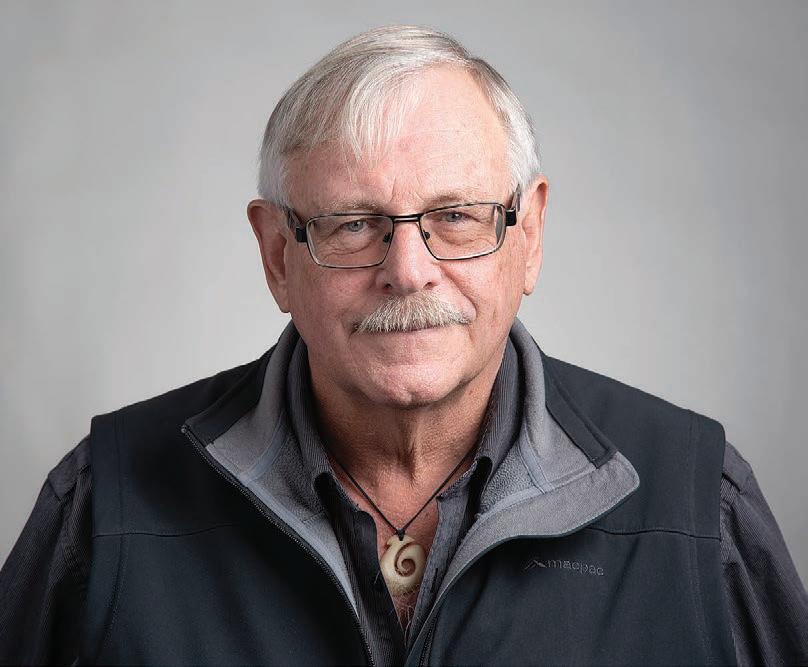

The university’s approved Endeavour research programme focuses on the development of FVOC products which will enable plants to more strongly resist stress caused by adverse climate conditions or disease.



The new FVOC products can be applied as a seed treatment or incorporated into soil.


They will interact with the plant through chemical signalling, inducing changes within the plant that allow it to increase its resistance to drought, heat and microbes causing plant disease
stress.TheLincoln









research also aims to show how the beneficial impacts of FVOCs on plants are transmitted to the next generation viaTheseed.goal of the research programme is to have commercial FVOC products available for use by New Zealand farmers by 2030. Once in use the products will mitigate climate change impacts
on pastoral, arable and vegetable production. The new knowledge generated can also be applied to native ecosystems to protect them from external stressors including climateLincolnchange.University Provost Professor Chad Hewitt says the FVOC research project exemplifies the extent and quality of the research being undertaken at the university.“Bydeveloping seeds already primed for resilience to abiotic (drought and heat stress) and biotic (microbes causing plant diseases) stress, for a property that will be passed through plant generations, our FVOC research will deliver the new products, tools and technologies to enable our food and fibre industries to create higher value products for domestic and international consumers,” HewittLincolnsays.University has leveraged existing research partnerships with AgResearch, Massey University, Scion, University of Canterbury,
University of Otago and Ngāi Tahu Farming and Forestry in its FVOC research programme. The
university has also established international collaborations in the US, Singapore, Mexico and Austria.
RESILIENT: Once in use the products will mitigate climate change impacts on pastoral, arable and vegetable production.
BEST START: Research programme leader Professor John Hampton says the study will also likely have a role in the forestry sector, leading to increased seedling survival.
Improved plant wa ter-use efficiency will also reduce the need to pump water for irrigation.
Professor John Hampton Lincoln University
Premium New Zealand Merino heirloom baby www.naturesgiftforbaby.comblanketsAt Natures Gift For Baby we believe the key to a good nights sleep is a great blanket! Gentle on Baby’s skin and gentle on the 5environment.timelesscolours. $99ea LK0113071© Free deliverywithinNZ 33 Technology FARMERS WEEKLY – farmersweekly.co.nz – September 26, 2022Technology 33
New PM nixes UK farmers’ food target
BRITISH Prime Minister
Liz Truss says she will not introduce a “Soviet-style” food selfsufficiency target as called for by the United Kingdom’s National Farmers Union.
But setting out her farming views at an online hustings held by the union recently, Truss promised to make food and energy security her top“Itpriorities.isaconcern I have that we are not sufficiently focused on food production,” she told members.
“I am not a great believer in putting forward legally binding statements; what I am in favour of is “Idelivering.saidonhousing I do not favour Soviet-style top-down targets and I do not favour a topdown target on food production.
“What I favour is generating the conditions in which farmers are able to be more successful, get investment and get up the value
sure that I am not just focusing on consumers, but also focusing on business energy costs.
“I will be looking to act fairly quickly on dealing with that energy issue and providing reassurance to consumers and businesses, including farmers.
“What we cannot have is yet another sticking-plaster solution.
“We need to sort out this issue of national energy security and make sure that it is a priority into the future.”Shealso promised to “look at what can be done” to bring down soaring fertiliser prices.
Throughout the election campaign, Truss spoke of cutting red tape for farmers, saying in her recent Farming Matters column in Farmers Guardian that she would “unleash the potential of British food and farming” by removing “onerous European Union regulations”.
My focus will be on helping the industry get the investment it needs to ... take advantage of the export markets which have been opened up, including the US [and] the markets in the Pacific where prices are much higher than they are here.
Liz BritishTrussPrime Minister
chain.”Thecurrent
conditions for food production are anything but favourable, though, as farmers struggling with record energy prices consider scaling back their operations.Trusshitout at the record of the government she has been a part of for the past decade, claiming not enough had been done to secure energy supplies over the previous 20 years.
“My first priority, as well as reducing taxes on consumers and businesses, will be to deal with the supply issue and make sure we become more energy selfsufficient, in the same way I have talked about us becoming more self-sufficient in food.
“As prime minister, I will make
But when asked for more detail on which red tape would be cut, she floundered, only able to name restrictions on agricultural drone use and a need to “simplify” environmental schemes.
“What I want is an overall refocus, so we are more focused on food production,” she said.
“That is my priority, and I would want my Defra [Department for Environment, Food and Rural Affairs] secretary to listen to farmers and the NFU about exactly what is getting in the way of that production taking place.
“I want to look at that and how we can improve the delivery of our payment schemes to make it simpler for our farmers.”
On labour shortages, Truss reiterated her previous commitment to extend the Seasonal Workers Scheme and pledged to change the relationship the Home Office had with industry under the leadership of Priti Patel.“Isee this in my own constituency, whether it is poultry producers or producers of products like herbs, it is very difficult to find people to do those jobs,” she said.
“We have traditionally always relied on seasonal agricultural workers. We need to expand the scheme to enable those businesses to get the crops out of the ground.”
Truss was supportive of the government’s trade record, where she played a key role as trade

secretary, but said she would do more to boost exports by looking at match funding for Agriculture and Horticulture Development Board levies.
She was also adamant that postBrexit trade deals contain “very strong safeguards” for agriculture and claimed that a Parliamentary debate on the Australia agreement would take place in the autumn, despite the fact that the opportunity for MPs to delay ratification has already passed.
“My focus will be on helping the industry get the investment it needs to become more competitive and to take advantage of the export markets which have been opened up, including the US, where we have got the beef and lamb ban lifted, as well as the markets in the Pacific where prices are much higher than they are here,” she said.
UK Farmers Guardian
Liz Farmerswho?onTruss
DAVID Bletcher, from a farming family in Shap:
“We will see how she comes out.
First of all, she has the energy problem to solve and I think she is really in a position where everyone has got to be looking at her and she has a very hard job. I think she should be alright.”
Nick Kos, smallholding in South Preston:
“I wish her all the best. I think she has taken that job at a very difficult time and we can only hope things go well for her.
“A lot of things are out of her control and if she concentrates on things she can do something
about, then great.”
David and Julie Garner, beef and sheep farmers in Mawdesley:
“Time will tell,” said David. “To get herself elected she has never mentioned farming so we shall see.”
“Not heard any of her ideas yet, so I do not know,” said Julie.
Hannah Lawrenson, Garstang, parents farm arable and poultry:
“I will be quite honest, I had not actually heard of her until two days ago when I heard it on the radio. I do not know if it is just me being uneducated. I do not know because I am not really sure what she is about.”
Meet the UK’s new agriculture tsar
THE UK’s new Department for Environment, Food and Rural Affairs Secretary, Ranil Jayawardena, is relatively unknown in agricultural circles, but worked as a trade minister since 2020, where he was responsible for negotiating and implementing new deals.

A keen Brexiteer, he has pushed for a new deal with India and robustly defended the Australian and New Zealand agreements, saying they have “complementary economies” as they can deliver meat to the UK “seasonally”.
He also championed the role of labelling during his time as trade minister, believing consumers should have a choice about the standard of food they buy, as long as they are able to make an informed decision.
Prior to taking up the role at the Department for International Trade, he sat on the select committee scrutinising the department. During evidence sessions held on trade with Australia and New Zealand, he
suggested the deals would “give consumers greater choice and perhaps a more competitive price” and described the EU as a “protectionist racket”.
He also hit out at representatives from Dairy UK, claiming they wanted to “maintain protection” for domestic products, when the group asked for phased elimination of tariffs, and saying they would rather “lobby the government for protection” than “make the case” to consumers to buy British milk.
He was similarly critical of the NFU during an evidence hearing on United States-UK trade, accusing the union of being “awfully protectionist’ for demanding a level playing field that does not disadvantage British farmers in terms of cost of production, regulation and standards.
According to his website, he has met several times with representatives from the NFU and the Country Land and Business Association to discuss the needs
of farmers and rural businesses and has pushed for better rural broadband, phone signal and air ambulance services.
He also raised the issue of rural policing during debates. But in the five years before he became trade minister, he did not speak in Parliament at all about farms or agriculture. His only mention of farmers was during a debate on the Agriculture Bill in October 2018, where he said creating a “greener agricultural system” would be good for trade as “niche products” make attractive exports.
Around the same time, he cited lower food prices as one of the benefits of Brexit and described EU bans on hormone-treated beef and chlorinated chicken as “nannystate precaution”.
He since claimed the move to transfer both bans onto the UK’s domestic statute book was evidence of a ministerial commitment to uphold standards.
He has no agricultural experience, building a career in banking before becoming an MP.
RED TAPE: Throughout her election campaign new British Prime Minister Liz Truss spoke of cutting red tape to ‘unleash the potential of British food and farming’.
34 World FARMERS WEEKLY – farmersweekly.co.nz – September 26, 2022 World34
TRADE: The UK’s new Department for seasonally.meatittheagreementZealanddefendedRanilAffairsFoodEnvironment,andRuralsecretary,Jayawardena,theNewfreetradewithUK,sayingcoulddelivertotheUK
Tirohanganui

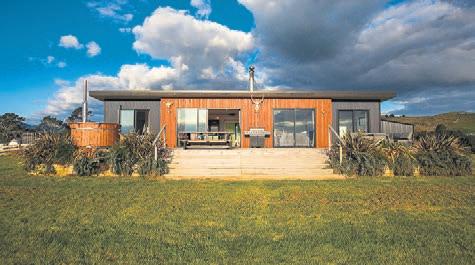
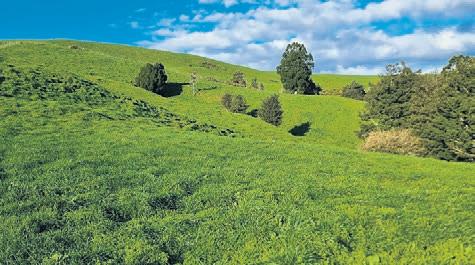
Well located finishing farm the bayleys.co.nz/



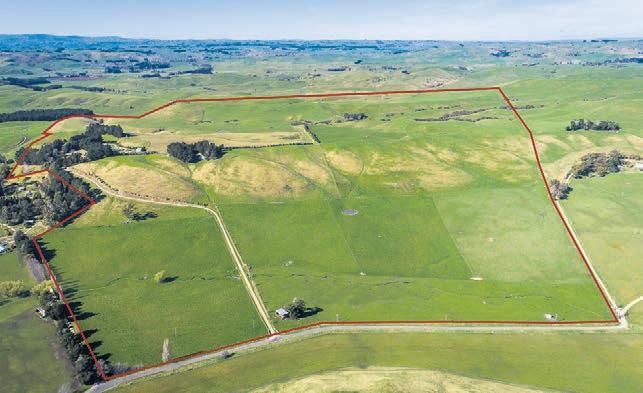
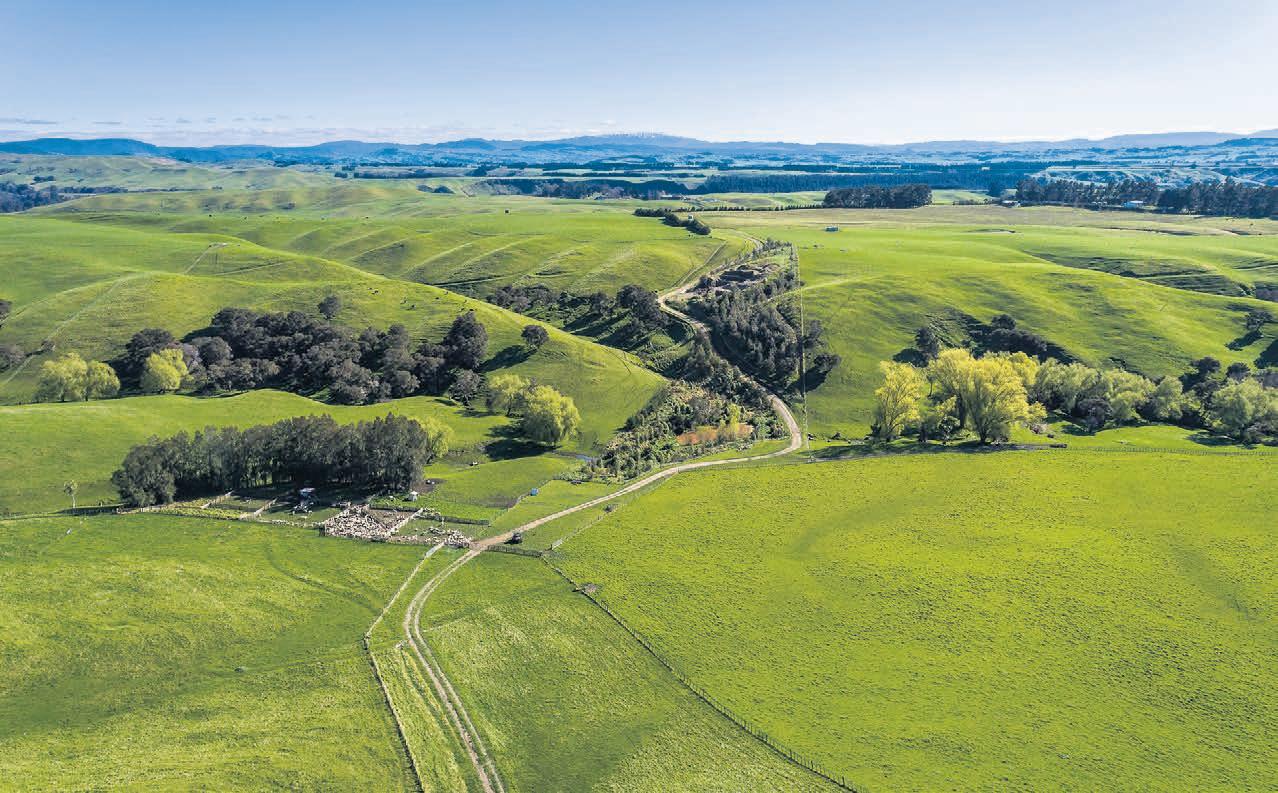
bayleys.co.nz Boundary lines are indicative only Mangatahi 85 Dasent Road 261.35ha 4 Tender Closing 4pm, Thu 27 Oct 2022 17 Napier Road, Havelock North View by appointment Tim Wynne-Lewis 027 488 tim.wynne-lewis@bayleys.co.nz9719 EASTERN REALTY LTD, BAYLEYS, LICENSED UNDER THE REA ACT 2008
Tirohanganui is a 261 hectare property in the Mangatahi farming district. The property benefits from a high standard of infrastructure as well as a low-maintenance four-bedroom home complete with an inground pool and spectacular views. There is a four-stand woolshed with covered yards, a four bay pole shed, two bay workshop, an airstrip with 40t fertiliser bin, a reliable and extensive reticulated water system, central laneway and multiple haybarns. Currently utilised as a breeding, finishing/trading and grazing unit, the property is a balanced mix of flat to rolling terrain with a small area of steeper hill country. Tirohanganui with its handy location, free draining soils, great water supply and high standard of improvements offers many options for the new owner. bayleys.co.nz/2853074 Boundary lines are indicative only Paeroa 69 Strange Road 82.5672ha 3 Auction (unless sold prior) 11am, Thu 20 Oct 2022 96 Ulster Street, Hamilton View 11am-12pm Fri 30 Sep Karl Davis 0508 83 83 karl.davis@bayleys.co.nz83 Lee Carter 027 696 lee.carter@bayleys.co.nz5781 SUCCESS REALTY LIMITED, BAYLEYS, LICENSED UNDER THE REA ACT 2008 Land, views and location Properties of this calibre are a rare commodity. Capitalise on the hard work which has been put in by our current owners and seize the opportunities of this well located 82.56 hectare (more or less) grazing block. This property hosts healthy country that delivers strong stock performance. With some easy, some medium hill, and some steeper sidling's and mixed soils, the lush green pastures have benefitted from reseeding, a good fertilizer history and excellent farm management. Infrastructure includes a 16x9 metre (approximately) pole shed, with two lockable bays, stockyards and loading race, all laid out for an efficient operation. A must-view for those looking for a quality land holding in a peaceful and idyllic setting. Call today! bayleys.co.nz/2313650 North Canterbury 277 MacKenzies Road, Waipara 230ha 3 2 Deadline Sale (unless sold prior) 12pm, Thu 20 Oct 2022 3 Deans Avenue, Christchurch Phone for viewing times Ben Turner 027 530 ben.turner@bayleys.co.nz1400 Peter Foley 021 754 peter.foley@bayleys.co.nz737 WHALAN AND PARTNERS LTD, BAYLEYS, LICENSED UNDER THE REA ACT 2008
Farm the foothills in North Canterbury’s picturesque wine region. Tucked into an attractive spot amongst rolling country, this 230.6725-hectare (more or less) property presents an opportunity for fruitful farming. Currently well utilised for bull beef finishing, breeding ewes, fattening lambs and may possibly be suitable for viticulture. The facilities include the woolshed, cattle yards and two sets of sheep yards. A privately owned dam provides irrigation for approximately 40ha of irrigation. The sundrenched home opens out to glorious views of the pond, hills and beyond with a second dwelling offering space for extended family or on-farm staff. This secluded location comes with
bonus of excellent amenities with Amberley only 15 minutes away.
5519325 35 Property
PATHWAYS TO RURAL
BAYLEYS RURAL EQUITY INITIATIVE AIMS CREATE OPPORTUNITIES FARMERS, INVESTORS AND MANAGERS Gisborne,

network of qualified landowners, investors, and farm managers to become an intermediary that helps connect the dots.




Bayleys’ Rural Equity Partnership initiative brings stakeholders together to match the right people with rural opportunities that provide mutual benefits from a growth
providing an opportunity to back operators as they become established. Landowners considering succession, farm managers willing to get some skin in the game and investors attracted by New Zealand’s stable agricultural returns are seeking more the opportunity, please contact our equity partnership co-ordinator and agent, Kris August to register your interest initially.
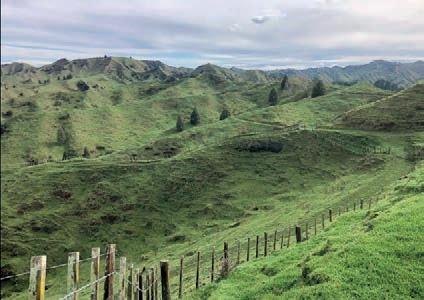
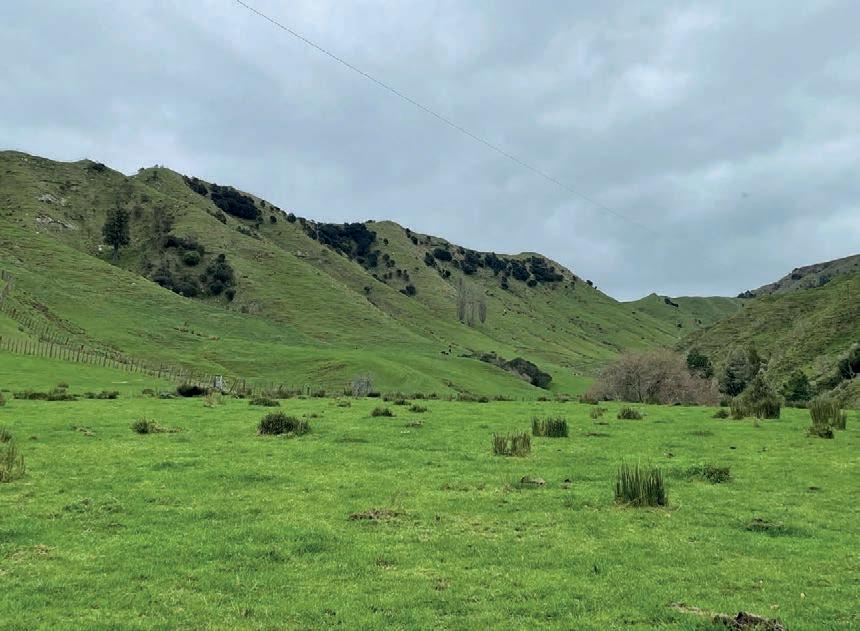
LAND OWNERSHIP AND investment
PARTNERSHIP
TO
FOR
FARM
In
Hawke’s Bay and the Wairarapa, land values continue to rise, and questions about succession have prompted Bayleys Eastern Realty to leverage its
Thepartnership.newinitiative offers an alternative investment vehicle with private capital
Ifopportunities.youwouldlike to know
about
Residential / Commercial / Rural / Property Services For more information contact Kris August, Bayleys Country Equity Partnership Co-ordinator M 027 248 9266 | E kris.august@bayleys.co.nz 36 FARMERS WEEKLY – farmersweekly.co.nz – September 26, 2022 Real Estate36 We’re online NZ’s most trusted source of daily agricultural news and information is now a website. farmersweekly.co.nz
Open Day
River Run

River Run provides a dairy purchasing option in a central North Island location seldomly offered to the market. The 136.21 ha (more or less) of flat, well-draining dairy land could be an ideal two labour unit property or an extension to another farming business. Located just 11 km from Taumarunui township on the edge of the Whanganui River the 106 ha dairy platform has an excellent layout with short walks on flat to easy undulating contour and is under excellent management with the current sharemilkers producing an average of 100,000 kgMS from 300 cows. The 30 ASHB cow shed is centrally located and is supported by calf barns and further hay and implement sheds. The property has a high standard of paddock improvements with quality pastures, pumice lanes and tidy fencing along with underground hydrants for effluent disposal. The home is close by the cow shed and offers three bedrooms with some recent improvements.
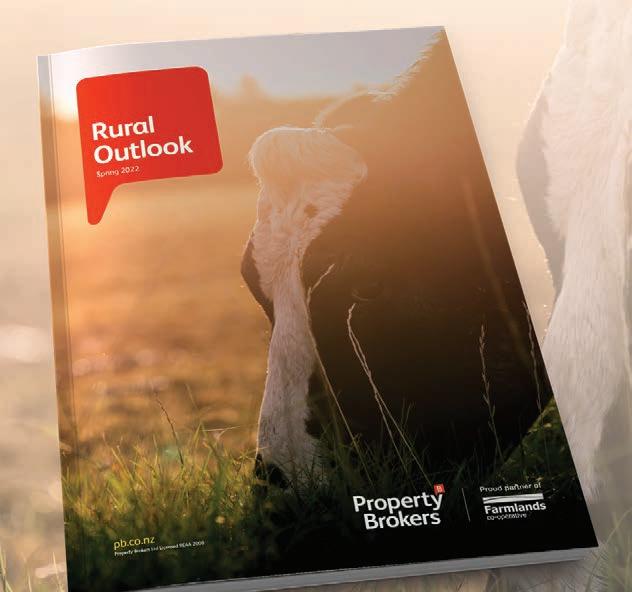

Auction 11.00am, Mon 7th Nov, 2022 View Tue 11 Oct 11.00 - 1.00pm
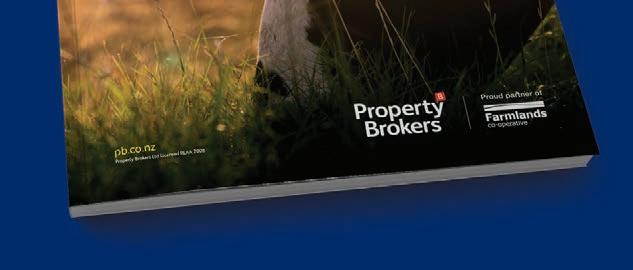
Tue 18 Oct 11.00 - 1.00pm

Tue 25 Oct 11.00 - 1.00pm Web pb.co.nz/TUR102767
Katie Walker M 027 757 7477 E katiew@pb.co.nz

Grazing or forestry

Located 18 km from Taihape, you will find this 315 ha (more or less) property that is currently being run as a sheep, beef and bee farm. With 50 ha (more or less) of easy to rolling land, the rest is made up of medium to steeper hills with approximately 60 - 70 ha made up of Manuka. The farm is divided into 50 paddocks with conventional and electric fencing and there is also a four-stand woolshed with an 800 nightpen. Water from dams and a solar system supply the farm, and the house is supplied with tank water. The home is comfortable and features four bedrooms and an office. Please bring your own bike and helmet to open days.

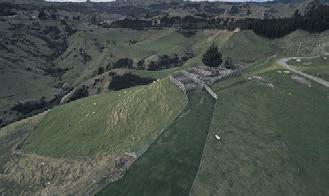
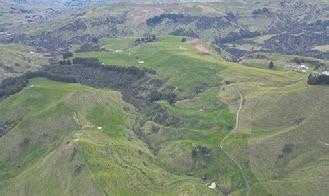



4 1 Tender closes 2.00pm, Tue 25th Oct, 2022 (unless sold prior)
View Wed 28 Sep 1.00 - 2.00pm
Web pb.co.nz/TIR108251
Doug Glasgow M 027 204 8640

Taumarunui 258 Burnand Road
Showcase your rural property in our latest Spring magazine and reach over 75,000 rural letterboxes this October, further supported by our early bird digital magazine and take advantage of our strongest rural property market yet! List by the 22nd of September to have your property out in front of the market, from the far North to the deep South, and beyond. Change your Rural Outlook this Spring To get your property in front of our motivated buyers, talk to your local Property Brokers rural team today. 0508 4 PBRURAL (0508 472 787) Taihape 718 Kaweka Road Open Day
Property Brokers Ltd Licensed REAA 2008 | pb.co.nz Proud to be here 37
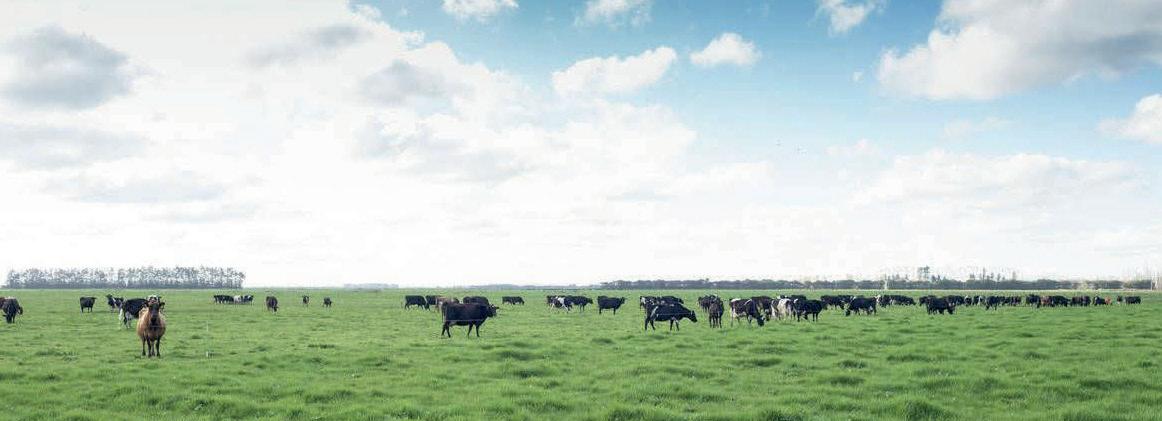






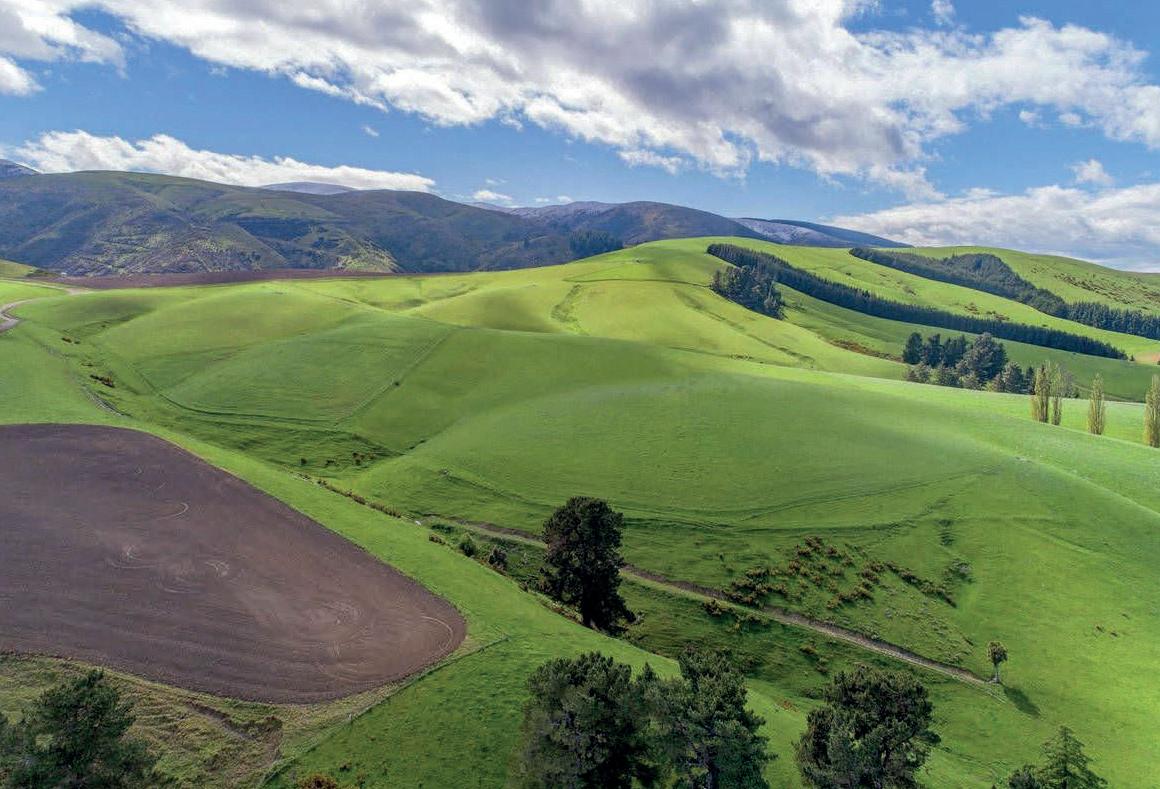









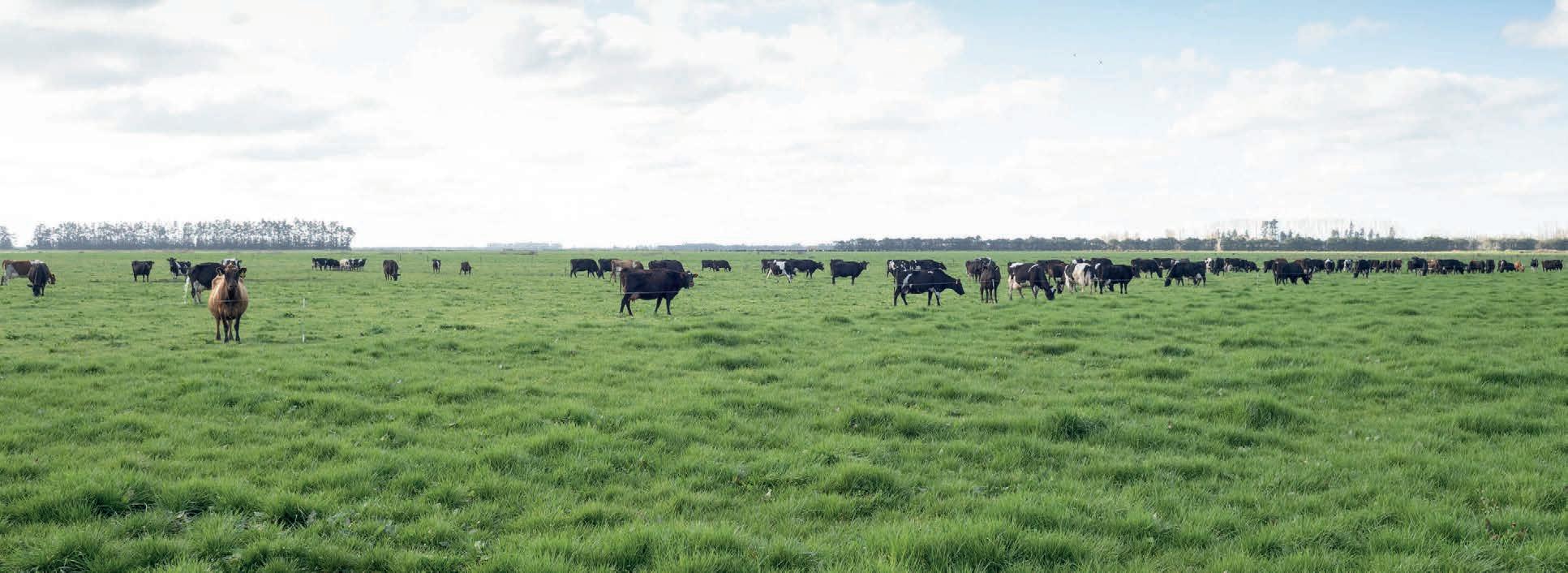
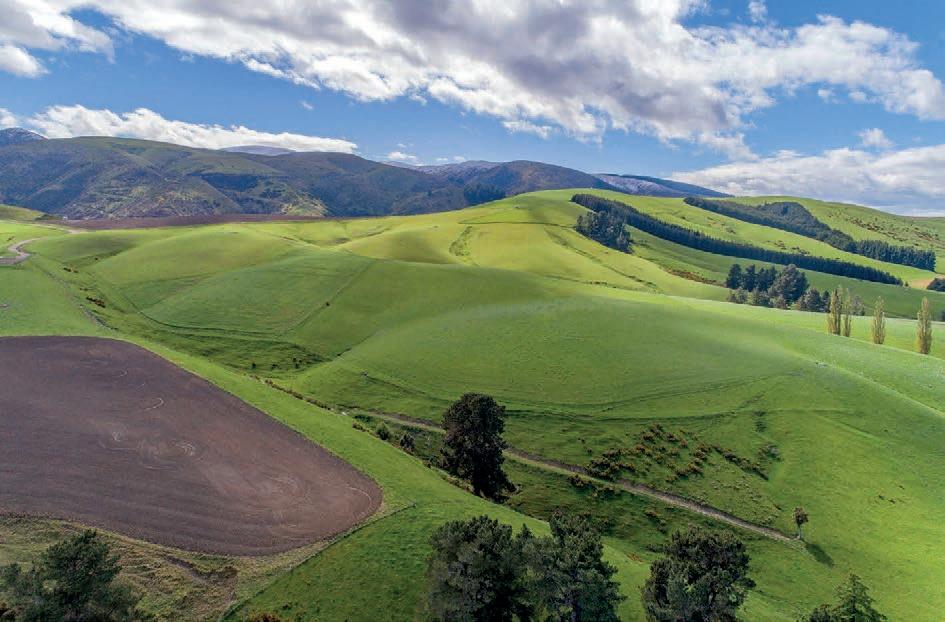

For Sale by Deadline Private Treaty closing Fri 14 October 2022 at 1pm (unless sold prior) Brander Farms, 377 Emerson's Road, Lowcliffe, Canterbury colliers.co.nz/p-NZL67020465 Brander Farm offers the opportunity to acquire a highly developed, irrigated Mid Canterbury dairy asset with proven performance. The farm boasts key farming fundamentals, including quality soils, strong water consents and modern infrastructure. Agri Realty Ltd Licensed under the REAA 2008 Dairy Farm for Sale Prime Mid Canterbury Dairy Unit 294totalhectaresarea Synlait Lead With Pride™ Gold accreditationPlus 1050 cows | 500,000 kgMS per season target production Pivot irrigation covers majority of platform area Irrigated via ground water from two consents Qualityhousingstaff George Morris 027 212 8668 c HistoricalFarmolliers.co.nz/p-NZL67020728forSaleDairySupportwith Forestry Potential For Sale by Deadline Private Treaty closing Thu 3 November 2022 at 1pm 1537 Geraldine-Fairlie Highway , Fairlie Dairy support Fourhomesteadbedroom infrastructureQuality1,148 hectares Richard O'Sullivan 027 292 3921 George Morris 027 212 8668 Agri Realty Ltd Licensed under the REAA 2008 Operated as a beef and dairy grazing unit, with approx. 757 hectares being identified as suitable for plantation forestry and carbon sequestration. This is an opportunity not to be missed as our vendors are repositioning themselves in the market. Forcolliers.co.nz/p-NZL67020733Sale by Deadline Private Treaty closing Thu 3 November 2022 at 1pm (unless sold prior) 1085 Orton Rangitata Mouth Road, Orton Large Scale Cow Wintering Unit Farm for Sale Dairy support infrastructureQuality Pivot irrigation485 hectares Richard O'Sullivan 027 292 3921 George Morris 027 212 8668 Agri Realty Ltd Licensed under the REAA 2008 Comprising 415.5 hectares (more or less) freehold as well as another approx. 69 ha of lease/ AMF grazing, it is rare to find a property of such scale and grazing capacity. Irrigated via pivot the property has been utilised as a cow wintering and young stock unit for dairy stock. Accelerating success. 38
Rural New Zealand, We live here too.
When it comes to getting the very best sale result for your rural, lifestyle, or provincial residential property, or help finding your next one, it pays to deal with the trusted and local experts.
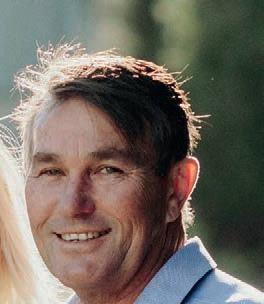

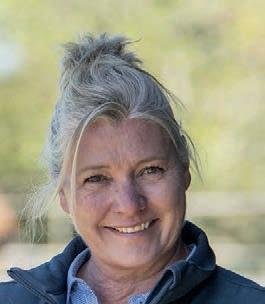

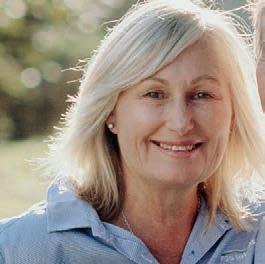
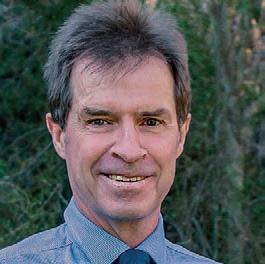








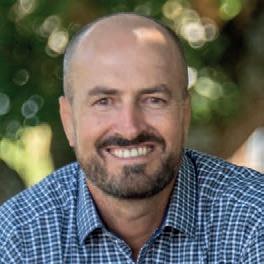






We really know rural New Zealand, because we live and work in the same communities as you do.






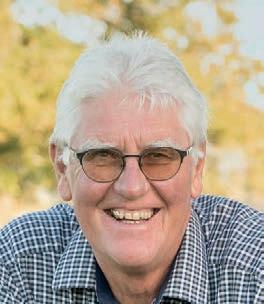

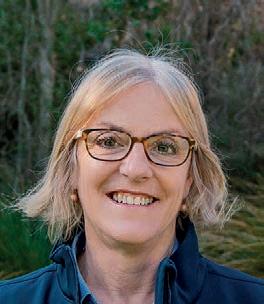
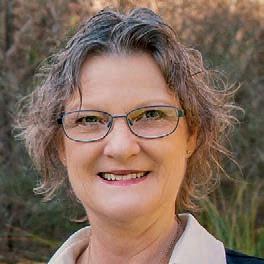



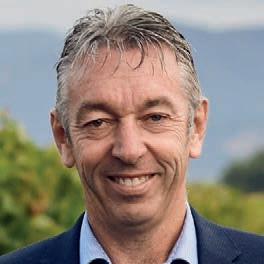


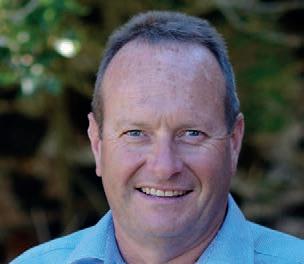





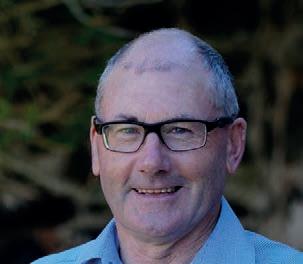







A national

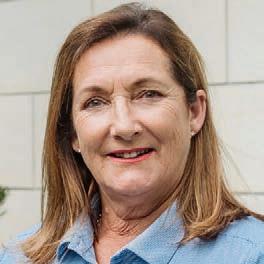









pggwre.co.nz
team of expert locals. PGG Wrightson Real Estate Limited, licensed under the REAA 2008.
39
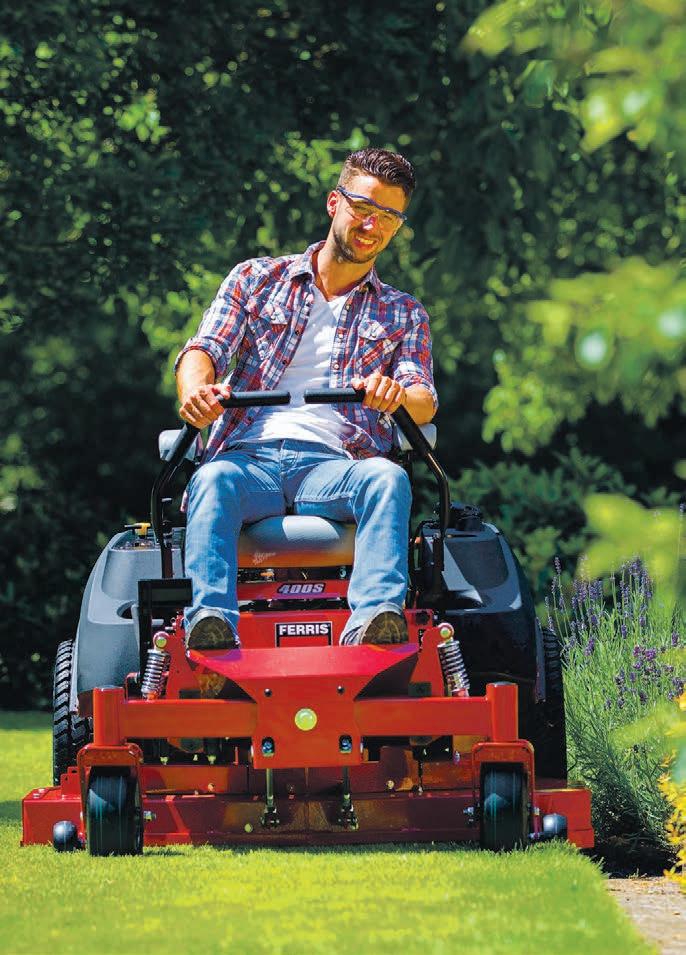
























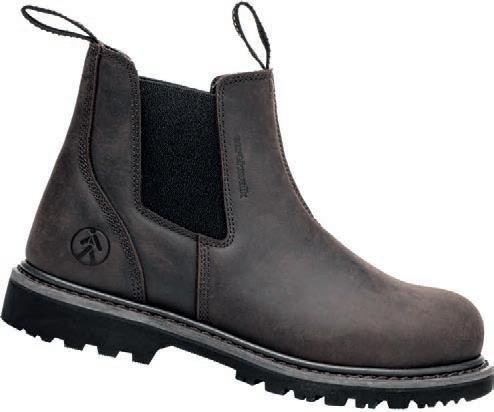











You wouldn’t drive a car without suspension. WITHSUSPENSIONEXPERIENCETRIPLEMOWING TECHNOLOGY From $12,999 RRP Ferris® suspension systems are engineered to provide you with a smooth ride on uneven ground. The deck of the mower works in conjunction with the suspension system to provide a consistent quality of cut. And, the TRIPLE mower deck (on selected models*), now gives you side discharge, rear discharge and mulching configurations that can be converted as required. ™ FW/FERRIS/2022 FERRIS® 400S - 48” deck Affordable & durable with commercial-grade power and maneuverability. Advanced debris management system, large turf friendly 20” tyres for increased traction, with speeds up to 12.8km/h. RRP from $12,999inc. So why buy a Ride-on without it? FERRIS® IS®600Z - 48” deck The best value in a compact zero-turn mower. With our exclusive suspension technology, heavy-duty Hydro-Gear® Drive System and speeds up to 16 km/h, this mower will give you all you’re looking for and more. RRP from $17,849inc. FERRIS® SRS®Z1 STAND-ON Ride con dently into narrow spaces with advanced comfort and stability. The new SRS Z1 offers excellent productivity with our exclusive suspension technology - all in a compact frame that will t into a van or smaller trailer. RRP from $18,899inc. Take a Ferris for a test drive. Phone 0800 274 447 for your nearest dealer. Or visit ferrismowers.com for more information. *TRIPLE Deck available on the 400S and ISX2200 (not shown). Take control – protect your business Invented by NZ Farmers for NZ Farmers Come and take a look at one of our HerdHomes® Open Day 4th October, 10.30am - 1.30pm at 6818 State Highway 27, Waharoa, WaikatoContact Rex 021 348 276 HERD HOMES NZ LTD LK0112605© Shelter your cows from the heat or cold, while ticking all your environmental needs. $160* $150* valued at $320 valued at $280 New Zealand owned & operated NEW - WIDER TOE BOX for improved downhill comfort NEW - WIDER STEEL CAP ** for improved toe comfort NEW - KEVLAR PENETRATION RESISTANT SOLE ** for lightweight safety NEW - 250 DEGREE HEAT RESISTANT OUTSOLE NEW - BALL BEARING SPEED LACING for greater comfort & adjustability NEW - FLEXIBLE RAND for less stress on the instep & leather NEW - STRONGER OUTSOLE STITCHING for strong rand to midsole connection NEW - STRONGER MIDSOLE NEW - STRONGER FORESTRY GRADE SHANK for greater support & overall strength (**safety models) New boots arrive early November $109 $99 $88BUY valued at $230 JACKET valued at $160 valued at $140 BIBLEGGINGSOVERALLS100%FleeceFlexibleWaterproofCollarHoodVisorAcidResistantDurableSeams Stitched On Soles Plain Toe* or Steel Toe175% more crack resistant than normal leather Buffalo Leather earthwalk.co.nz free shipping0800 16 00 24 sizes: BOOTS 5 - 13 (NZ) RAINWEAR XS - 4XLPHONE9am-5pm 175% more crack resistantNEW! BUFFALO BOOTS RAINWEAR Acid DurableResistantSeams SALE ends soon 40 Marketplace FARMERS WEEKLY – farmersweekly.co.nz – September 26, 2022 Marketplace40
CHICKEN BROILER FARM MANAGER
We are seeking a manager for a large poultry operation in Canterbury. The successful applicant will have a good knowledge of chicken farming and animal husbandry. The position requires someone who is fit and healthy as there is a lot of lifting on a daily basis, so good health is a must.
Good time management and work ethic is essential. Good remuneration depending on the applicant’s knowledge and skills.
The position includes a spacious 5-bedroom home and work ute. We have a school bus to the gate for our area school.
References must be provided along with a CV. If this position sounds like you, please email to: rs.krjones@xtra.co.nz

South PartnershipIsland Manager






AgriHQ is a family-owned New Zealand publishing company serv ing a community that is already 80,000 strong and the largest in the agricultural sector. We’re growing and this is your opportunity to be part of it.

We’re after an experienced media sales professional to look after and grow our clients in the South Island and help them take advan tage of the many opportunities our publications offer to engage with rural New Zealand.
You’ll be a proven self-starter with great relationship building skills who loves the agricultural industry and, more importantly, loves selling!
If you’re ready for the responsibility and the challenge we invite you to register your interest and request a job description by emailing
Our homes are built using the same materials as an onsite build. Easily transported to almost anywhere in the North Island. Plans range from one bedroom to four bedroom
GOATS WANTED
FERAL GOATS WANTED. All head counted, payment on pick-up, pick-up within 24 hours. Prices based on works schedule. Experienced musterers available. Phone Bill and Vicky Le Feuvre 07 893 8916.
GOATS WANTED. All weights. All breeds. Prompt service. Payment on pick up. My on farm prices will not be beaten. Phone David Hutchings 07 895 8845 or 0274 519 249. Feral goats mustered on a 50/50 share basis.
TAARUPPARTSHORTICULTUREWANTEDTS1650,
NZ KELP. FRESH, wild ocean harvested giant kelp. The world’s richest source of natural iodine. Dried and milled for use in agriculture and horticulture. Growth promotant / stock health food. As seen on Country Calendar. Orders to: 03 322 6115 or info@nzkelp.co.nz
disc
mower gear box or parts. Phone 09 553 3619.


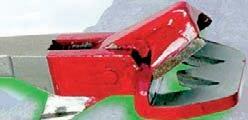


SMALL RURAL PROPERTY for lease (min 12 months) suit retired farmer/semi retired, no children, small house, ideal for horses , a dog or two. Need to be a handyman. Beautiful location, close to beaches. Available early November 2022. Waikato region. Contact jmac1933@ hotmail.com
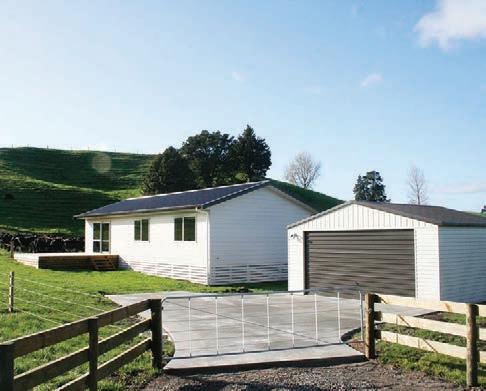
ALLPUBLICFORPROPERTYLEASENOTICESMATTERSAND

actions relating to Bencurren, Bencurren Stud, Bencurren Partnership, and or the use of those names are the exclusive property and responsibility of Roderic Olaf Kraal, of Stalker Road, Gapes Valley, Geraldine. Jaye Asher of Farm Road, Orton has no liability relating to or association with Bencurren, Bencurren Stud and the Bencurren Partnership.
HIGH PRESSURE WATER PUMPS, suitable on high headlifts. Low energy usage for single/3-phase motors, waterwheel and turbine drives. Low maintenance costs and easy to service. Enquiries phone 04 526 4415, sales@hydra-cell.co.nzemail



RAMS FOR SALE
WILTSHIRES-ARVIDSON.PUMPS
Self shearing sheep. No1 for Facial Eczema. David 027 2771 556.

HAIR SHIRE® Low input meat rams! www.organicstud. nz 027 225 5283. tim@ organicstud.nz



WHAT’S SITTING IN your barn? Don’t leave it to rust away! We pay cash for tractors, excavators, small crawler tractors and surplus farm machinery. Ford –Ferguson – Hitachi – Komatsu – John Deere and more. Tell us what you have no matter where it is in NZ. You never know.. what’s resting in your barn could be fattening up your wallet! Email admin@ loaderparts.co.nz or phone Colin on 0274 426 936 (No texts please)
SAWN SHED TIMBER including Black Maire. Matai, Totara and Rimu etc. Also buying salvaged native logs. Phone Richard Uren. NZ Native Timber Supplies. Phone 027 688 2954.
Ph:Contacthr@agrihq.co.nzDean0273239407 Join the team! Informing rural New Zealand LK0113098©
LK0113230© WELLPREBUILTTHINKNEWHOMESSOLID–PRACTICALINSULATED–AFFORDABLE
& quality
First Home – Farm House Investment – Beach Bach LK0112845© Call or email us for your free copy of our plans Email: info@ezylinehomes.co.nz Phone: 0800 399 546 (EZYLINE) Web: www.ezylinehomes.co.nz PURCHASINGFERALREDDEER (NO FALLOW DEER) Our Contactandyourselectivelyoperationhelicoptercancullferaldeerpayaroyalty.LanceMcNicholasPHONE0272947504EMAILmcnicholas@xtra.co.nz Heavy duty, long incineratorslasting Threeavailablesizes irontreeproducts.co.nzincineratorslastingPhone0210479299LK0112754© VETMARKER LAMB DOCKING / TAILING CHUTE With automatic release and spray 0800www.vetmarker.co.nzsystem.DOCKER(362537) LK0112768© DOLOMITE For a pricedeliveredcall.... NZ’s finest BioGro certified Mg fertiliser 0800 436 566 41 FARMERS WEEKLY – farmersweekly.co.nz – September 26, 2022Marketplace 41 FLY OR LICE problem? Electrodip – the magic eye sheepjetter since 1989 with unique self adjusting sides. Incredible chemical and time savings with proven effectiveness. Phone 07 573 www.electrodip.com8512 ANIMAL HANDLING CRAIGCO SHEEP JETTERS. Sensor Jet. Deal to fly and Lice now. Guaranteed performance. Unbeatable pricing. Phone 06 835 www.craigcojetters.com6863. www.drench.co.nz farmer owned, very competitive prices. Phone 0800 4 DRENCH (437 362). ANIMAL HEALTH 40c/50c PER KG dags fadges/bales. Replacement woolpacks. PV Weber Wools. Kawakawa Road, Feilding. Phone 06 323 9550. NORTHERN SHEEP SCANNING. Sheep scanning. Crutching trailer. Friendly and reliable. Based in Northern Waikato, servicing surrounding areas and Northland. Call Natalie 021 109 nataliecrisp@hotmail.co.uk5884. SPRAYGORSEATTENTIONFARMERSANDTHISTLE . We also scrub cut. Four men with all gear in your area. Phone Dave 06 375 8032. 10-MONTH-OLDCONTRACTORSHeading bitch, ready to start. 6-MONTH Heading dog pup. Both very well bred. Phone 027 243 8541. Taihape. DOGS FOR SALE 7-YEAR HEADING bitch. Suitable for small block. Phone 0274 465 473. HUNTAWAY AND HEADING dogs. Trial, deliver NZ videosmikehughesworkingdog/www.youtube.com/user/wide.–073155553. 12 MONTHS TO 5½-yearold Heading dogs and Huntaways wanted. Phone 022 698 8195. DOGS WANTED BUYING WORKING DOGS NZ Wide. Immediate payment! farmside.co.nzmikehughesworkingdogs@Email:073155553. ACCURATE AND PRACTICAL farm maps showing area sizes of paddocks and vegetation. Visit farmmapping.co.nz for a free quote. FARM PASTUREPROMOTESMAPPINGQUICK growth. Only $6.50+gst per hectare delivered. 0508-GIBBGRO [0508 442 247] www. gibbgro.co.nz. “The Proven One.” GIBB-GRO GIBBERELLICPROMOTANTGROWTHACID growth promotant. Increase pasture growth and dry matter. From $5.50 per/ha. 0508 733 343, sales@vernado.co.nz GIBBOOST
WANTED TO BUY Advertisewithus Call Debbie 027 705 7181








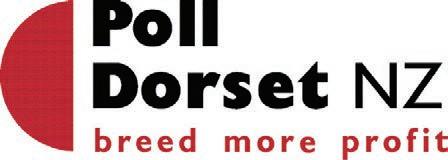








LK0113164© REGISTEREDFridayHEREFORDSBEXLEYYEARLINGBULLSALE3715StateHighway3AwakinoGorge,Mokau30thSeptember2022StartTime:12:00noon&UNREGISTEREDBULLSCOMPRISING: 50 x 1yr Hereford Bulls 16 x 1yr Angus Bulls 2 x 2yr Registered Speckle Park Bulls DETAILS: We specialise in growing top yearlings, well grown to suit heifer mating, cow mating or beef cow mating OUR VENDORS: Colin & Carol King 06 752 NZCARRFIELDSccking@farmside.co.nz9863LIVESTOCKAGENT:GrantRoss0211748403FARMERSLIVESTOCKAGENT:BrentBougen0272104698VIEWOURCATALOGUEAT www.carrfieldslivestock.co.nz SIMMENTALS CLEA R VIEW ShaneTARANAKI&KylieMcDonald 2nd Annual On-Farm Simmental Yearling Bulls 17 Owner bred 1yr Bulls Vendors: Shane & Kylie McDonald 027 244 2404 Neko McDonald 027 429 8674 Daniel Crowley 027 215 3609 Friday 30th2022September 84 Clearview Road RD 3 New Plymouth 6.00pm (Under cover, HospitalityComplimentaryprovided) LK0113169© 7th ANNUAL YOUNG IN-MILK COW AUCTION A/c TROY STEVENSON 437 Patiki Road Pihama, South Taranaki Friday 7th October 2022 Start Time: 11:30am Undercover Gourmet BBQ lunch provided will be available for online bidding COMPRISING: 160 x Young Friesian & Friesian Cross in-milk cows BW230 PW291 Herd test data DETAILS:available • TBC10 – MBovis not detected and BVD negative • All cows in-milk, milked twice daily in rotary shed • Herd tested 16/9 • Strict selection policy all young cows mainly 2–5yr-olds sourced locally in Taranaki including CRL heifers from the Werder farming AUCTIONEERS NOTES: All cows personally guaranteed by our vendors offering 1-week trial. Cows purchased to supply calf milk then offered for auction. Buy with confidence. We totally recommend and have received very good comments from previous buyers. PAYMENT/DELIVERY TERMS: Payment due 20th January 2023 and delivery immediate. OUR VENDOR: Troy Stevenson 027 469 7636 CARRFIELDS LIVESTOCK AGENTS: Brent Espin 027 551 daniel.crowley@carrfields.co.nzDanielbrent.espin@carrfields.co.nz3660Crowley0272153609TimHurley0274146756tim.hurley@carrfields.co.nzVIEWOURCATALOGUEAT www.carrfieldslivestock.co.nz LK0113176© IN-MILK CROSSBRED & FRIESIANAUCTIONHERD A/c C & C FridayCAMBRIDGEROBERTSONSALEYARDS,HickeyRoad,Cambridge30thSeptember2022StartTime:11:30amwillbeavailableforonlinebiddingCOMPRISING: 300 x In-milk Crossbreed to Friesian Cows DETAILS: BW110 PW144 R/A 71% Profile update prior to sale AUCTIONEERS NOTES: These cows are farmed on rolling to steeper country and commenced calving from 15th July. Mainly grass fed with home grown maize & PKE to fill gaps. All cows will be on once a day leading up to sale day and will shift extremely well. PAYMENT TERMS: Within 14 days of the sale. DELIVERY DATE: Day of sale only. SPECIAL TERMS & CONDITIONS Guaranteed sound in all four quarters. CARRFIELDS LIVESTOCK AGENT: Jack Kiernan 027 823 2373 VIEW OUR CATALOGUE AT www.carrfieldslivestock.co.nz Check out Poll Dorset NZ on Facebook LK0112874© STOCKRosswww.dyerlivestock.co.nzDyer0274333381REQUIRED 1YR FRSN BULLS 200 300kg 2YR FRSN BULLS 400 500kg 1YR ANG & ANGX STEERS 200 270kg 1YR XBRED STEERS 220 270kg 2 & 3YR ANG & ANGX STEERS 450 580kg 2YR ANG & ANGX HEIFERS 400 470kg E info@rdlfinance.co.nz A Financing Solution For Your Farm 42 Livestock FARMERS WEEKLY – farmersweekly.co.nz – September 26, 2022 Livestock42 ® CARRFIELDSLIVESTOCK.CO.NZ










• • • • • CLEARING SALE STRATFORD GROUP LTD 556 Pannetts Road, Ashburton Friday 30th September 2022 – Start time 12:00pm – Viewing from 10:00am Carrfields are privileged to offer a full assortment of plant on behalf of our clients which have been well serviced by authorised dealerships COMPRISING: Atlas Cooper Air Compressor Amazone Panterra 4502 Sprayer Bertolini sprayer front tank 1100 litre Bertolini Sprayer 650 litre + boom Gold Acres 600 litre Sprayer Brandt 1370 Auger Brandt 1390 Auger Gray Engineering Auger hydraulic Bredal F8 Spreader Bog Balle M2W Plus MF Heston Baler 2170 Pottinger Nova Cat 261 Taege V Rake 16 Reel Inline Rake 6 Real Vogal Topper 3 metre Kuhn GMD500 NO GOING Claas Disco 2800 Mower Claas Disco 2700 Mower Claas 2700 Rake Claas Lexion 670 Terratrac Claas Lexion 780 Combine 1050 Claas Vario Front Macdon FD130 Flex Draper Coolamon 36t Chaser Bin Massey Ferguson 35 Ford 4000 Tractor Ford 6600 tractor includes Loader John Deere 6155R Tractor John Deere 6620 Tractor John Deere 6920 Tractor John Deere 8110 Tractor John Deere 8120 Tractor John Deere 8235R Tractor John Deere 8335R Tractor John Deere 9570 Tractor John Deere Weight 900 John Deere 750A Metre Drill Manitou High Back Forks Manitou MLT-X 840-137PS Manitou Pallet Forks Adjustable Manitou loader Bucket Rata Bulk Bucket Large Rata extended Push Off Blade Rata High Back Forks Rata High Back Forks Bulk loader Bucket Mercer 2 axle tanker Volvo FL10 Truck Volvo FM480 Truck Volvo FM500 Truck Scania truck Road Master Flat Deck Lusk Bulk Trailer Flat Deck Trailer 6 Metre Honda Four Trax Bike One Honda Bike - Black - One each… Nissan Navara Ute Single Cab Nissan Navara One and a half Cab Toyota Hilux Ute Evers Cambridge roller CR630V 9 metre Austin Rollers Folding Harrows Maxi Till 8 Metre Gregorie Besson 8 Furrow Salford 700 Cultivator Vaderstad Top Down 600 Vaderstad Carrier XL 625 Discs Vaderstad 9m Top Down Sumo GrimmeQuatroPotato Moulder 4metre Roto wiper weed Wand Brian Stratford 027 436 5363 Mark McCully 021 369 225 Greg Carr 021 722 560 Ryan Carr 027 432 4022 LK0113288©VIEW OUR CATALOGUE AT www.carrfieldslivestock.co.nz Melbury Murray Grey StudMelbury Murray Grey Stud Stud & commercial Murray Grey Yearling bull sale through Bidr and PGG Wrightson All sales on line @ 7.30pm 6th October 2022 Victor Schikker (PGW) 025 908 061 • Simon Eddington (PGW) 027 590 8612 Jo Hallenstein 027 683 8111 • Produced from stud and capital stock for calving ease and low birth weight calves-ideal for heifer mating • BVD tested clear, fully BVD & 7-in-1 vaccinated • Bred for good temperament LK0113172© Quality Hill Country Angus Bulls Annual Yearling Bull Sale 2022 On Farm Sale 7th October 2pm Viewing from 1pm 1912 Pohangina Valley East Road, Ashhurst, Manawatu • Calving ease • Short gestation • Temperament • Low to moderate birth weights • All bulls sold as Yearlings Agents: Carrfields Livestock: Cam Waugh 0274 800 898 Stephen Harris Livestock: Mark Anderson 0274 691 004 Contact Dave & Nicole Stuart Home: 06 329 4748 Cell: 027 422 7239 Email: komako.farm@gmail.com LK0113178© 43 FARMERS WEEKLY – farmersweekly.co.nz – September 26, 2022Livestock 43
MELBURY STUD & GREYYEARLINGCOMMERCIALMURRAYBULLSALE


We will be offering on account of our clients Opposite Ends Ltd - Alford Forest




To be sold by 100% Online Auction (BIDR 1651) Thursday 6 October, 2022 at 7.30pm
80 Ylg Murray Grey Bulls
These bulls have been bred on temperament and low birthweight following the purchase of breeding cows from two South Island Studs. Bulls suitable for heifer & cow mating, approx. 2/3 are silver colourings and 1/3 dun. BVD tested and vaccinated. 7-1 vaccinated.
TB status C2 (new herd).
Auctioneers Note
The Murray Grey breed are noted for their calving ease and good markings over all breeds of 3%cows.rebate commission offered to non participating companies.

For further information contact Victor Schikker (PGW) 027 590 8061 Simon Eddington (PGW) 027 590 8612 Jo Hallenstein (Vendor) 027 683 8111

Watch and Bid from anywhere. For more info visit www.bidr.co.nz
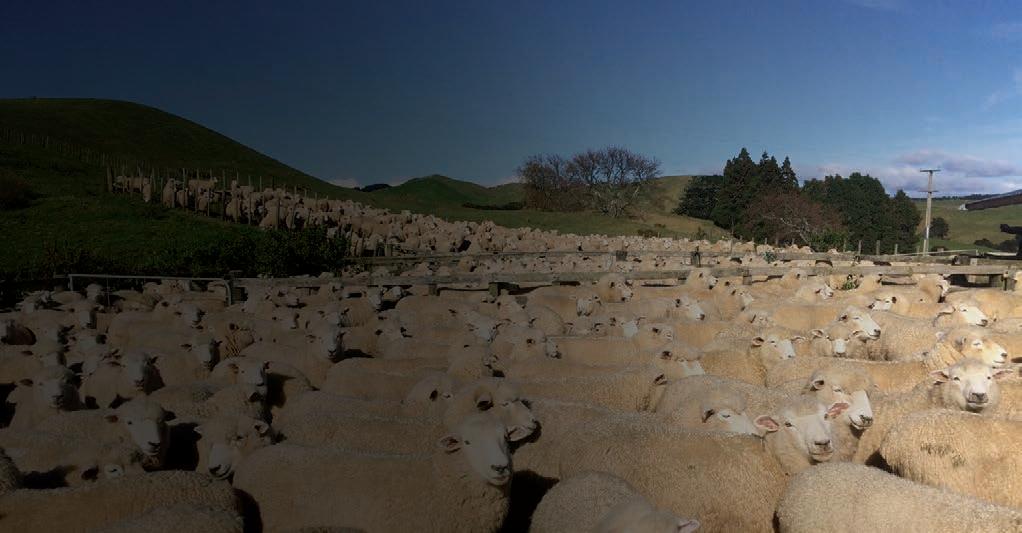
“What’s going on with the scanning result - it’s down again. And what about these ewes that are scanned in lamb, why so many dry ones at weaning??” “Ewe losses are so much higher than the neighbour? and ewe condition is lower than it should be.” “I am feeding really well, why is the weaning weight not improving??” “I only get a few clinical FE cases.... maybe there are more affected than I thought?” Sound familiar? Maybe it’s time to invest in FE Gold Rams If you want the best, buy the best www.fegold.co.nz GENETICS you can TRUST Helping grow the country PALMERSTON 1ST SPRING CATTLE SALE Friday 30 September, 10.00am Palmerston Saleyards All cattle yarded overnight and sold over Comprisingscales.Approx: • 29 Simmental R2 Steers • 10 Angus & Hereford R2 Steers • 42 Hereford Friesian R2 Steers 14 Hereford Friesian X R2 Heifers • 217 Angus & Angus X R1 Steers • 142 Charolais X R1 Steers • 38 Hereford R1 Steers 10 Speckle Park R1 Steers 10 Angus/Simmental X R1 Steers 11 South Devon/Saler X R1 Steers • 80 Angus Composite X R1 Heifers • 40 Charolais X R1 Heifers 26 Angus/Hereford R1 Heifers For further information contact: Gerard Shea (PGW) 027 442 5379 Callum Stalker (RLL) 027 473 0846 Watch and Bid from anywhere. For more info visit www.bidr.co.nz Helping grow the country OPAWA DOWNS ON FARM CATTLE SALE 260 Rutherford Rd, Albury, Sth Canterbury Tuesday 4th October, 2022 Commencing 11am 35 18 Mth Simmental & Hereford/Friesian x Steers 35 18 Mth Simmental & Hereford/Friesian x Heifers 160 Ylg Simmental/Hereford x Steers 46 Ylg Simmental/Angus x Steers 90 Ylg Simmental/Hereford & Simmental/ Angus x Heifers 120 Ylg Simmental/Hereford x Bulls 20 Ylg Hereford Heifers To be sold following above at 1653 Mt Nessing Road, Albury. 60 Ylg Hereford/Friesian & Simmental/Friesian x Steers 60 Ylg Hereford/Friesian & Simmental/Friesian x Heifers 626 Total. C10 MorningStatus.tea provided. Sign posted from Albury. DavidEnquiries:&Jayne Timperley (Vendors) 03 685 5785 or 027 437 5881 Cameron Gray (PGW) 027 494 0572 Helping grow the country
ECZEMA TOLERANT ROMNEYS RAMGUARD TESTING SINCE 1985 • 5 star rating • Bred on challenging hill country • Robust functional sheep that survive • Structurally sound • Selecting for parasite tolerance and less dags • No ewes worm drenched, dipped or vaccinated KEITH ABBOTT, RAGLAN 027 463 @waiteikaromneys9859 | www.waiteikaromneys.co.nz Upcoming Auctions TUESDAY 27 SEPTEMBER 12pm Ezicalve Morrison Farming Annual Bull Sale 1pm Motere Angus Yearling Bull Sale WEDNESDAY 28 SEPTEMBER 12pm 58th Annual Bushy Downs Hereford Bull Sale 12pm Shrimpton’s Hill Hereford Bull Sale THURSDAY 29 SEPTEMBER 12pm Premier Cattle Company Yearling Bull Sale 12pm Ranui Yearling Bull & Heifer Sale 1pm Timperlea Angus Yearling Bull Sale FRIDAY 30 SEPTEMBER 10am Palmerston Spring Cattle Sale 12pm Medley Partners In-Milk Dairy Sale 1pm C & C Robertson In- Milk Dairy Sale MONDAY 3 OCTOBER 12.30pm Matauri Angus Yearling Bull Sale 1.30pm Glen R Angus Bull Sale Regular Livestream coverage of eight North Island Saleyards. bidr.co.nz 44 FARMERS WEEKLY – farmersweekly.co.nz – September 26, 2022 Livestock44 >40 Yearling Angus Bulls >35 Yearling Hereford Bulls >40 Hereford Heifers (not transferable) WOODBANK ANGUS & MATARIKI HEREFORD Further Woodbankenquiries:-BenMurray 027 449 4409 Matariki - Jack Murray 027 381 2300 Hazlett - Callum Dunnett 027 462 0126, or George Mannering 027 462 0182 PGW - John McKone 027 229 9375, or Ross Sutherland 027 434 4068 CLARENCE VALLEY Tuesday 4th October 2022 - 2pm start Helping grow the country UPCOMING EAST COAST SEPTEMBER SALES MATAWHERO CATTLE Tuesday 4 October 2022, 11.00am Grand opportunity to purchase well red lines of hill country station bred cattle. JamieContactHayward 027 434 7586
• My wife told me to had to put my

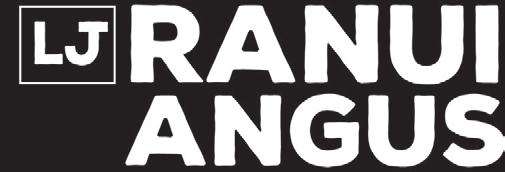



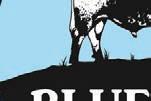
• I went to buy some camo pants but couldn’t find any.
• I was wondering why the frisbee kept getting bigger and bigger, but then it hit me.


• When life gives you melons, you might be dyslexic. Don’t you hate it when someone answers their own questions? I do.

• I told him to be himself; that was pretty mean, I guess. The problem with kleptomaniacs is that they always take things literally.
• I can’t believe I got fired from the calendar factory. All I did was take a day off.
• Most people are shocked when they find out how bad I am as an electrician.

Here at Farmers Weekly we get some pretty funny contributions to our Sale Talk joke from you readers, and we’re keen to more!

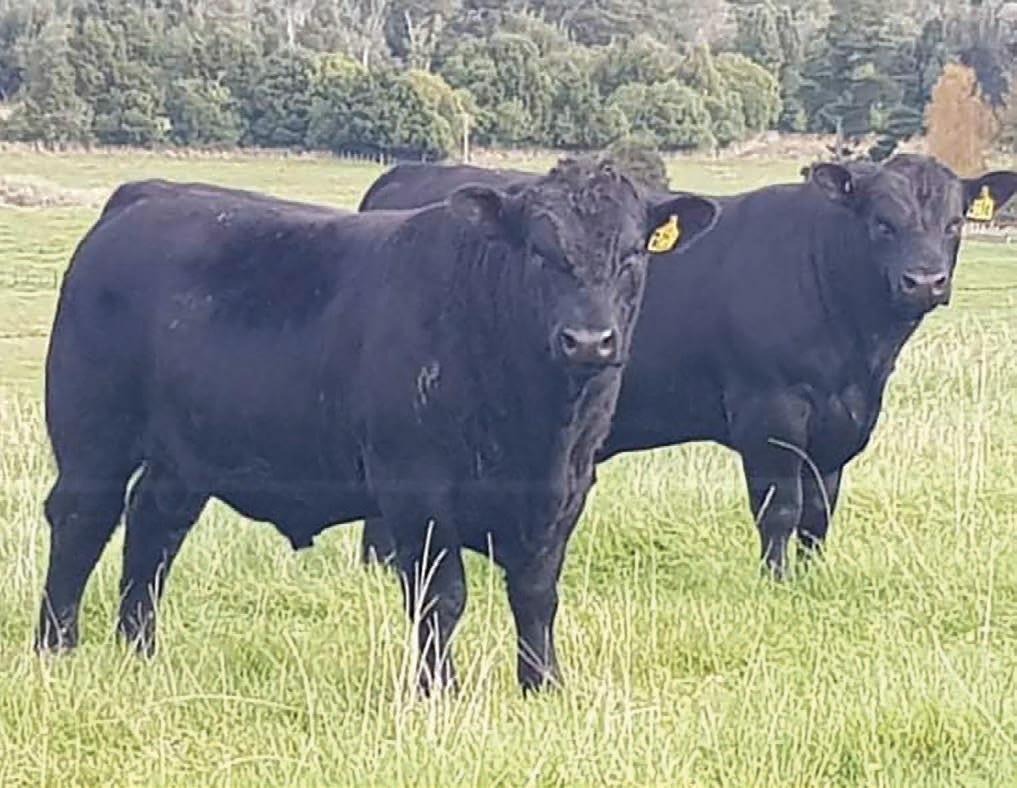
If you’ve got a joke want the farming community grandmother...)



Blue SpeckleSkyPark We have 2yo Purebred Registered Bulls Frozen Semen Purebred Embryos • Purebred • Registered • DNA tested • Carcase Scanned Enquiries visit our website www.blueskyspecklepark.nz LK0113074© MERCHISTON ANGUS Contact: Richard Rowe – 027 279 8841 Willie Rowe – 021 242 YEARLINGwww.merchistonangus.commercang@farmside.co.nz8181BULLSALE2 8 TH Sept on farm – Hunterville at 2pm EST 1955 LK0113146© • Semen tested • Carcase scanned • BVD and EBL tested negative and vacc. • Fully EBV recorded • Heifer and cow bulls For online catalogue – go to: AngusNZ/Genetics/Sale Catalogues/Merchiston ebook Orari Gorge Romney, RomTex actively select for FEWER DAGS AND GREATER RESISTANCE AND RESILIENCE TO WORMS. Cents-cDP Please contact us any time for more information or to arrange a visit. Breeding MORE PROFITABLE & MORE SUSTAINABLE sheep in the HILL COUNTRY for the HILL COUNTRY. “Home of the Beef + Lamb Genetics Low Input Progeny Test” Robert & Alex Peacock | 03 692 2893 | robert@orarigorge.co.nz Orari Gorge Station, RD 21, Geraldine, South Canterbury, New Zealand FAST GROWTH, HIGH YIELD, LESS DRENCHING, GUARANTEED PERFORMANCE ORARI GORGE GENETICS NZ Maternal Worth with Meat, Wool & Body Condition Score Orari Gorge 4949 DP Flks Avg 3800 2010 2020Years 3400140022002600300018001000 YEARLING BULL & HEIFER SALE A QUALITY SELECTION OF 30 IMPRESSIVE YEARLING BULLS WITH LOW BIRTH WEIGHT & EARLY GESTATION + HEIFERS WHICH ARE SOLD IN LOTS. NON-TRANSFERRABLE THURSDAY 29TH SEPTEMBER 2022 12 NOON, 662 RANGITATAU EAST ROAD, WANGANUI DON’T MISS OUT – ENQUIRIES TO: LINDSAY JOHNSTONE 027 445 3211 MARIA JOHNSTONE 027 610 5348 OR YOUR LOCAL LIVESTOCK AGENT LK0112762© 45 FARMERS WEEKLY – farmersweekly.co.nz – September 26, 2022Livestock 45 Speckle Park Bulls & Females available for private sale • 10 yearling bulls and 20 heifers and mixed aged cows to sell • All pure bred Speckle Park • DNA tested • Parentage verified • BVD tested and vaccinated • Semen tested • M. Bovis tested A Canterbury based stud recently established from the best genetics available in NZ, Australia and Canada. www.kotingotingospecklepark.co.nz LK0113180© 2021 Angus Heifers 2021 HolsteinHeifersFriesian October pre mating delivery. Please contact your local agent for further information. BEEFGEN : Brian Pearson : 021 0907 1688 BEEFGEN : Jess Crow : 022 074 1210 BEEFGEN Office : 06 927 7154 LK0113147© SALE TALK
stop impersonating a flamingo. I
foot down.
avid
hear
you
to share with
(it must be something you’d share with your
then email us at: saletalk@agrihq.co.nz with Sale Talk in the subject line and we’ll print it and credit it to you. Conditions apply
Markets
How big a player are we on world stage?
New Zealand may be No 6 on the world beef export table, but it is far outstripped by the top players – and our great rival, Australia, has emerged from drought and powered through herd rebuilding.
 Mel Croad MARKETS Beef
Mel Croad MARKETS Beef
WHEN it comes to beef exports, New Zealand is positioned in about sixth place on the global leader board in terms of volume.
Despite our relatively high placing, NZ beef exports pale in comparison to the frontrunners.
Annually over the past three years, NZ has exported more than 500,000t of beef. Prior to that, volumes sat in a wide range between 400,000-480,000t annually.Thegrowth in export volumes hasn’t been to the detriment of prices with values also climbing over this period. This reflects the strength of demand for beef globally.However, NZ hasn’t been the only market to grow its beef exportBrazilvolumes.holdspole position on the export leader board and has done for at least five years.
Increased production is expected to shunt Brazilian beef exports towards a record two million tonnes this year.

For the first seven months of 2022, volumes exported had pushed just over 1.3 million tonnes.Thatmeans the potential for another 700,000t to be fired into
export markets from August to December.Ashasbeen the case for most of the year, much of this Brazilian beef is destined for China.
China is already bulging at the seems with imported beef. Almost 280,000t of beef arrived in August from various covid-19Unfortunately,markets.revolvinglockdownsmean this
beef hasn’t been absorbed into the market as easily as usual.
And it appears there has been little slowdown in the volume of Brazilian beef since – anecdotally, volumes to mid-September were well up on last year, too.
This is going to keep the pressure on import volumes into China and therefore prices.
Rounding out second and third spots for top exporters by volume are the United States and Australia.Toputit in perspective, these two countries have both exported more in the seven months to July that NZ does annually.
However, the US and Australia are facing vastly different production circumstances.
The US remains gripped in a drought, forcing a significant offload of breeding cows into processing plants.
At the other end of the spectrum, Australia has recovered well from earlier drought years and has powered through the herd rebuilding phase.
So, while US beef exports are close to posting double-digit percentage growth this year, Australian beef exports have stuttered, falling well short of normal as herd rebuilding and favourable weather conditions
Head-to-head, NZ competes more with Australia than the US in export markets. This means our neighbour’s increased presence will be felt more acutely in the months ahead.
keep cattle on farm for longer.
This scenario will spin on its head next year as Australia starts winding up beef exports and the US moves (hopefully) to somewhere close to the rebuild stage.This will of course be totally dependent on weather conditions, and nothing is working in their favour at inlowercomparedrebuildingandImprovedpresent.herdproductivitygeneticsmeanthegaptonumbersisreducingtohistoricalnorms.Thismeansareducedperiodofexportvolumes.However,Australiawillbeabetterpositiontopartly
bridge any shortfall in US export presence through 2023.
Head-to-head, NZ competes more with Australia than the US in export markets.
This means that our neighbour’s increased presence will be felt more acutely in the months ahead.While we might have a slight access advantage in the Chinese market, Australian volume growth could mean a renewed focus on the US market.
The potential for falling US beef production may widen the door for more imported beef, which would help soften any pricing pressures that may eventuate.
Proudly sponsored by
HOME AND AWAY: Americans love a good barbecue at home, but the country is also the second biggest exporter, sending off more in the seven months to July than NZ does annually.
46 Markets
REPORTS INSIGHT LIVESTOCK Subscribe from only $35* per agrihq.co.nz/livestock-reportsmonth Make easierdecisionsyour Understand your opportunities and barriers with this weekly snapshot of store and slaughter prices, and international market trends. * Prices are GST exclusive
Weekly saleyards
Continuing wet conditions have been very trying for anything to do with farming, making life near-on impossible in the battle to get sheep dry enough for shearing or docking, let alone getting them into paddocks to set up the Prattleys. But as yet there has been little impact on the store cattle markets as buyers continue to make their spring purchases, comfortable in the knowledge that once the paddocks dry out the pasture will bolt. Much more rain may start to have an impact, though, and slow the market for a few weeks until some drying can happen.
Kaikohe | September 21 | 500 cattle
$/kg or $/hd
2-year dairy-beef steers 3.28-3.35
Yearling beef-cross steers 3.50-3.65
Yearling Speckle Park-cross bulls 3.10
Yearling dairy-beef heifers 3.20-3.40
Wellsford | September 19 | 356 cattle
$/kg or $/hd
3-year plus beef-cross steers, 605-640kg 3.52-3.53
2-year traditional steers, 404-500kg 3.33-3.49
2-year dairy-beef steers, 438-507kg 3.20-3.33
2-year Hereford heifers, 346-385kg 3.09
2-year dairy-beef heifers, 375-384kg 2.99-3.07
Yearling Hereford-Friesian steers, 302-338kg 3.17-3.30
Yearling Hereford-Friesian steers, one line 213kg 3.87
Yearling Angus-Friesian heifers, 209-268kg 800-850
Yearling Friesian bulls, 269-272kg 3.46-3.49
Pukekohe | September 17
$/kg or $/hd
2-year steers, 416-507kg 1300-1665
Yearling dairy-beef steers, 217-243kg 775-940
Yearling beef-cross steers, 211-216kg 650-800
Aut-born weaner beef-cross steers, medium 470-500
Aut-born yearling heifers, 333-412kg 900-1280
Yearling beef-cross heifers, 209-235kg 650-820
Aut-born weaner beef-cross heifers, medium 435-535
Prime heifers, 449-596kg 3.16-3.34
Boner cows, 393-671kg 1.73-2.16
Store ewes & lambs 98
Store ewes 92-208
Store lambs 50-102
Tuakau | September 15 | 880 cattle
$/kg or $/hd
2-year dairy-beef and beef-cross steers, 400-550kg 3.15-3.64
2-year dairy-beef and beef-cross heifers, 350-420kg 3.14-3.38
Yearling dairy-beef steers, 250-350kg 3.40-4.03
Yearling dairy-beef heifers, 250-350kg 3.00-3.97
Tuakau | September 19 | 1050 sheep
$/kg or $/hd
Store lambs, all 100-129
Prime ewes, all 90-180
Prime lambs, all 150-240
Tuakau | September 21 | 310 cattle
$/kg or $/hd
Prime steers, 500-750kg 3.44-3.67
Prime bulls, 575-660kg 3.35-3.63
Prime heifers, 440-550kg 3.35-3.63
Boner cows, 420-600kg 1.80-2.42
Frankton | September 20 | 890 cattle
$/kg or $/hd
2-year Hereford-Friesian steers, 382-408kg 3.27-3.31
2-year dairy-beef heifers, 318-416kg 3.27-3.36
Yearling dairy-beef steers, 225-341kg 3.76-3.96
Yearling Hereford-Friesian heifers, 214-242kg 2.85-2.94
Aut-born weaner Hereford-Friesian steers and bulls, 102-128kg 500-620
Prime steers and heifers, 490kg+ 3.40-3.59
Frankton | September 21 | 521 cattle
$/kg or $/hd
2-year dairy-beef steers and heifers, 400kg+ 3.28-3.38
2-year dairy-beef steers and heifers, 340-390kg 3.16-3.26
Yearling Hereford-Friesian steers, 173kg 4.62
Yearling Hereford-Friesian heifers, 192kg 3.52
Aut-born weaner Hereford-Friesian bulls, 168kg 700
Prime steers and heifers, 450-625kg 3.40-3.51
Boner cows, 518-560kg 2.14-2.30
Rangiuru | September 20 | 377 cattle, 380 sheep $/kg or $/hd
2-year beef-cross steers, 423-473kg 3.31-3.51
2-year Friesian bulls, 342-437kg 3.13-3.30
Yearling dairy-beef steers, 180-256kg 705-960
Yearling dairy-beef heifers, 190-272kg 640-835
Prime heifers, 452-555kg 3.41-3.42
Boner Friesian cows, 436-560kg 2.33-2.41
Store lambs, all 80-127.50
Prime ewes, all 107-154
Prime lambs, all 130-173
Taranaki | September 21 | 283 cattle
$/kg or $/hd
2-year dairy-beef steers, 311-427kg 3.41-3.56
2-year dairy-beef heifers, 387-426kg 3.36-3.37
Aut-born yearling Hereford-Friesian steers, 310-328kg 3.42-3.48
Yearling dairy-beef steers, 273-294kg 870-970
Yearling Hereford heifers, 190-271kg 700-880
Boner Friesian cows, 515kg average 2.19
Stortford Lodge | September 19 |
Prime ewes, very heavy 208-261
Prime ewes, heavy 195-205
Prime lambs, very heavy 240-259
Prime lambs, heavy 210-230
47
1825 sheep $/kg or $/hd
FARMERS WEEKLY – farmersweekly.co.nz – September 26, 2022Markets 47
48Stortford
Lodge | September 21 | 436 cattle, 4280 sheep
$/kg or $/hd
2-year mainly Angus steers, 342-532kg 3.49-3.56
2-year Friesian steers, one line 509kg 3.2
2-year Friesian bulls, 520-540kg 3.61-3.68
2-year dairy-beef heifers, 435kg average 3.18
Yearling Red Devon-cross steers, one line 256kg 4.18
Yearling Hereford-Friesian steers, one line 321kg 3.88
5-year Romney ewes & lambs, light-medium ewes, bf lambs, tails 122
Store cryptorchid lambs, very heavy 197-213
Store wether lambs, good to heavy 183-207
Store ewe lambs, good to very heavy 194-224
Store mixed-sex lambs, medium to good 160-195
Dannevirke | September 15 | 1065 sheep
$/kg or $/hd
Store cryptorchid lambs, all 71.50-210.50
Store ewe lambs, all 118-179
Prime ewes 156 average
Prime ewe lambs 224 average
Feilding | September 16 | 1783 cattle, 2607 sheep
$/kg or $/hd
2-year traditional steers, 406-551kg 3.51-3.71
2-year Hereford-Friesian steers, 410-527kg 3.43-3.48
2-year Hereford-Friesian heifers, 365-454kg 3.25-3.35
2-year Friesian bulls, 463kg 3.65
Yearling traditional steers, 240-295kg 4.10-4.30
Yearling Hereford-Friesian steers, 271-310kg 3.60-3.74
Yearling Angus-Hereford heifers, 249-303kg 3.52-3.69
Yearling Hereford-Friesian heifers, 251-284kg 3.27-3.46
Yearling Friesian bulls, 230-272kg 3.58-3.78
Mixed-age Romney ewes & lambs, lambs, docked 144-149
Store lambs 165 average
Feilding | September 19 | or $/hd
Boner Friesian and Friesian-cross cows, 441-503kg 2.27-2.43
Prime beef-cross heifers, 465-508kg 3.44-3.48
Prime male lambs, very heavy 225-260
Prime ewe lambs, very heavy 215-223
Prime ewe lambs, heavy 176-229
Prime mixed-sex lambs, very heavy 220-258
Prime mixed-sex lambs, heavy 191-237
Prime mixed-sex lambs, medium-good 151-187
Rongotea | September 20
$/kg or $/hd

2-year dairy-beef steers, 360-460kg 3.15-3.27
2-year Friesian steers, 325-388kg 2.58-2.94
2-year exotic-cross heifers, 310-385kg 2.77-3.06
2-year Friesian heifers, 385-505kg 2.47-3.13
Yearling dairy-beef steers, 200-245kg 2.49-2.75
Yearling Friesian bulls, 205-267kg 2.96-3.37
Yearling Limousin-cross bulls, 340kg 3.26
Yearling Angus-cross heifers, 171-288kg 2.74-2.85
Aut-born weaner Angus-cross heifers, 165-265kg 450-615
Store Friesian cows, in milk 910-1100
Boner Friesian cows, 355-455kg 1.93-2.02
Coalgate | September 15 | 312 cattle, 2182 sheep $/kg or $/hd
2-year Angus-Friesian heifers, 388kg 3.17
Yearling dairy-beef heifers, 125-204kg 390-570
Prime traditional steers, 539-640kg 3.40-3.61
Prime heifers, 400-577kg 3.30-3.45
Boner Friesian cows, 515-685kg 2.30-2.42
Mixed-age ewes & lambs, tailed and untailed, all 136-140
Store lambs, all 137-157
Prime ewes, all 100-294
Prime lambs, all 160-288
Canterbury Park | September 20 | 1122 cattle, 3082 sheep $/kg or $/hd
2-year traditional steers, 380-448kg 3.29-3.47
Yearling Angus steers, 291-333kg 3.66-3.82
Yearling Limousin-cross heifers, 255-311kg 970-1075
Prime beef-cross steers, 526kg+ 3.60-3.69
Prime dairy-beef heifers, 462-630kg 3.25-3.45
Mixed-age ewes & lambs, young lambs, tails 90-129
Store lambs, shorn, medium 122-152
Prime ewes, good 187-222
Prime lambs, heavy 242-290
48 FARMERS WEEKLY – farmersweekly.co.nz – September 26, 2022 Markets
terminal-cross
64 cattle, 5151 sheep $/kg
Follow us Be a part of NZ’s biggest agricultural community and help create a better future farmersweekly.co.nz
Temuka | September 15 | 1164 cattle
$/kg or $/hd
3-year plus Friesian steers, 455-488kg 2.92-3.09
2-year Hereford-Friesian steers, 367-482kg 3.30-3.53
2-year dairy-beef heifers, 339-462 3.10-3.30
Yearling dairy-beef steers, 210-271kg 3.40-3.57
Yearling Friesian bulls, 225-263kg 3.31-3.42
Yearling Angus heifers, 203-269kg 3.60-3.69
Temuka | September 19 | 239 cattle, 3743 sheep
$/kg or $/hd
Prime traditional steers, 580kg+ 3.65-3.70
Prime dairy-beef steers, 580kg+ 3.47-3.57
Prime steers, 500-575kg 3.32-3.42
Prime heifers, 430-555kg 3.29-3.39
4-tooth ewes & lambs 139
Store mixed-sex lambs, medium 100-146
Store Halfbred mixed-sex lambs, good 158
Prime ewes, all 124-210
Prime lambs, all 180-279
Balclutha | September 21 | 977 cattle
$/kg or $/hd
2-year Angus-cross and Hereford steers, 407-478kg 3.50-3.66
2-year exotic steers, 478-514kg 3.47-3.55
2-year Hereford-Friesian steers, 389-480kg 3.56-3.62
2-year beef-cross heifers, 345-440kg 3.22-3.45
2-year Hereford-Friesian heifers, 401-414kg 3.27-3.34
Aut-born yearling Friesian bulls, 431-446kg 3.36-3.46
Yearling traditional steers, 280-306kg 4.00-4.25
Yearling beef-cross steers, 227-335kg 3.26-3.73
Yearling traditional bulls, 253-369kg 3.33-3.64
Yearling Hereford-cross bulls, 201-353kg 3.18-3.52
Yearling traditional heifers, 200-333kg 3.40-3.75
Yearling exotic-cross heifers, 195-281kg 3.42-3.88
Yearling Belgian Blue heifers, 243-278kg 3.24-3.33
Charlton | September 15 | 339 sheep
$/kg or $/hd
Store lambs, all 146-160
Prime ewes, all 89-185
Prime lambs, all 70-248
Lorneville | September 20
$/kg or $/hd
Aut-born yearling dairy-beef steers, 351-413kg 1150-1440
Aut-born yearling beef-cross steers, 413kg 1490
Yearling beef-cross steers, 276-335kg 950-1130
Yearling beef-cross heifers, 216-268kg 740-900
Yearling Friesian bulls, 318kg 1085
Yearling beef-cross bulls, 260kg 800
Prime steers, 480kg 3.20
Prime heifers, 460kg 3.10
Prime cows, 400-550kg 1.50-2.30
Store ewes & lambs 120-135
Store lambs, medium-good 130-146
Prime ewes, medium-good 112-228
Prime lambs, medium-good 220-244
Feeder Calves | September 19 - 20
Manfeild Park | September 19 | 290 cattle
$/kg or $/hd
Friesian bulls, good 80
Dairy-beef bulls, good 135
Dairy-beef bulls, medium 80
Dairy-beef heifers, good 70-80
Simmental-cross heifers, good 115
Rongotea | September 20
$/kg or $/hd
Friesian bulls 105
Dairy-beef bulls 75-170
Speckle Park-cross bulls 125-175
Simmental-cross bulls 80-215
Charolais-cross bulls 105-110
Angus-cross bulls 135
Dairy-beef heifers 30-75
Angus-cross heifers 50
Exotic-cross heifers 60-90
49
FARMERS WEEKLY – farmersweekly.co.nz – September 26, 2022Markets 49 SHEEP & BEEF REPORT Subscribe from only $100* per agrihq.co.nz/our-industry-reportsmonth supplyTrack demand& Every month, receive in-depth analysis of key trade data, important financial markets, and critical market trends here and around the world. * Prices are GST exclusive
AgriHQ market trends
North
North
South
South
North Island (18kg)
North Island mutton (25kg)
South Island lamb (18kg)
South Island mutton (25kg)
50 FARMERS WEEKLY – farmersweekly.co.nz – September 26, 2022 Markets50
Sheep Meat Slaughter price (NZ$/kgCW) Last week Last year
lamb
9.60 9.40
6.10 6.60
9.50 9.30
6.10 6.75 Export markets (NZ$/kg) China lamb flaps 14.65 12.95 Wool (NZ$/kg clean) Two weeks ago Last year Coarse crossbred ind. 2.62 2.73 37 micron ewe 30 micron lamb Beef Slaughter price (NZ$/kgCW) Last week Last year North Island P2 steer (300kg) 6.80 6.35
Island M2 bull (300kg) 6.40 6.25
Island M cow (200kg) 4.90 4.70
Island P2 steer (300kg) 6.50 6.10
Island M2 bull (300kg) 6.25 5.90 South Island M cow (200kg) 4.90 4.90 Export markets (NZ$/kg) US imported 95CL bull 9.73 9.10 US domestic 90CL cow 9.89 8.69 Venison Slaughter price (NZ$/kgCW) Last week Last year North Island AP stag (60kg) 8.40 6.65 South Island AP stag (60kg) 8.55 6.75 NZFertiliseraverage (NZ$/tonne) Last week Last year DAP 1794 1135 Super 509 342 Urea 1340 844 Urea (Coated) 1389 NZExportsLogExports (thous. Tonnes) Last month Last year China 1,288,591 2,090,535 Rest of world 194,701 215,888 Carbon price (NZ$/tonne) Last week Last year NZU 82.8 64.5 Cattle Sheep DeerFertiliserForestry Steer slaughter price ($/kgCW) Lamb slaughter price ($/kgCW) Lamb average export value (NZ$/kg) Stag Slaughter price ($/kgCW) Beef average export value (NZ$/kg) Data provided by whatSee todaysold REPORTS EYE LIVESTOCK Results from the saleyards, including per kilo prices for store lambs, delivered straight to your inbox. Subscribe from only $35* per agrihq.co.nz/livestock-reportsmonth * Prices are GST exclusive 7.06.56.05.5 Sep Nov Jan Mar May Jul North Island South Island 10.09.59.08.58.07.5 Sep Nov Jan Mar May Jul North Island South Island 11.010.09.08.07.06.0 Mar May Jul Sep Nov Jan 5-yr ave Last year This year 14.013.012.011.010.09.08.0 Mar May Jul Sep Nov Jan 5-yr ave Last year This year 9.08.58.07.57.06.56.0 Sep Nov Jan Mar May Jul North Island South Island
NZX trends
Close
Company
ArborGen Holdings Limited 0.22 0.27 0.205
The a2 Milk Company Limited 6.19 6.58 4.2
Comvita Limited 3.43 3.78 2.98
Delegat Group Limited 10.95 14.45 10
Fonterra Shareholders' Fund (NS) 3.43 3.78 2.75
Foley Wines Limited 1.42 1.57 1.37
Greenfern Industries Limited 0.159 0.25 0.089
Livestock Improvement Corporation Ltd (NS) 1.34 1.73 1.3
Marlborough Wine Estates Group Limited 0.195 0.26 0.155
NZ King Salmon Investments Limited 0.22 1.38 0.187
PGG Wrightson Limited 4.54 5.76 3.93
Rua Bioscience Limited 0.275 0.53 0.265
Sanford Limited (NS) 4.18 5.07 4.03
Scales Corporation Limited 4.81 5.59 4.07
Seeka Limited 4.05 5.36 3.75
Synlait Milk Limited (NS) 3.57 3.57 3.04
T&G Global Limited 2.6 3.01 2.6
S&P/NZX 12997
S&P/NZX
S&P/NZX
51 Get exclusive daily news, weekly analysis, competitions and prizes, special offers and discounts. ‘EVERYDAY’farmersweekly.co.nz/everydayfarmersweekly.co.nz/everyday Subscribe to Farmers Weekly Online FARMERS WEEKLY – farmersweekly.co.nz – September 26, 2022Markets 51 10.009.509.008.508.007.507.00May-21 Jul-21 Sep-21 Nov-21 Jan-22 Mar-22 May-22 MS$/kg Sept. 2021 Sept. 2022
market
Close YTD High YTD Low
Primary Sector Equity Index
14293 11724
50 Index 11499 13150 10588
10 Index 11143 12725 10291
of market Listed Agri shares GrainDairy Dairy Futures (US$/t) Nearest contract Last price* Prior week 4 weeks prior WMP 3605 3600 3490 SMP 4200 4270 4150 AMF 6190 6200 5800 Butter 6000 6000 5400 Milk Price 9.31 9.31 9.31 * price as at close of business on Wednesday Data provided by Canterbury feed wheat ($/tonne) 5pm, WednesdayMilk price futures ($/kgMS) Canterbury feed barley ($/tonne) Waikato palm kernel ($/tonne)WMP futures - vs four weeks ago (US$/tonne) 10.009.509.008.508.007.507.00May-21 Jul-21 Sep-21 Nov-21 Jan-22 Mar-22 May-22 MS$/kg Sept. 2021 Sept. 2022 S&P/NZX 10 INDEX 11143 S&P/FW SECTORPRIMARYEQUITY 12997 S&P/NZX 50 INDEX 1149911.010.09.08.07.0 Sep Nov Jan Mar May Jul Sep Sep-2022 Sep-2023 700650600550500450400350 Sep Nov Jan Mar May Jul Sep 700650600550500450400350 Sep Nov Jan Mar May Jul Sep 400039003800370036003500340033003200 Sep Oct Nov Dec Jan Feb Latest price 4 weeks ago 550500450400350300 Sep Nov Jan Mar May Jul Sep
Respite from the rain with dry skies on the Weatherway
WELL, our northerly airflows eventuated on Monday and Tuesday last week, bringing some wet weather to western regions, nothing overly heavy – although on Tuesday eastern Northland then parts of Bay of Plenty may have seen some heavy rain as a front slid in from the northwest.
Midweek the airflow changed to the south bringing showers to the South Island in the east. As these southerlies pushed into the North Island some instability was generated, bringing thunderstorms and hail forHighsome.pressure did move in on Thursday but mainly just for the South Island, while further north there was rain or showers in the east and northeast being driven in by an easterly quarter airflow and a low developing to the northeast. This low brought wet weather to the North Island on Friday then moved away to the east on Saturday.Highpressure for most on Sunday but southeasterlies still brought a few showers to the eastern North Island while elsewhere remained dry.
Most of the week ahead has the high mentioned above lying out to our east casting a ridge over the country, so some settled, mainly dry, weather is on the way.
Conditions are likely to be mostly sunny with a few mist or fog patches possible for some inland areas morning and night, perhaps a touch of high cloud by day.
The West Coast will start to see showers move in from Tuesday and this turns to
Observed rainfall 9am 06/09/2022 to 9am 21/09/2022
rain on Friday as a low moves in from the Tasman Sea. Some rain for the lower South Island on Friday too with the air flow changing to the south there. Saturday has some wet weather for the North Island thanks to a front feeding in from the north.


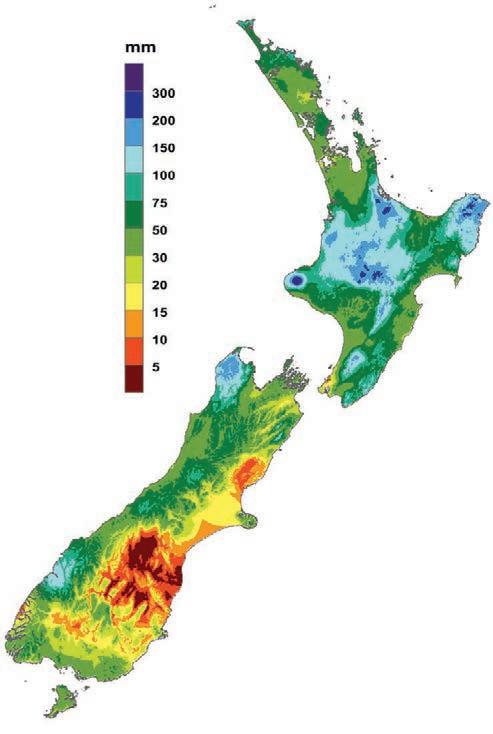
Observed daily average bright sunshine 06/09/2022 to 20/09/2022
Further south southerlies bring showers in the east and conditions start to dry up out west. Sunday looks to be a mixed bag with no clear defined frontal systems or lows moving through, some cloud with a few showers about but plenty of dry areas too.
To be toneutral,carbonweneedbepositive
Taking action now means taking control of our own future
The world’s population will reach over 10 billion people by 2050. The scientific and political consensus is that we must contain global warming to 1.5° C.
Food producers are faced with the challenge to feed a larger population while reducing carbon emissions. However, there are also opportunities.
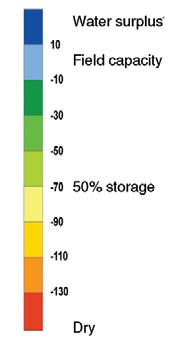
Find out about the challenges and opportunities for New Zealand’s agribusinesses at rabobank.co.nz


52
ruralweather.co.nz
Deficit at 21/09/20229am
Last 15 days rainSoil moisture Last 15 days sun

